Select language
What are you looking for.
Shutterstock/Pajor Pawel
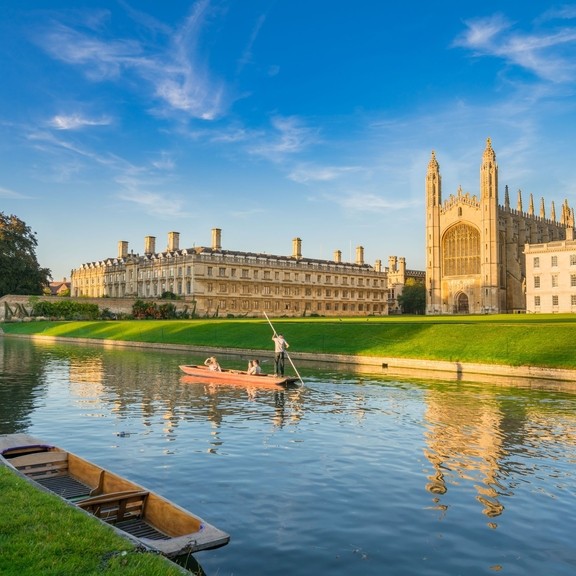

Why we love Cambridge
A hub for innovation and creativity housing the University of Cambridge, an institution dating back more than 800 years, the city of Cambridge is a hotbed of history and architecture. Take a punt on the River Cam to see the city from a unique perspective, or test your balancing skills on a stand-up paddle board for an adventurous way to see the sights.
Create lasting memories exploring idyllic Cambridge. Get into hustle and bustle of the city’s ever-changing market stalls, pick up tasty international street food, and climb up St Mary’s Church for panoramic views of Cambridge and beyond.
Cambridge Distillery
Cambridge, England
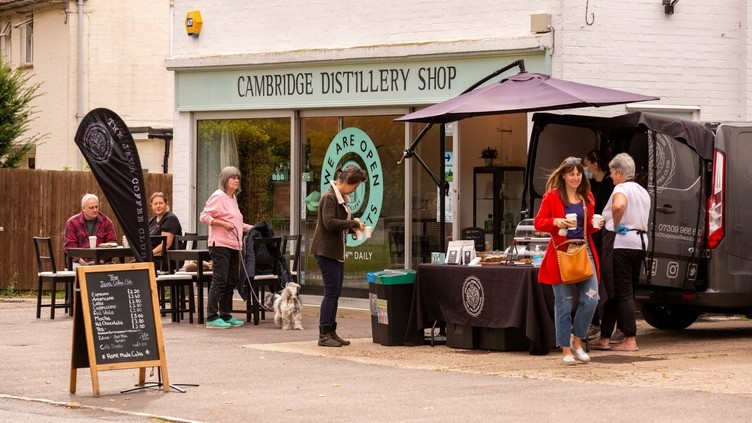
Gin master class
Set in the Cambridgeshire countryside, the Cambridge Distillery is a glorious setting for gin tastings and cocktail-making lessons. Discover a world of flavours at this award-winning distillery – from Japanese gin blended with yuzu and sansho pepper, to the rich earthiness of Italian truffle gin.
Getty Images
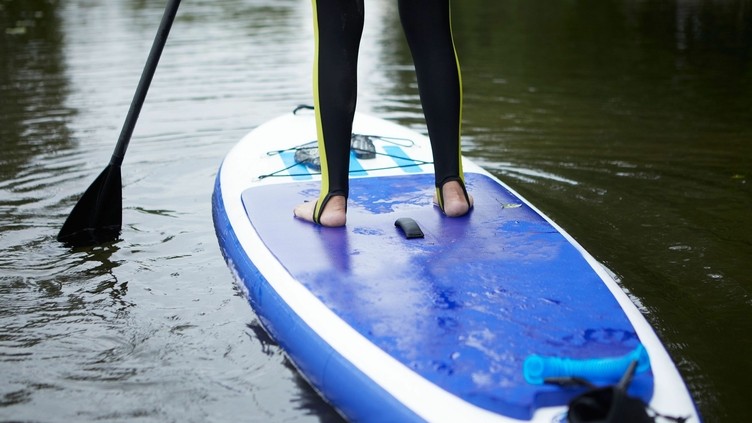
A paddling adventure
From sailing and kayaking to rock climbing and paddleboarding – this Graham Water Centre has adventures for all ages. Look out for art, craft and music workshops on selected days, such as the twice-yearly Grafham Jazz weekends.
pretty_little_cambridge
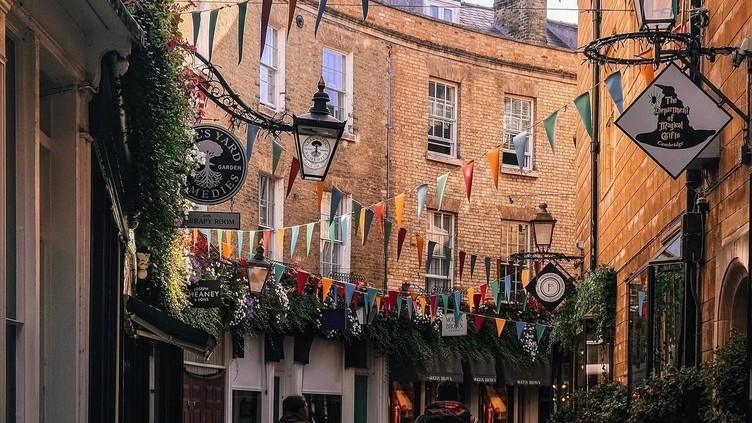
Explore Market Square
Tuck into eclectic street food in Cambridge’s bustling market . Find vintage vinyl’s, jewellery and local produce as you explore the ever-changing market stalls that open daily.
VisitBritain/JJF arquitectos
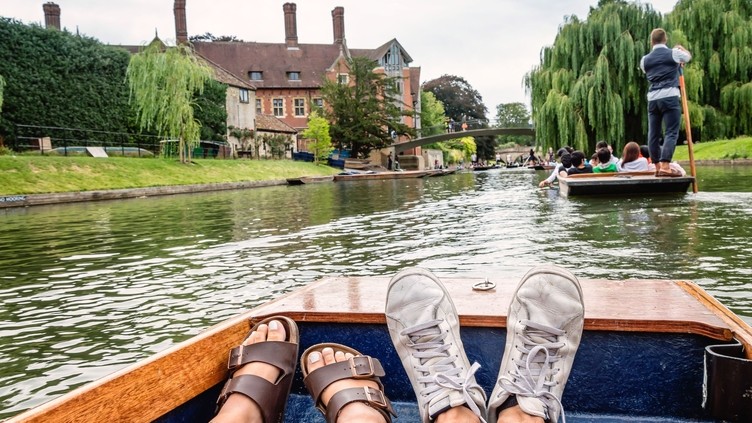
Enjoy a punt
Hit the water aboard a chauffeured punting tour , hear of the tales of former students and marvel at the stunning architecture of the iconic university buildings.
theallotmentgeek
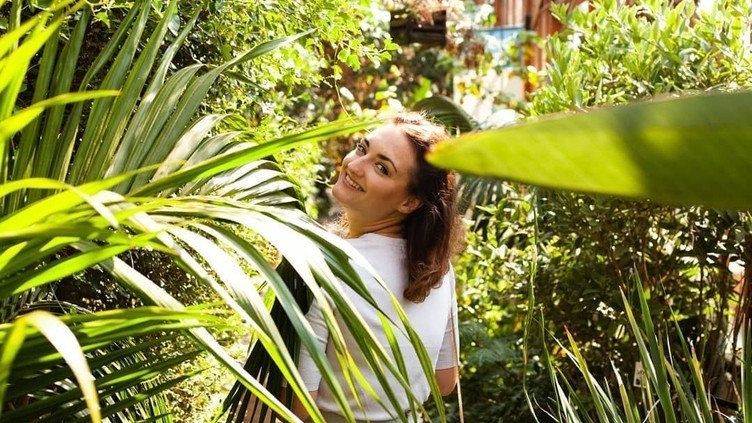
Blooming flora at the Botanic Gardens
With tropical greenhouses and British wild flowers, wander through the blooming gardens of Cambridge University Botanic Gardens for a slice of nature in the city.
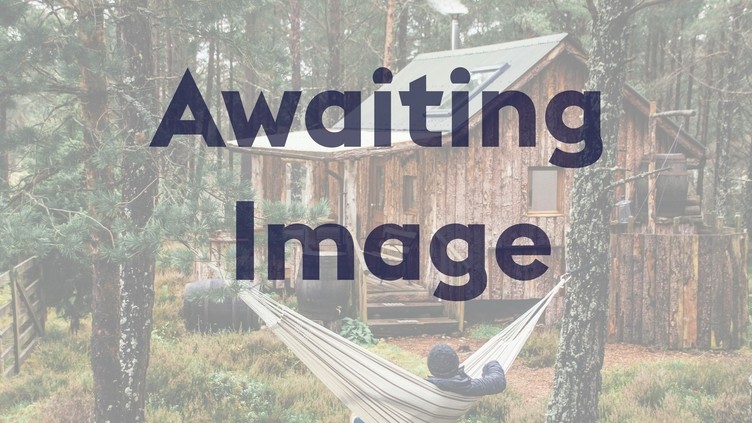
Self Guided Cambridge City Podcast Tour
Things to do in cambridge.
Choosing an option from the dropdown will automatically update the map listing results to filter by your selection.
Green Street
Fancy some retail therapy? Head to Green Street, which runs between Trinity College and Sidney Sussex College.
emily.in.england0
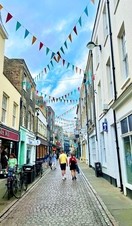
Cambridge University – The Theory of Everything
In the Theory of Everything film, St John’s College doubled as Trinity Hall, where Professor Stephen Hawking studied.
VisitBritain/Jon Attenborough
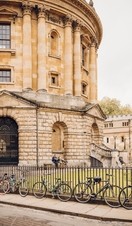
Cambridge University Botanic Garden
Over 8,000 species spread across 40 acres of beautiful gardens and glasshouses in the centre of Cambridge offer year-round interest and inspiration to visitors of all ages.

Cambridge Literary Tours
Countless writers, poets and novelists have lived in Cambridge – and these tours follow in their footsteps.
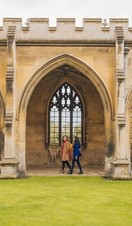
The Fitzwilliam Museum
Featuring over 500,000 artworks and artefacts from around the world, this university museum is a joy to explore.

Set in the Cambridgeshire countryside, this is a glorious setting for gin tastings and cocktail-making lessons.
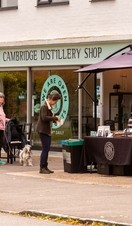
Grafham Water Centre
From sailing and kayaking to rock climbing and paddleboarding – this activity centre has adventures for all ages.

Cambridge Film Festival
From grassroots comedy to provocative documentaries, this festival screens the best independent and arthouse films.
Cambridge Film Festival /Jean-Luc Benazet

Cambridge bike hire
With its leafy riverside routes and abundant cycle hire, Cambridge is a joy to explore by bike.
Visit Cambridge
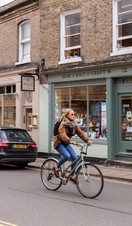
Garden House
This Cambridge restaurant specialises in simple, sustainable and oh-so fresh cuisine – all of which is locally sourced.
Garden House Cambridge
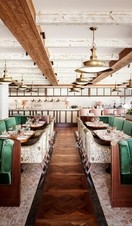
Punting on the River Cam
No trip to Cambridge is complete without a punting trip on the River Cam – so hop aboard with the Traditional Punting Company!
Traditional Punting Company
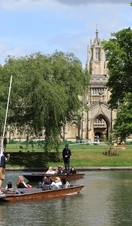
Cambridge Gin Laboratory
From mixology workshops to gin distilling, this amazing venue is a must-visit for all cocktail lovers!
Cambridge Distillery/Keith Heppell
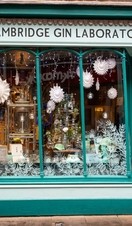
Clip 'n Climb Cambridge
For an adventurous activity that everyone can enjoy, check out this action-packed climbing centre.
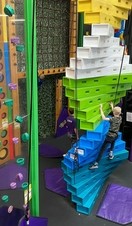
Pride Cambridge
Fill your trip with the music, colour and fun of Pride – and celebrate all-things LGBTQIA+.
Cambridge Pride
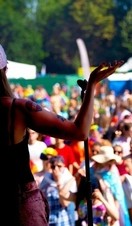
Abbey Stadium
Welcome to the home of Cambridge United Football Club – offering behind-the-scenes tours and family fun.
Cambridge United Football Club

Cambridge Junction
Want to catch the next big thing in live music, comedy and dance? You’ve come to the right place.

Cambridge Arts Theatre
Cambridge Arts Theatre/ Dennis Gilbert

Take your pick from plays, musicals, dance and pantomimes – and peek backstage on a guided tour.
Kettle’s Yard

Museum of Zoology
From dinosaur bones and dodo skeletons, to letters by Charles Darwin: this museum has a remarkable collection.

These food trucks serve everything from Spanish churros to Sri Lankan curries, at venues all over the city.

Real ales and comfort food: two simple concepts, but the Pint Shop takes them both to new heights.

Restaurant 22
Set in an elegant Victorian house, this critically acclaimed restaurant serves simple yet spectacular seasonal cuisine.

Cambridge American Cemetery and Memorial
In commemoration of the American Forces, this magnificent monument is a place of sombre remembrance.
Courtesy of American Battle Monuments Commission

Mathematical Bridge
Standing strong for over 100 years, this famous wooden bridge is a triumph of engineering.
Getty Images/Peter E Stokes
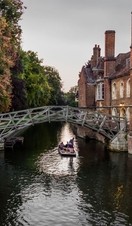
Great St Mary's, the University Church
For the best views over Cambridge, head to the tower of this 800-year-old church…

King’s College Chapel
This Christian sanctuary hosts soul-stirring chapel services, guided tours, organ recitals and seasonal celebrations.
Getty Images/Tim Stocker Photography

The Cambridge Club Festival
Music, culture and arts are top of the bill, and past headliners include Toploader and Jack Savoretti.

Cambridge Folk Festival
If this festival’s music doesn’t put a smile on your face, its friendly atmosphere and fringe entertainment will.

Cambridge Festival
This eclectic gathering features everything from film premieres and cultural debates, to live music and science lectures.

Cambridge Castle
Climb to the top of this historic hill, for views that stretch as far as Ely Cathedral.
Shutterstock

Grand Arcade
With the vast John Lewis store at its heart, this mall features over 60 brands and retailers.

The Grafton
This mall features the likes of Apple, Calvin Klein and Hollister – alongside restaurants, cafes and a cinema.

New for 2023, this retail village will combine fabulous dining, spa treatments and boutique local brands

Cam Valley Orchards
For a taste of the Cambridgeshire countryside, this charming store is filled with jams, fruits and juices.

Featured things to do
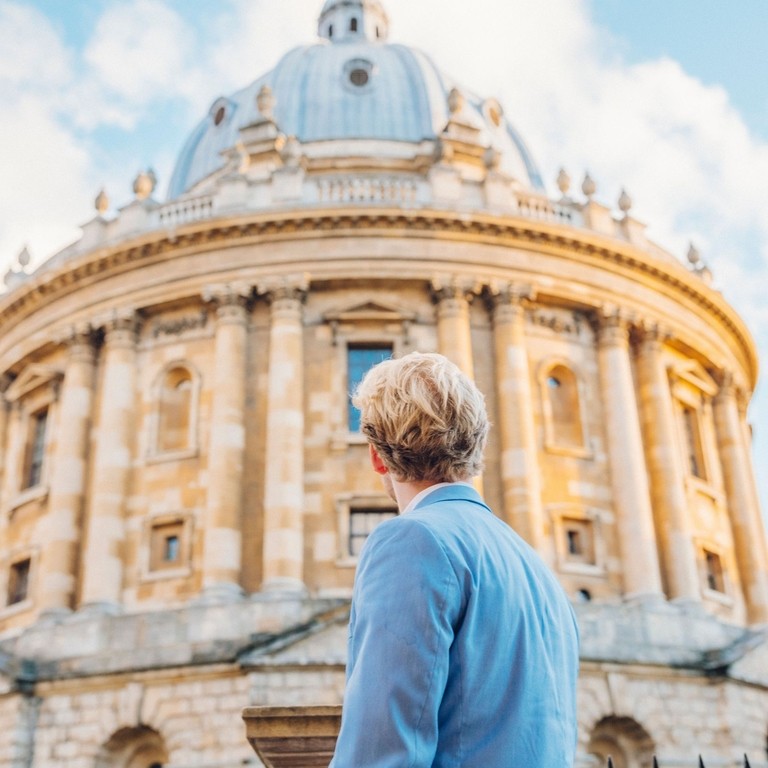
Join a scholarly tour
From tales of famous students including Isaac Newton, to stories of student pranks join a guided tour and discover Cambridge’s scholarly excellence alongside city secrets.
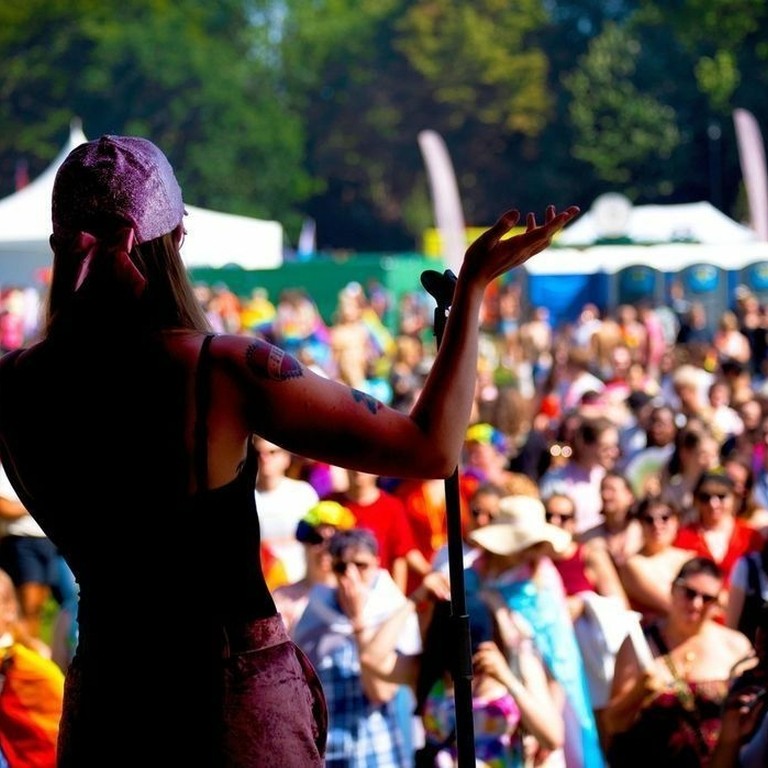
Party on at Pride Cambridge
While this annual festival is renowned for its raucous parties and amazing club nights (of which there are plenty!), its roots lie in activism – so don’t miss the loud-and-proud Parade.
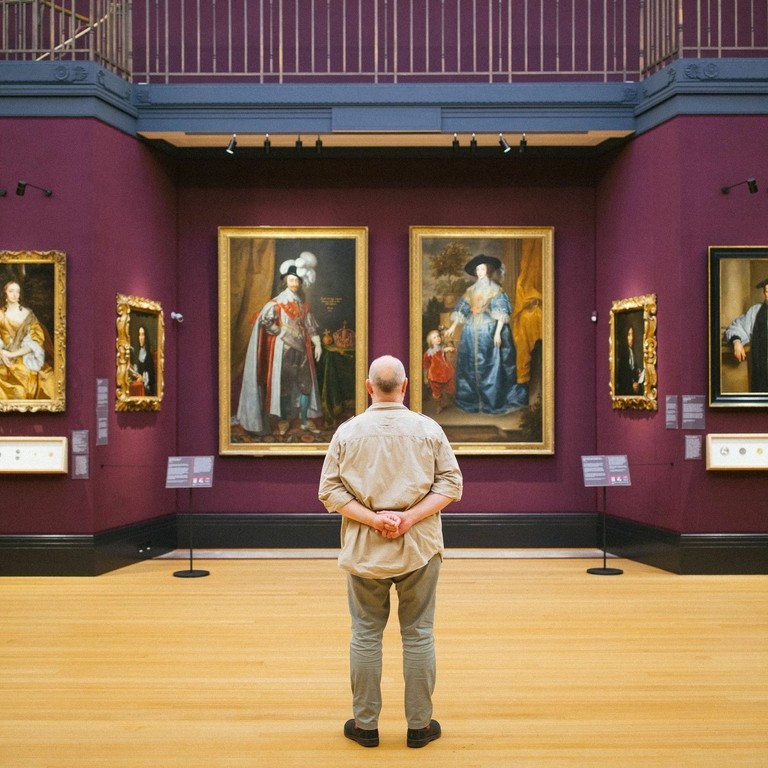
Be amazed by art
For a journey through ancient art and antiquities head to The Fitzwilliam Museum, boasting collections from around the world travel from Ancient Egypt to 20th Britain.
mrsclairedurrant

Christmas in Cambridge
Wrap up warm and discover Cambridge’s North Pole – full of festive cheer, fun-fair rides, an ice rink and seasonal stalls.
Places to stay in Cambridge
A trendy enclave packed with cool cafés and interesting shops, a hang out for those who love independent gems, and hip places, vintage dens and proper coffee.
Round Church Street
Close to all the main sights, this residential area is just a short walk from the city centre.
City Centre
The beating heart of the city, home to many famous colleges, as well as museums, shops and restaurants.
Explore nearby
An unmissable destination for travellers, London is a melting pot of history, culture and green spaces.
VisitBritain/Hazel Parreno
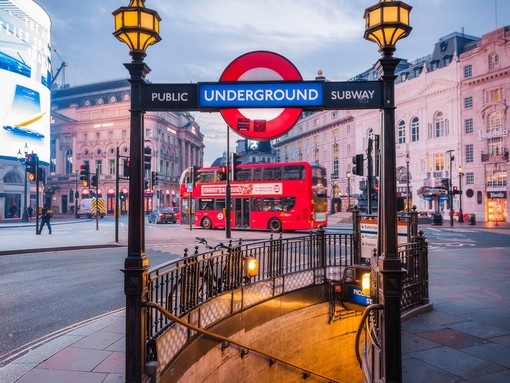
The Broads is a breath of fresh air, beautifully webbed with lakes, fens and rivers.
Norfolk Broads Direct
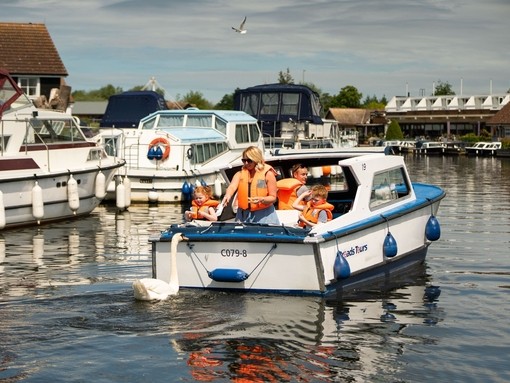
Just an hour by train from London and you’re in the city of dreaming spires.
VisitBritain/Jess Barfield
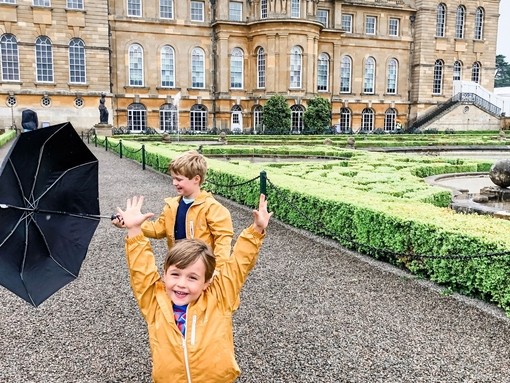
Bury St Edmunds
Suffolk’s foodie town offers more than its tantalising flavours, from its historic ruins of Abbey St Edmund to stunning parklands.
Getty Images/P A Thompson
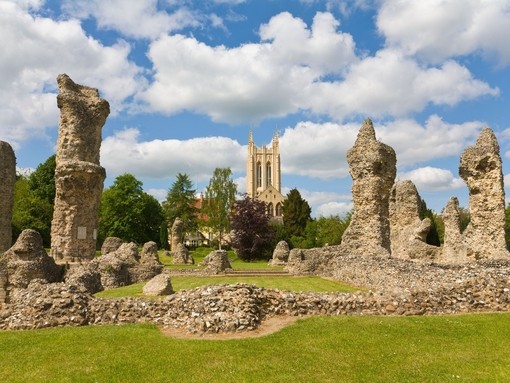
Known as the City of Stories, create your own narrative as you explore Norwich’s huge array of historic and modern day attractions.
Visit Norwich/Norwich Paddleboarding
Norwich, England
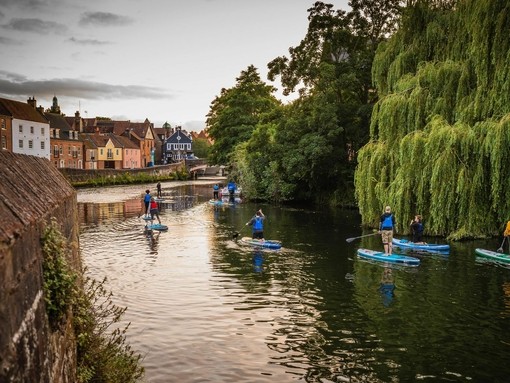
Getting to Cambridge
Cambridge is 30 miles (48 kilometres) from Stansted Airport which serves more than 140 global destinations and 38 miles (61 kilometres) from London Luton Airport .
The direct train from Stansted Airport to Cambridge takes around 30 minuets with Greater Anglia . Coach travel is also available from Stansted to Cambridge, taking around 40 minuets with National Express .
The faster trains from London Kings Cross to Cambridge take around 50 minutes with Great Northern trains, hourly services from London Liverpool Street with Greater Anglia take slightly longer.
If you’re travelling through Cambridgeshire, join the longest Busway in the World on the Cambridgeshire Guided Busway which connects Cambridge with surrounding areas such as St Ives, Huntingdon and Trumpington.
Getting around
Once you’re in Cambridge, the best way to explore is on foot, although there are a wealth of reliable public transport options too. If you decided to see the spectacular Ely Cathedral, trains north from Cambridge to Ely take 15-20 minutes. For an alternative way to see the iconic university and its striking architecture, hop aboard a hire punt along the River Cam, choose a chauffeured tour or try your hand at punting.
Stagecoach East provides regular services in central Cambridge and to the surrounding towns and villages.
If you want to discover the city at your own pace or visit places near Cambridge, exploring by bike is a great option. There are several bike hire companies and cycle tours.
Cambridge’s main attractions and things to do can all be easily explored by foot , and several companies offer guided walking tours.
Want to know more?
Head to VisitCambridge for insider tips from those in the know.
Awesome, you're subscribed!
Thanks for subscribing! Look out for your first newsletter in your inbox soon!
The best things in life are free.
Sign up for our email to enjoy your city without spending a thing (as well as some options when you’re feeling flush).
Déjà vu! We already have this email. Try another?
By entering your email address you agree to our Terms of Use and Privacy Policy and consent to receive emails from Time Out about news, events, offers and partner promotions.
Love the mag?
Our newsletter hand-delivers the best bits to your inbox. Sign up to unlock our digital magazines and also receive the latest news, events, offers and partner promotions.
- Los Angeles
Get us in your inbox
🙌 Awesome, you're subscribed!

The 22 best things to do in Cambridge right now
From punting to theatre, here’s how to smash a weekend break in this picture-perfect city

When you think of Cambridge, you probably think of the university (where a bunch of very famous and very clever people started out). But you’ll find when you visit that that culture and creativity exists all over the city, from its museums and galleries to its epic food scene.
Apt for exploration by punt, bike or foot, Cambridge boasts a hell of a lot; comedy, theatre, live music and art galleries sit against architectural marvels and lush greenery, making this not just a fascinating place but a darn romantic one, too. Looking for a quiet weekend break? This is the spot. Here are the best things to do in Cambridge right now.
RECOMMENDED: 🍝 The best restaurants in Cambridge 🏘️ The best Airbnbs in Cambridge 🚣 A perfect day in Cambridge
Words and original photos by Miriam Balanescu , a writer based in Cambridge. At Time Out, all of our travel guides are written by local writers who know their cities inside out. For more about how we curate, see our editorial guidelines .
An email you’ll actually love
What to do in Cambridge

1. Punt down the River Cam
- Attractions
- Rivers, lakes and ponds
What is it? Cambridge’s most famous pastime (apart from reading loads of books) and o n e of the best ways to see the city. The good news is you don’t even need to work your own arm muscles.
Why go? To get within sniffing distance of Cambridge and not go punting is like going to Pisa and not seeing the leaning tower. The brave and the skilled do the stick-bit themselves, but if you’re a first-timer, book a gondolier-like guide to navigate the River Cam for you.

2. See modern masterpieces at Kettle’s Yard
What is it? The most homely art gallery you’ll ever come across (because it used to be someone’s home).
Why go? Kettle’s Yard was once the residence of Jim and Helen Ede. Thanks to Jim’s job as a curator at the Tate Gallery, the couple filled their home with artworks by famous names like Barbara Hepworth and Joan Mirò. Then, in an act of extreme generosity, the Edes gave it all to Cambridge University. You can now visit it and see the art lovingly arranged around the house, which still feels like a home.

3. Find the new footlights at the ADC
What is it? This student-run theatre isn’t your typical am-dram set up: it’s where Sue Perkins, Emma Corrin and Tom Hiddleston first trod the boards, so you might witness a star in the making.
Why go? With multiple shows on a week in term time, catch dramatic monologues and cutting-edge comedy at a budget price. There are often classics like ‘Grease’ on the programme, but try to get a ticket for one of the Footlights’ original sketch shows for a proper Cambridge night out.

4. Try unusual ice-cream flavours at Jack’s Gelato
What is it? An ice-cream shop like no other. Since popping up on Bene’t Street in 2010, the tiny dessert shop has become a big draw for locals and tourists alike.
Why go? Jack’s Gelato has all your fave regular flavours, but that’s not why you should visit. Highlights have included marmalade, panettone and rooibos gelato, and white peach sorbet. To dodge the queue, a second much-less-busy branch opened in 2023, five minutes away on All Saints Passage. If you can’t get enough – and we wouldn’t blame you – pint tubs are available via their website to enjoy at home.

5. Browse the ever-changing market stalls
What is it? Grab lunch with the locals at the tightly packed street-food stalls in the centre of town.
Why go? There are some great restaurants in the city, but if you want to try something cooked right in front of you, this is your best bet. Think Chinese pancake wraps, posh Scotch eggs, veggie Brazilian fare and unbeatable mac and cheese.

6. See art and antiquities at The Fitzwilliam Museum
What is it? Cambridge’s first-rate art and antiquities museum where you can marvel at objects from around the world.
Why go? The Fitzwilliam is owned by Cambridge University and, like Oxford’s Ashmolean, is a treasure chest of a museum. Unlike the supersized British Museum in London, the Fitzwilliam is home to enough diverse trinkets, ornaments and paintings to make you marvel, but not enough to give you brain-overload. Plus, it’s free entry.

7. Eat a Chelsea bun at Fitzbillies
What is it? A cinnamon-spiced treat somewhere between a cake and a pastry, made by a century-old bakery – which happens to be a Cambridge institution almost as hallowed as the university itself.
Why go? Ignore the London-hailing name – you haven’t really been to Cambridge until you’ve tasted this bakery’s revered, irresistibly sticky raisin-studded bun. (They’ve been making them since 1920 and churn out over 200,000 of them every year.) Even though the buns are all anyone seems to talk about, Fitzbillies ’ offerings don’t stop there – they do a pretty darn good brunch and lunch too.

8. Immerse yourself in greenery at the Botanic Gardens
What is it? Some 40 acres of gorgeously green (and pink and yellow and red…) botanic gardens owned by Cambridge University, where you can earnestly study horticulture or snooze on the lawn.
Why go? Cambridge’s botanic gardens are an Arcadian paradise hidden behind a fairly nondescript entrance at the station end of town. What sets them apart from other city gardens is the woodland vibe. Lose yourself in a maze of lush foliage and leave all your troubles behind.

9. Explore King’s College Chapel
What is it? The stunning gothic chapel that dominates the centre of Cambridge. It’s a must-visit, even if church-spotting isn’t your sport.
Why go? Every festive season, the BBC’s Christmas Eve carol service is recorded in King’s College Chapel, giving sherry-filled adults the chance to embarrassingly cry over the first crystalline bars of ‘Once in Royal David’s City’. Relive this tradition with a visit inside the breathtaking chapel itself, which boasts housing the world’s largest fan vaulted ceiling – then head round the corner for drinks at The Eagle .

10. Watch a gig at Cambridge Junction
What is it? An independent arts venue where you can see comedy, music, theatre, spoken word, movies and more.
Why go? The Cambridge Junction must be one of the UK’s best music venues. It makes some canny programming choices, is run by a friendly team and offers everything from alternative rock and folk to one-off Edinburgh Fringe previews from top stand-ups. Don’t miss its incredible monthly queer night Club Urania, which always has a stunning line-up of performers but most of all is just a really nice place to be.

11. Grab a drink at The Maypole
What is it? Only the best pub in the whole of Cambridge, where you can choose from an unrivalled array of beverages, with separate menus dedicated to Belgian beers, gins and whiskeys.
Why go? The Maypole is a few paces away from the ADC and it’s where most actors, crew and audiences head post-show. It’s also one of a handful of freehouses in the city, meaning it has a seemingly endless selection of real ales on tap and local brews. Take your pick from its impressive range of tipples – from chocolate stouts to cherry blossom gins – and listen in on some thespian gossip.

12. Take a stroll through Grantchester
What is it? A tiny village on the outskirts of Cambridge, most famous for its sprawling, riverside meadows – and being the filming location for the BBC detective series of the same name.
Why go? Despite its small size, this quaint village packs a lot in. The Orchard Tea Garden was once a favoured haunt of the city’s literati. (Rupert Brooke, Xu Zhimo, E. M. Forster and Virginia Woolf were apparently all regulars for cream tea.) The local parish church keeps a shrine to the fictional crime-solving priest in Grantchester’s TV namesake. And, murder aside, its meadows are the perfect picnic spot.

13. Unearth vintage treasures along Mill Road
What is it? A long, street art-splashed road to the west of the city that encompasses quaint terraces and cool independent shops.
Why go? You’ll find vintage shops galore along Mill Road, so if you’re looking for some ’70s-style homeware or an offbeat addition to your wardrobe, spend an afternoon browsing to your heart’s content. Vinyl nerds should head to Relevant Records for secondhand LPs and new releases (and some great coffee). If it’s food you’re after, Italian deli Limoncello may well have the best Mediterranean snacks in East Anglia.

14. Get nerdy at the Scott Polar Research Institute Museum
What is it? A niche museum that’s all about Cambridge University’s world-class polar research.
Why go? Fancy yourself a bit of an explorer but only ever manage to take day trips around the UK? Well, the Polar Museum at the Scott Polar Research Institute will introduce you to genuinely intrepid (and cold) historic explorations of far-flung corners of the globe, all from the comfort of Cambridge. Free entry.

15. Tour the city on two wheels
What is it? Cambridge is well known for its sheer barrage of bikes. Because of this, the city is well set up for riders, and locals on foot are used to dodging wayward wheels.
Why go? Given its modest size, Cambridge is best navigated by bike. There are loads of places to hire them from , and you can lock them just about anywhere. There are plenty of cycle lanes – sometimes so well-hidden that a pack of bikes seem to come out of nowhere, so keep an eye out. Cambridge really is a cyclist’s paradise.

16. Feed your inner bookworm at Heffers
What is it? Sure, it’s a bookshop, but what a bookshop. It's perhaps better described as a palace of literature.
Why go? If there’s a city in the UK where a person shouldn’t have to apologise for being a bit of a geek, it’s Cambridge. Feed your inner bookworm until it bloats and blossoms into a beautiful butterfly at Heffers , the oddly named bookshop where browsing and buying are both a pleasure.

17. Order cocktails at Bar 196
What is it? The go-to spot to sip a roasted coconut daquiri al fresco while watching the world go by.
Why go? From Bar 196 ’s handwritten menus to the unusual (and slightly unsettling) picture collages on the loo walls, this cocktail bar has gained cult status among Cambridge locals. Its extensive drinks list is a mix of familiar favourites and twists on old classics – with the bar staff happy to whip up pretty much any drink on request. In summer, you might have to fight for a prime seat on the pavements of Mill Road, where you can feel Parisian as the sun sets over Mill Road bridge. And, in winter, this bar’s dimly lit interior is a great place to cosy up.

18. Cross the mathematical bridge
What is it ? A bridge in Queens’ College that looks curved but is made entirely of straight timbers. It’s so clever that Oxford copied it, but you should see the original.
Why go? Perhaps you never realised you wanted to see a great feat in mid-eighteenth-century architecture, but you should. The design for this bridge was dreamed up by engineer James King – though tour guides love to spread the rumour that this bridge was originally designed by Sir Isaac Newton. Legend has it that nothing but the wooden beams held it up, but after the wood rotted and no one could remember what exactly Newton had done, they had to rebuild it with nails. While sadly not true, for definite Newton-related landmarks head down the road to Trinity College to see the fabled tree responsible for the scientist’s theory of gravity.

19. Catch a glimpse of The Corpus Clock
What is it? A very large and bizarre clock designed to make you fear the incessant ticking away of each moment on earth. Just don’t head here if you actually need to know the time.
Why go? The Corpus Clock is on the front of the Taylor Library at Corpus Christi College. It’s less a clock (although it is accurate every once in a while) and more of an art piece. The marvellously creepy insect straddling it appears to ‘eat’ time – a reminder that we don’t have as much of it left as we think.

20. Climb to the top of Great St Mary’s
What is it? A panoramic view of the city, 123 steps up.
Why go? St Mary’s is next to the marketplace, meaning it’s easy to get to, and you’ll have plenty of energy left for the steep but manageable climb to the top. And boy is the view worth it. The church is even older than the university – with the foundations built as early as 1010 (fun fact: King Henry VII donated 100 oak trees to construct its roof). Want to learn more history? Then have a go on the building’s interactive touch screens.

21. Visit the Centre for Computing History
What is it? A museum full of vintage electronics, including everything from a mammoth microprocessor to Pac-Man.
Why go? If you came to Cambridge to geek the hell out, you might as well do it properly. Get in a metaphorical time machine and remind yourself of the days before iPhones and Alexas. We bet you’ll love it, because who isn’t obsessed with the ‘90s? Gen Z, prepare to have your minds blown.

22. Go behind-the-scenes on a university tour
What is it? A student’s eye view of the world-famous university, giving visitors an insider’s introduction to its most beautiful nooks and crannies.
Why go? As a city, Cambridge is pleasingly compact and easy to navigate on foot. The same is true of the university, which dominates the centre. Take a stroll through and around the institution with those who know it best as a guide: real-life Cambridge students.
[image] [title]
Discover Time Out original video
- Press office
- Investor relations
- Work for Time Out
- Editorial guidelines
- Privacy notice
- Do not sell my information
- Cookie policy
- Accessibility statement
- Terms of use
- Modern slavery statement
- Manage cookies
- Advertising
- Time Out Market
Cambridge City Council
Tourism in cambridge: information for visitors.

Cambridge is a vibrant, modern city with a colourful history that attracts visitors from around the world.
There are shopping centres and markets, museums, parks and open spaces, and much more. And you’ll be spoilt for choice of places to eat and drink, and places to stay.
Visit Cambridge
Visit Cambridge is the city’s official destination management organisation. The website provides ideas and information about events, tours and experiences you’ll never forget.
We own and manage Visit Cambridge with Cambridge BID and Fitzwilliam Museum Enterprises.
Was this page helpful?
Service related queries
For questions about a service we provide, please use our contact us form .
Promotional content
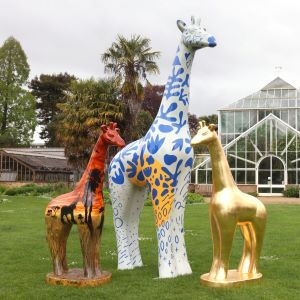
Giraffe sculpture trail in Cambridge
Locate large and small giraffe sculptures in Cambridge city centre until 2 June 2024.

Cambridge Street Aid
Find out about support for rough sleepers in Cambridge and how you can help.

Report it online
If you see something that needs fixing, removing, or investigating, report it to us using our online forms.
- Allotments and community gardens
- Bereavement services
- Bins, recycling and rubbish
- Boat mooring and punting
- Building control
- Business and economy
- Climate change and sustainability
- Communities and people
- Cost of living help
- Council Tax
- Customer services
- Cycling and walking
- Food safety
- Grants and funding
- Home energy and water use
- Licences and permits
- Parks and playgrounds
- Pest control
- Pollution, noise and nuisance
- Procurement and contracts
- Sport and fitness
- Street and park maintenance
- Transport schemes
- Urban growth
- Vehicle services, MOTs and repairs
- Your council
Discover the best of Cambridge
See its unmissable sights with award-winning guides
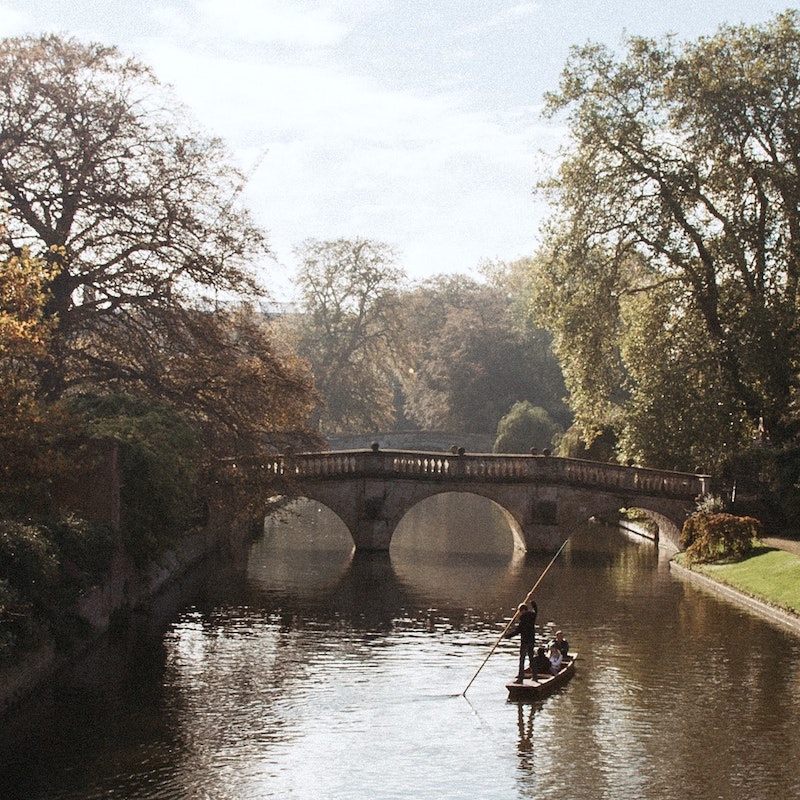
COVID-19: Please follow local guidelines whilst visiting.
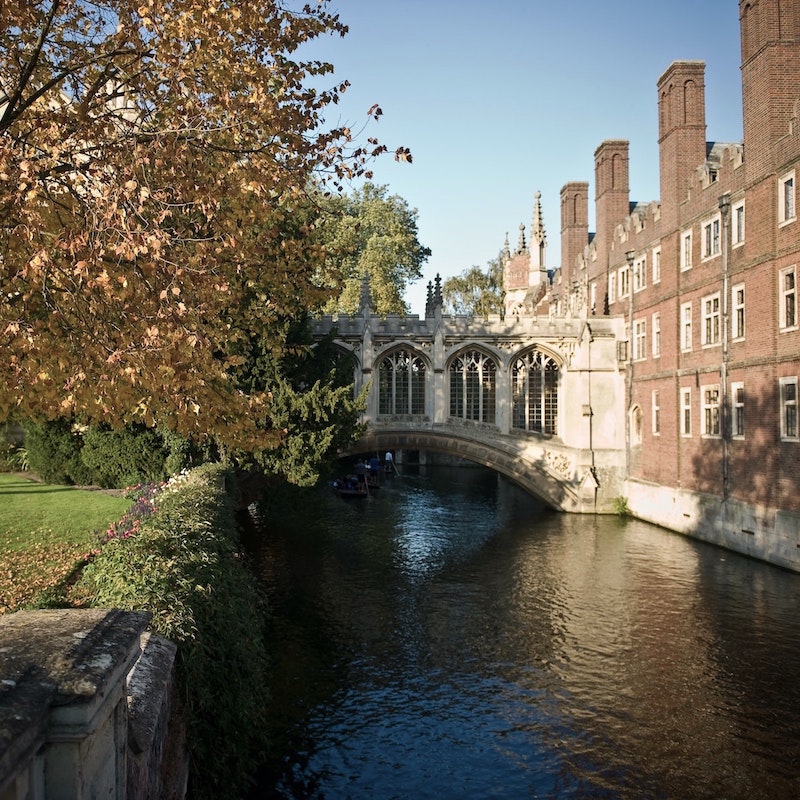
Cambridge tours
We've partnered with award-winning providers to offer tours and activites that showcase the best of Cambridge. When you visit Cambridge, you'll be greeted by guides that love the area and can’t wait to share its history with you.
They can tailor your experience to your needs and interests, and no two tours are the same.

Don't miss this excellent overview of the town! There is so much history here it is incredible.
Our guide made the time simply fly. He was full of interesting facts and gave an excellent tour!
I was born in Cambridge, but I learned more about it in these two hours than during my lifetime.
News and articles
by Kaitlyn Thorne
Virtual Tours of the David Parr House
Virtual tour of the David Parr House Key Information Price: £12/person (£13 with a donation) Duration: 1 hour When: Wednesdays / Fridays Ti...
Nov 1, 2020
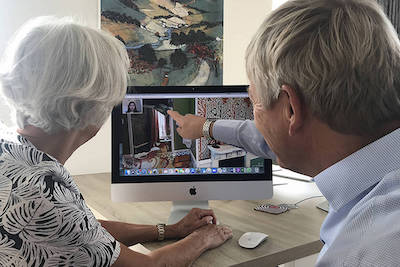
Best luxury hotels in Cambridge
Cambridge has a wide range of hotels to match all budgets. The City Center hotels are on the pricier end of the spectrum and have great restaura...
Oct 5, 2020
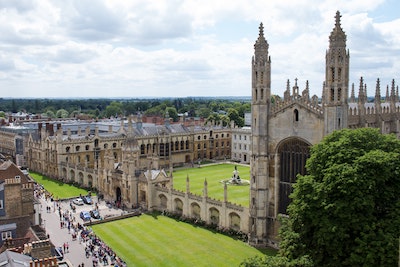
Best affordable hotels in Cambridge
Whilst most of the more affordable hotels are on the edges of the city center, Cambridge itself is quite small so getting around won’t take you ...
Sep 15, 2020
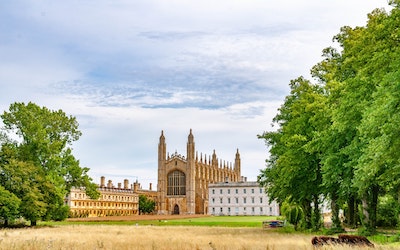
Best Italian restaurants in Cambridge
We love our Italian Food at Visit Cambridge. Whether you’re looking for a slice of pizza, or a sumptuous pasta for lunch or dinner, here are our...
Aug 23, 2020
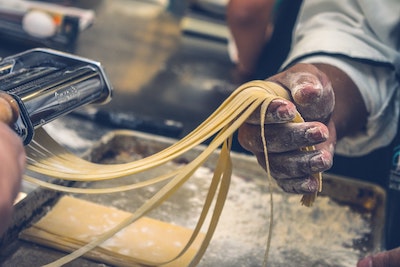
by Adam Field
Visit Cambridge Ltd launches
Visit Cambridge Ltd is a private business, founded by a team with strong ties to the City of Cambridge. Our mission is to showcase its beauty an...
Jul 30, 2020
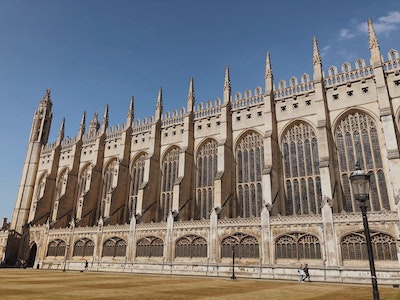
Get to know the real Cambridge with these can't miss spots

Oct 2, 2021 • 9 min read
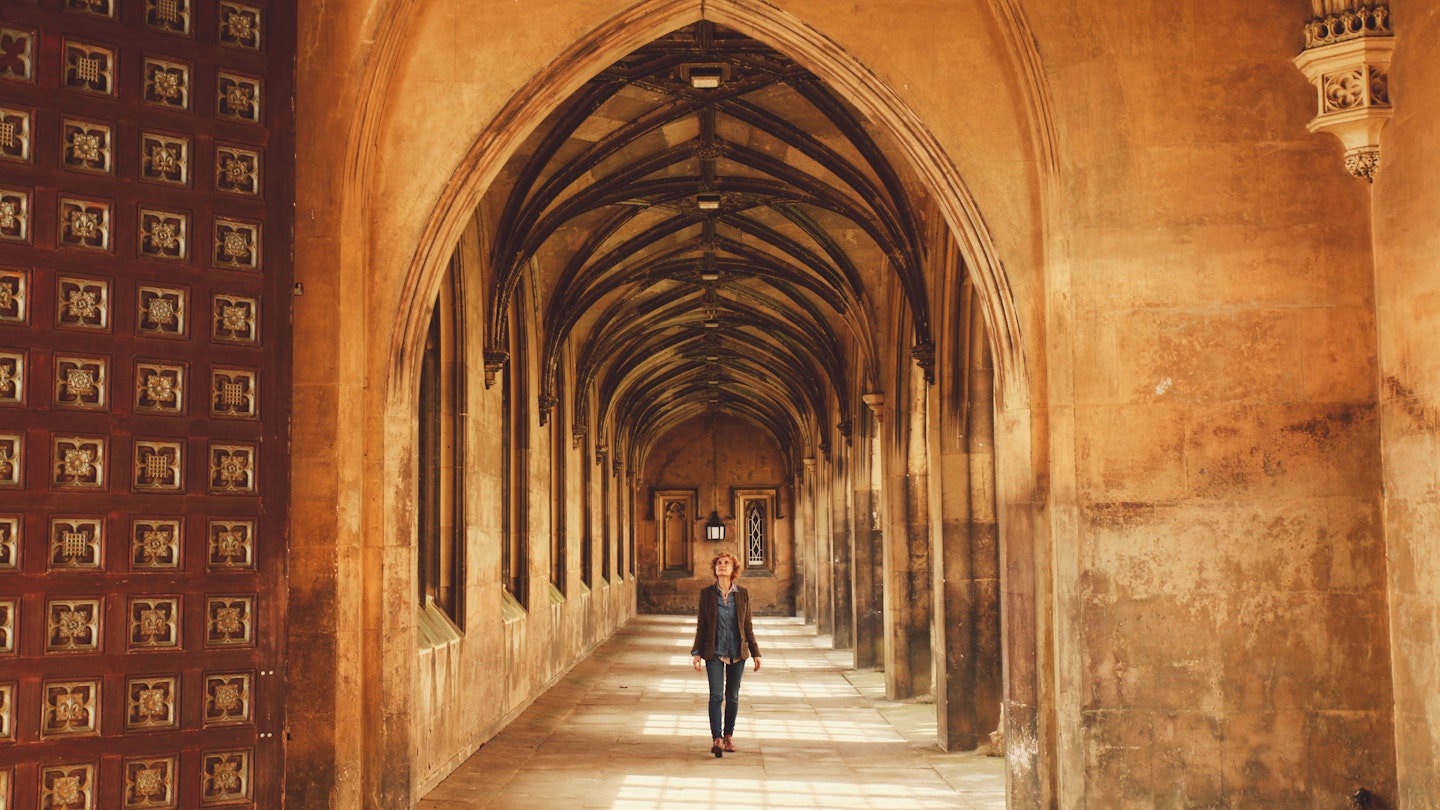
Medieval magnificence flows through the streets of Cambridge and many activities are free © Cristian Bortes / EyeEm
Medieval magnificence flows through the streets of Cambridge like the lilting waters of the River Cam, which meanders past the ‘backs’ of such legendary seats of learning such as King’s College, Trinity College and Peterhouse.
Viewed from a gently gliding punt, or on foot from the tangled lanes that sneak between the colleges, Cambridge is exceptionally beautiful, and arguably more accessible than Oxford, thanks to its manageable scale and lower tourist profile. It’s also great fun, with historic pubs, student-oriented places to eat, picnic-friendly college greens and the ever-nostalgic charm of punting on the river.
There’s loads to see and many things are free, but it pays to make a plan before you arrive. Here are some tips for the top things to see and do in Cambridge.
Note: due to Covid, many colleges have restricted entry to pre-booked visitors, or closed to non-students, but you can still view these lavish establishments from outside. Things can change quickly, so check the latest advice before you visit.
King’s College Chapel

Flamboyantly finished in carved Gothic flourishes, King’s College dominates the centre of Cambridge. With advance booking, you can experience the full grandeur of the 16th-century college chapel , whose extravagant wood-carving and stained glass is only exceeded by the world’s largest fan-vaulted ceiling towering overhead.
The chapel was founded by Henry VI, but it took a further five English monarchs to complete this extraordinary monument (look for Henry VIII’s carved initials inside, added during the final stages).The stained glass is original–Oliver Cromwell reputedly ordered it spared during the English Civil War out of nostalgia for his own college days.
Trinity College
The largest Cambridge college, Trinity is wrapped around an enormous quadrangle that emerges dramatically as you step through the college’s monumental Tudor gateway (with its stern statue of Henry VIII, holding a table leg rather than sceptre after a student prank). Grand gothic architecture rises on all sides, and the college’s famous Wren Library has original copies of works by Shakespeare, Newton and Swift.
Check the latest on their opening policy; if the interiors are closed to non-students, you can still view the dramatic frontage and the rear of the college from a punt on the Cam.
The Fitzwilliam Museum

The Fitz is a museum to rival anything in London, Edinburgh or Oxford. This was one of the first public art museums in Britain, displaying treasures accumulated by Viscount FitzWilliam in the 18th-century, alongside a treasure trove of more recent acquisitions. Egypt, Roman Britain and ancient Cyprus are particularly well represented, as are ancient and modern ceramics and glassware. Upstairs are paintings by da Vinci, Rubens, Picasso and other big brush-wielders.
Take a punt along the Cam
Okay, so it’s unashamedly touristy, and fairly costly, but hiring a punt for a gentle glide on the Cam is one of the best ways to admire the medieval city. From the punt stations at Mill Lane and Quayside, you can swoosh past the backs of the colleges and view the genteel reality of student life behind the college’s lavish facades.
En route, you’ll pass under a string of elegant college bridges, from Christopher Wren’s graceful stone construction at St John’s College to the flimsy-looking Mathematical Bridge at Queen’s College. Take your pick from self-poled punts or chauffeur-driven boats with a waterborne tour; Scudamore’s is the biggest operator. For a change of pace, head upstream to the picture-postcard suburb of Grantchester, a favorite student escape.

Browse the latest from the University Press
The University Press bookshop on Trinity St is a monument to knowledge, and a great place to get a feel for the latest high-brow thinking to come out of the Cambridge colleges. University publications cover everything from climate change and genetics to gender identity and social reform; even reading the dust covers of the latest tomes will leave you measurably better informed.
Gonville & Caius College
With the unusual distinction of having been founded twice (hence the double name), Gonville & Caius is one of the best colleges to view from outside. Three magnificent gates–known as Virtue, Humility and Honour–invite students into the college, and usher them onward to graduation at the adjacent Senate House, via the occult-looking Porta Honoris. If you’re totting up famous alumni, this was the alma mater of Crick and Watson and Stephen Hawking.
Have a pub debate

Some of the mysteries of the ages were solved over pints in Cambridge’s public houses, and you can still listen in on some serious intellectual discussion today. Favored watering holes include the Eagle , where Crick and Watson talked over the structure of DNA till the wee hours, and the hipster-friendly Cambridge Brew House , with brews on tap from the on-site microbrewery.
Watch sunset from the Varsity roof terrace
The boutique Varsity Hotel emerges unexpectedly from the backstreets north of the centre, and its open-air Roof Terrace bar is undisputedly the best spot in the city to watch the sunset. With a cocktail in hand, you can look out over a sea of church spires and college turrets, but book ahead; space is in demand on any warm weekend evening.
Go to the Footlights
Cambridge’s ADC Theatre is the home stage of Footlights , the university’s student legendary comedy club. The troupe has been putting witty students on stage since 1883, turning out such heavyweights of comedy as Richard Ayoade, Stephen Fry, Hugh Laurie, Miriam Margolyes, Emma Thompson and the Monty Pythons. Check the websites for upcoming events.
Great St Mary’s Church
Facing off against the opulent chapel of King’s College, Great St Mary’s Church may not win the battle of the chapels, but it does offer dizzying views over the college quarter from the top of its 113ft (38m) tower. A leg-straining climb up a narrow spiral staircase will deliver you to the rooftop, with vertiginous views directly over King’s College, the Senate House and Gonville & Caius College.
Have a Chelsea bun at Fitzbillies
You haven’t been to Cambridge until you’ve stepped in for a Chelsea bun at Fitzbillies . Generations of students have gathered here for a carb hit between lectures, and their buns are drowned in sticky syrup and jam-packed with spices and currants. Eat in, or grab some neatly boxed to go and retreat to one of the college greens.
Pedal the backstreets

Generations of Cambridge students have navigated the streets by pedal power, and it’s easy to join them by hiring a bike in town or at the train station. To recharge after a scoot around the city, drop into Espresso Library , just east of Parker’s Piece green, which lures in bikers with the aroma of strong coffee and wholesome world food offerings.
Kettle’s Yard
Some museums keep the art at arm’s length, but not Kettle’s Yard . Previously the home of a curator from London’s Tate Gallery, this fascinating museum is full of lived-with artworks, from paintings and sculptures to found objects, scattered around lived-in spaces. Big names like Henry Moore and Miro are represented, but it’s the work by less well known artists that sticks in the memory.
Take a pub and food crawl along Mill Road
No matter where you are, student life means pub crawls followed by a kebab or curry and Mill Road is where these sessions usually stagger to a halt. Start off in a town pub and drift slowly eastwards as the evening wears on, then browse the inexpensive Asian and Middle Eastern eateries on Mill Road.
Have a packed afternoon tea
It says something about the demographic of the university intake that packed afternoon teas are a thing. For an elegantly boxed selection of buns and sandwiches to munch daintily on a picnic blanket at Jesus Green, head to Harriet’s Cafe Tearooms on Green Street and pretend you’re pausing for a sugar hit before rushing off to a debate.
Go church hopping

As well as the college chapels, Cambridge is studded with interesting medieval churches, many with famous pedigrees. Little St Mary’s is a popular stop for its familial links to US president George Washington, but the wonderfully arcane-looking Round Church is more atmospheric. One of only four round medieval churches in Britain, it was built by a mysterious order of monks after the First Crusade and it hides one of the clues to the location of the Holy Grail...okay, we can’t back that up, but if it turned out to be true, we wouldn’t be surprised.
Have a splash at the Jesus Green Lido
There are far too many punts about for the Cam to be suitable for swimming, but the Jesus Green Lido comes a close second best. This unheated, open-air pool offers a similar jolt-you-awake experience to river swimming, and it’s been welcoming locals and visitors since the 1920s. On sunny days, the sun-bathing spots around the pool are in heavy demand.
Cambridge University Botanic Garden
Like Kew Gardens in miniature, Cambridge’s botanic garden is a chlorophyll-filled wonder. Most make a beeline for the tropical greenhouses with their steamy collection of palms and ferns, but it’s the back paths, hidden clearings and secret spaces in between the planted beds that make the gardens so special. With kids in tow, it’s a great spot for a game of hide and seek.
St John’s College
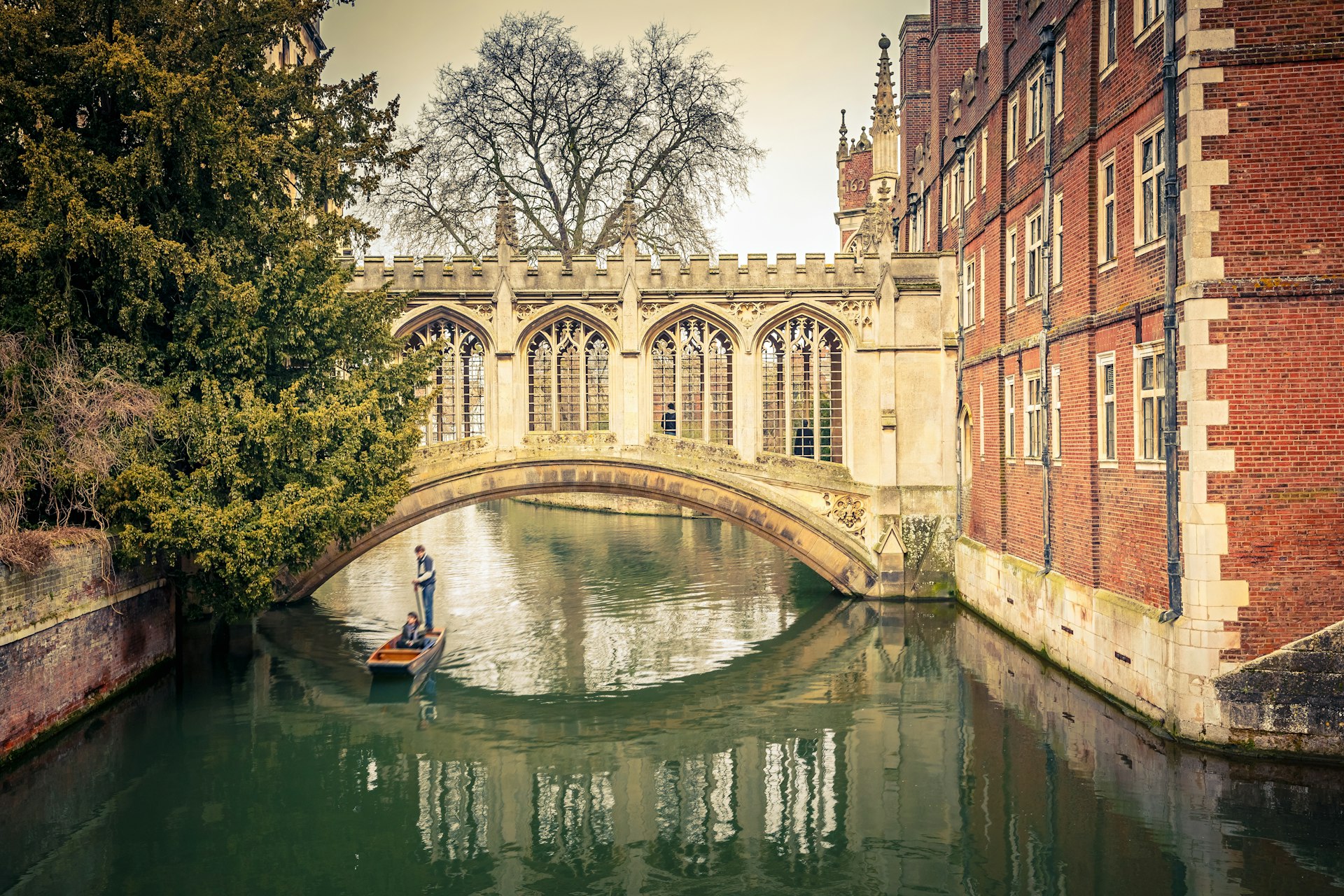
Every Cambridge college has a list of famous alumni as long as a punting pole, but the honors list at St John’s is particularly cosmopolitan. William Wordsworth, William Wilberforce, former Indian PM Manmohan Singh and writer Douglas Adams all studied here. As well as a full hand of stately college buildings, the college is famous for its medieval Bridge of Sighs, a masterpiece of stone tracery that often forms the focus for college pranks.
Cruise the college museums
Assuming they’re open to non-students (check first), the university’s museums are a fabulous resource for anyone craving an instant education. College museums cover everything from archaeology and anthropology to zoology and the history of science itself, but perhaps the stand out is the Polar Museum , devoted to the likes of Scott of the Antarctic, Roald Amundsen and Ernest Shackleton, with original items from polar expeditions.
Detour out of town to the Imperial War Museum
You’ll have to day trip out of Cambridge to reach the Imperial War Museum at Duxford, but it’s worth it for an epic spread of military history, much of it of the aeronautical variety. Britain’s largest aircraft collection covers everything from famous WWI and WWII fighters and bombers (Hurricanes, Spitfires, Lancasters and the like) to a retired Concorde. Check the website for upcoming events; many aircraft here still take to the skies for annual airshows.
You May Also Like:
Bards and Roman baths: best places in England The 8 most dramatic hikes in England Top 9 road trips in England
Explore related stories
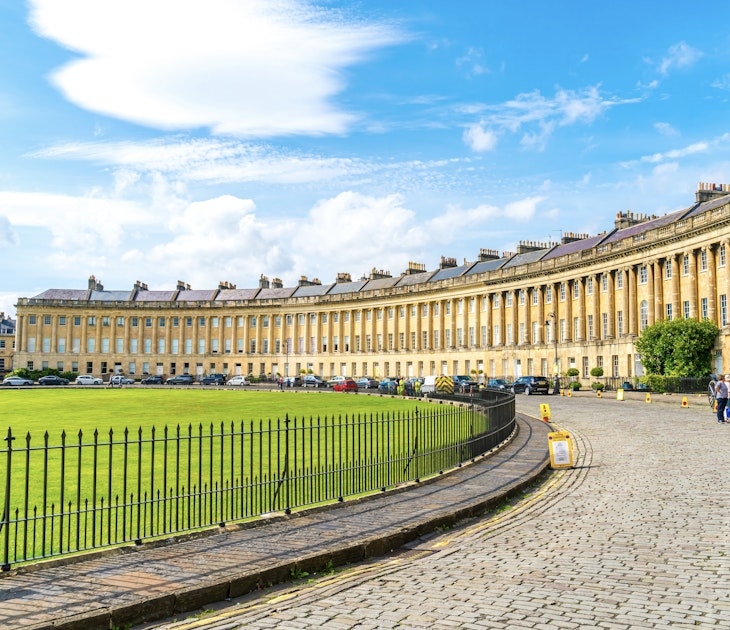
Feb 26, 2024 • 10 min read
These 16 cities, parks and other incredible sights encompass the breadth, beauty and vitality of England.

Jan 20, 2023 • 4 min read

Apr 13, 2022 • 7 min read
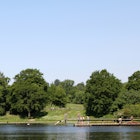
Apr 27, 2015 • 4 min read

Apr 19, 2024 • 7 min read

Apr 19, 2024 • 6 min read
Inspiration
- Unique Cambridge
From making your own gin with one of the world’s most innovative distilleries, to trying the best of the Cambridge food scene – here are some uniquely Cambridge experiences to seek out during your stay
- Art & Exhibitions
- Comedy & Entertainment
- Family Friendly
- Cambridge Calendar Highlights
- List Your Event
- Museums & Galleries
- Universities & Colleges
- Theatres & Cinemas
- Parks & Open Spaces
- Walking & Cycling Routes
- Food & Drink
- Key Sites to Visit
- List Your Business
- Explore Cambridge's Colleges
- Accommodation
- Travelling into Cambridge
- Driving into Cambridge
- On Your Bike
- City Ambassadors
- Venue Finding Service
- Cambridge for Couples
- Dog-friendly Cambridge
- Family Fun in Cambridge
Welcome to our new website! If you are a local business and would like to add an event or business, please follow this link

- Plan Your Trip
Travelling To Cambridge
If you are coming from Stansted Airport to the South of the city, you can get the direct Cross Country train towards Birmingham and get off at Cambridge.
From London, there are two direct trains – the slower London Liverpool Street has more stops (1 hr 30 mins), which would also be suitable if you are coming from Shelford, Audley End, Bishops Stortford, parts of Essex and more. The popular fast train is direct from Kings Cross and takes around an hour.
From Suffolk the best train is the Greater Anglia service to Cambridge, starting at Ipswich and calling at Needham Market, Stowmarket, Elmswell, Thurston, Bury St Edmunds, Kennett and Newmarket.
Those traveling from the North of the city are best suited to take the Great Northern service from Kings Lynn to Cambridge, stopping at Watlington, Downham Market, Littleport, Ely, Waterbeach and Cambridge North.
Park & Ride
All Park & Ride buses are accessible for wheelchair users and those with buggies or pushchairs. They also feature free wifi, USB charging, and greener engines. Park & Ride is a great option for those wishing to skip the traffic in the city centre, and save money and time on parking.
Babraham Road
Babraham Road Park & Ride suits those needing to visit Addenbrookes and the city centre with its final stops being near The Backs, Grafton Centre and Parker’s Piece. This is easily accessible via the A1307 from locations such as Haverhill, Horseheath, Linton, Great Abington and more.
Trumpington
Easily accessed via the M11 and the A10, Trumpington services those traveling from Stansted Airport, London, Royston, Stevenage, Huntingdon and Peterborough.
Cambridge, Newmarket Road
This Park & Ride is suitable for people coming from Suffolk locations such as Newmarket, Bury St Edmunds on the A1303 or the A14, and those entering from the North via the B1047 from Horningsea and Waterbeach.
Madingley Road
Situated to the West of the city, Madingley Road is best for those traveling on the A1303 from locations such as St Neots, Bedford and Milton Keynes, and the M11 from Stansted Airport or London.
Parking in the city
Cambridge is connected to many locations via the A14, M11, A10 and the A428 from Cambourne, and if you are choosing to drive to the centre and park in town, there are multiple options.
Castle Hill, 15 min walk to centre (112 spaces)
- Monday to Sunday, 24 hours
- Ranges from £2.60 – £8.20, free between 7pm and 8am (9am Saturdays)
- First 3 hours free for Blue Badge holders
Grafton East, 15 min walk to centre (526 spaces)
- Ranges from £2.30 – £28.30, peak time charges apply
- Evenings and overnight: 80p per hour
Grand Arcade, in centre (953 spaces)
- Ranges from £2.50 – £30.40, peak time charges apply
- Evenings and overnight: £1.20 per hour
Find more information on parking and charges at the Cambridge City Council website .
Guided busway
The Cambridgeshire Guided Busway connects Cambridge, Huntington and St Ives and is the longest Busway in the world. It is a perfect way to avoid congestion coming in and out of the city.
It is situated to conveniently serve Peterborough, Yaxley, Sawtry, Huntingdon, St Ives and more from the North West and locations such as Royston, Melbourn, Foxton, Harston and Trumpington from the South.
Did you know?
With over 800 years of history, tread in the footsteps of many famous faces, including Charles Darwin, James Watson and France Crick, Rosalind Franklin, Sylvia Plath and Professor Stephen Hawking.
Finding the Universe
Travel tales, photography and a dash of humor
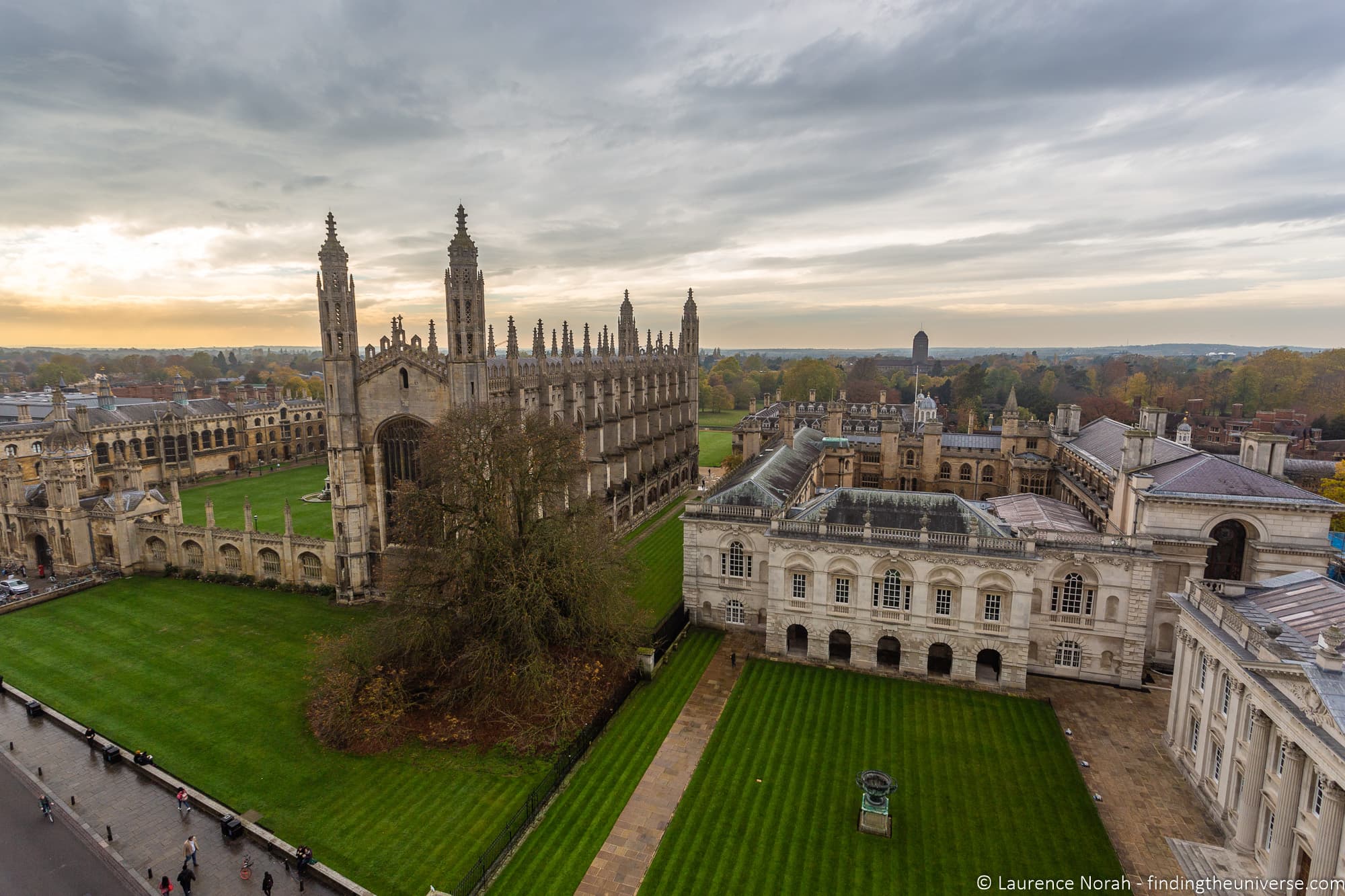
27 Things to do in Cambridge England: A Detailed Guide + Tips & Map!
Last updated: December 16, 2023 . Written by Laurence Norah - 4 Comments
In today’s post, we’re going to share with you all our favourite things to do in Cambridge. As you’ll find out, there’s something for everyone in this compact city!
Located a 1-hour journey north of London, Cambridge is one of the UK’s most well-known university cities.
With a history dating back to the 1st century AD, there’s a great deal to see here to fill up at least a day of your time, and Cambridge is a popular place to visit as a day trip from London. From traditional pubs to punting trips to awesome museums and gorgeous old churches and colleges, Cambridge has something for everyone.
We’re also going to share our tips for how to get around Cambridge, where to stay in Cambridge, tips for getting here and away, and the best time of year to visit Cambridge. Let’s get started.
27 Things to do in Cambridge UK
As you’ll see from this list, there’s no shortage of things to do in Cambridge, from ancient English pubs to fantastic museums and gorgeous colleges.
We’ve included what we think are some of the best attractions in Cambridge, and hopefully you’ll find plenty of ideas for your trip to the city.
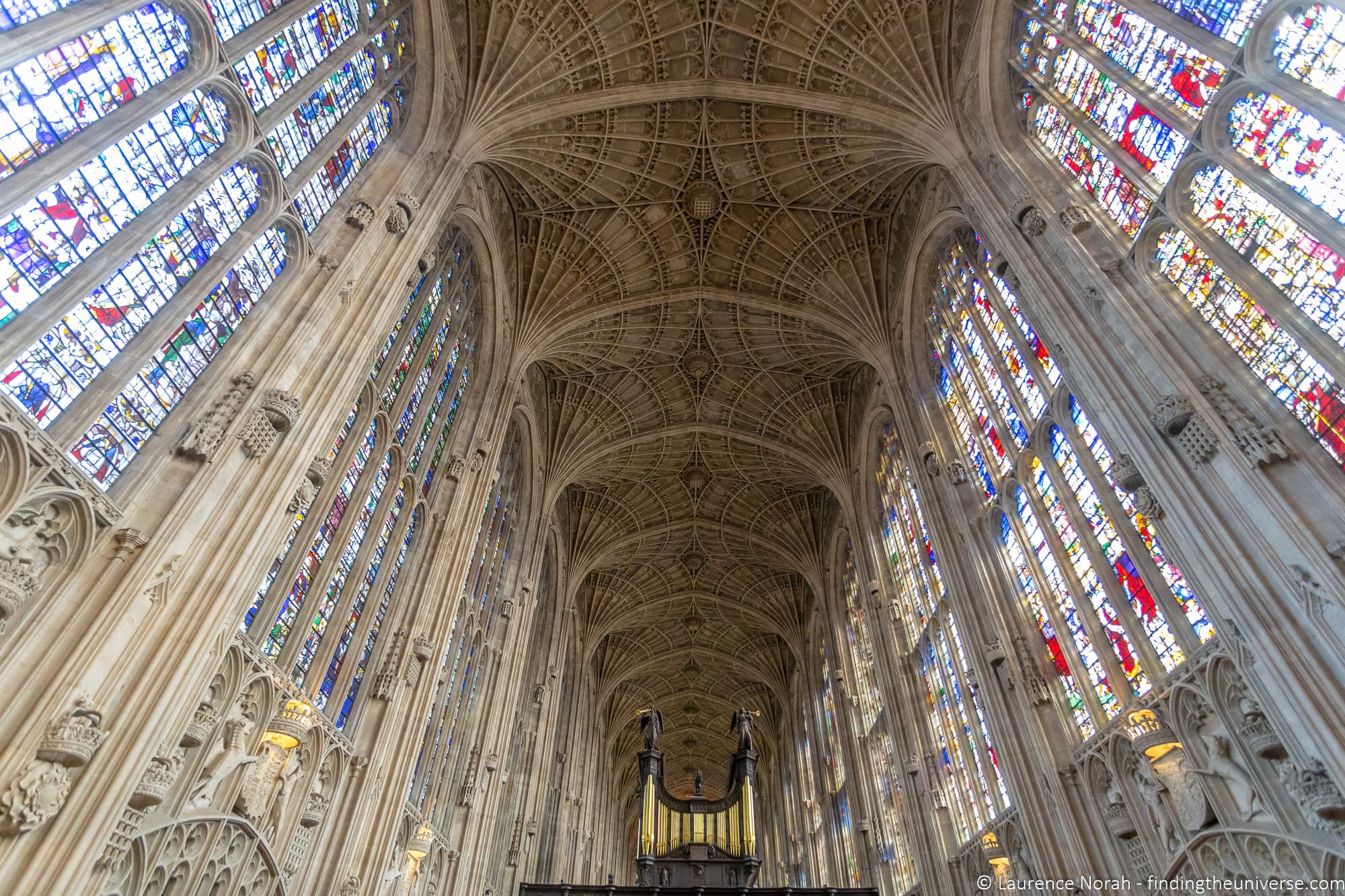
Visit the Cambridge University Colleges
Founded in 1209, Cambridge University is the second oldest university in the English speaking world (Oxford university is the oldest, see our guide to visiting Oxford here) . The University itself consists of 31 colleges, each of which provides accommodation and manages the entry and tuition of their students.
The 31 colleges are divided into the “old” colleges, which were founded between 1284 and 1596, and the “new” colleges, founded between 1800 and 1977.
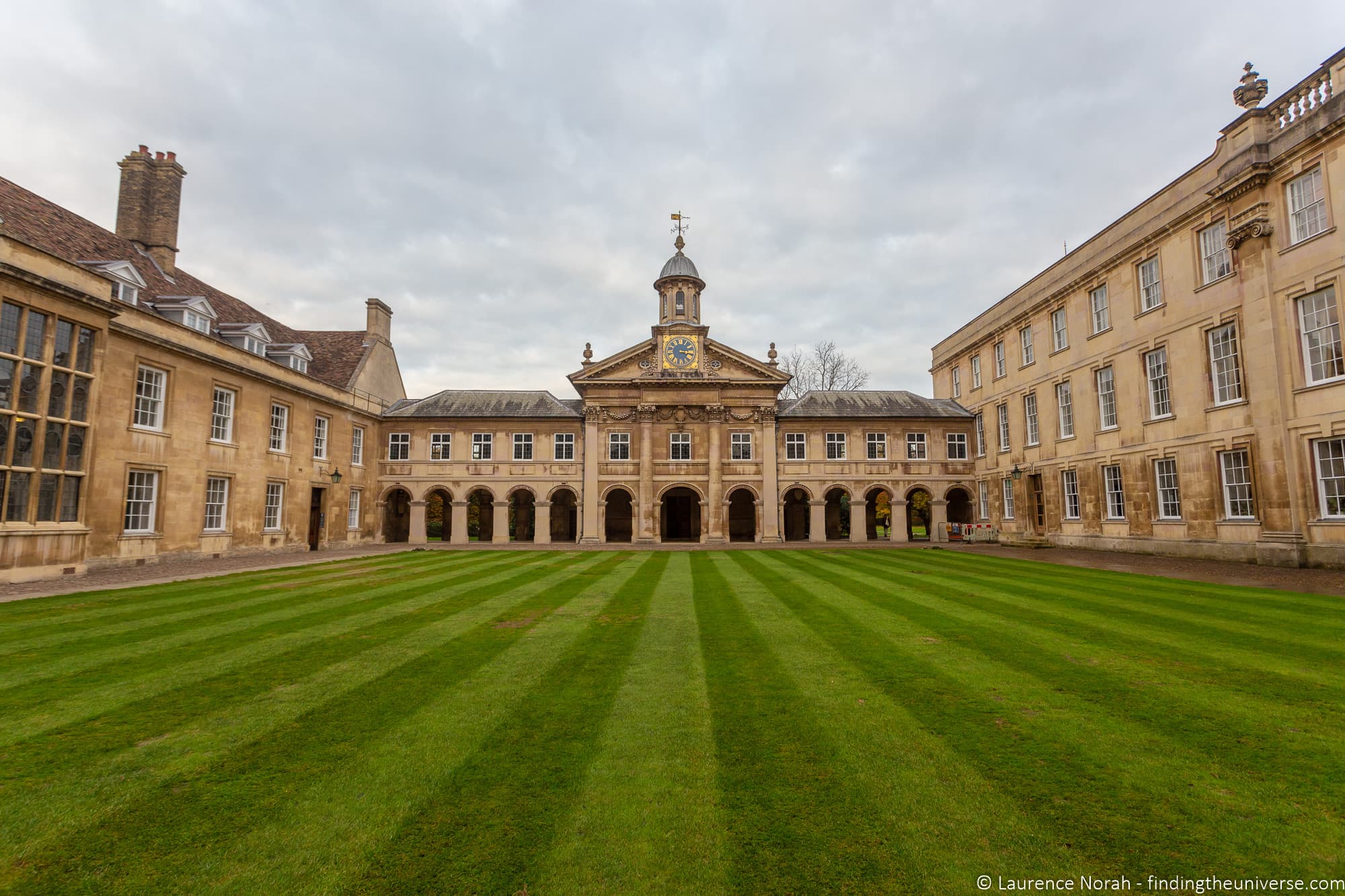
No visit to Cambridge is complete without visiting at least some of the Cambridge Colleges. We’ve already mentioned the King’s College Chapel and the Wren Library of Trinity College, but we wanted to include a few more of our favourite colleges that you can visit.
You can explore many of these on your own, or you can take a walking tour of the Cambridge Colleges , where you will learn from a Cambridge graduate all about life at the colleges, as well as lots of history and information.
Please do note that all of the colleges in Cambridge are places of work and study, so always abide by the rules and behave with respect and courtesy to those who live and work here. If in doubt as to whether a college is open, we recommend stopping at the porters office, which will be at the entrance to the college, where you can ask for information.
Trinity College Cambridge
Trinity College in Cambridge is one of the largest colleges in the city. It was founded by King Henry VIII in 1546, and attendees included Isaac Newton, Lord Byron, and Betrand Russell, to name but a few. Trinity College has in fact produced 33 Nobel prize winners to date, more than any other Cambridge or Oxford college.
Speaking of Newton, it is oft speculated that the tree in the Great Court is the famous tree that inspired his theory of gravity. This is in fact incorrect – the actual tree is an apple tree, which can be seen at Woolsthorpe Manor , some distance north of Cambridge.
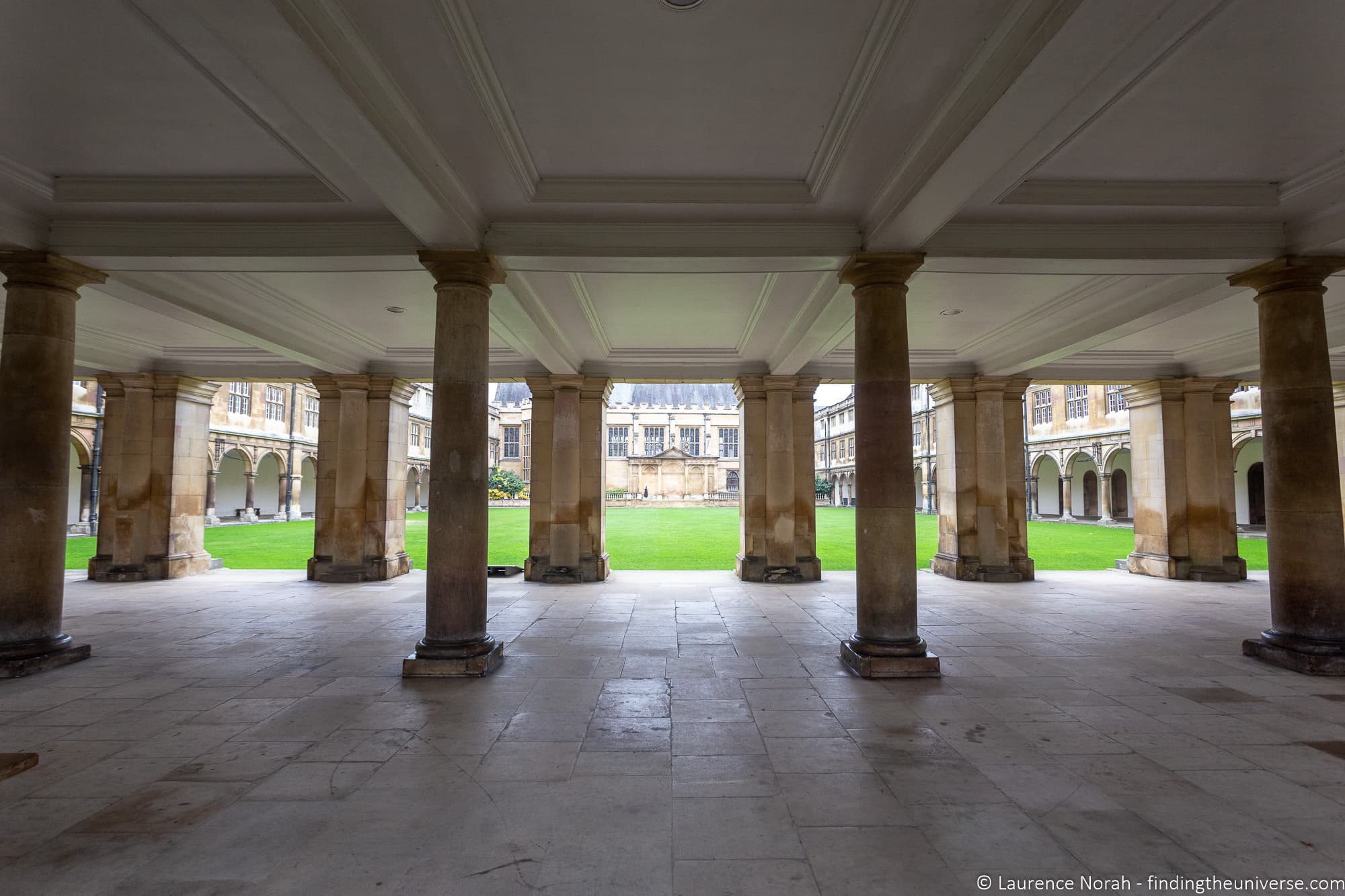
Highlights of a visit to Trinity College include seeing the Great Gate, the Great Court, and the Clock Tower, as well as the Wren Library.
You can visit the aforementioned Wren Library free of charge. For access to the Great Court and Chapel, there’s a small entrance fee of £3 at time of writing, payable at the visitors booth in the Great Gate. Opening days and hours vary depending on the time of year. See more on the official website here .
Christ’s College Cambridge
Originally founded as God’s House in 1437, Christ’s College was refounded under its present name in 1505.
Christ’s College was where Charles Darwin and John Milton studied, and it is consistently amongst the top performing colleges in Cambridge in terms of academic standards.
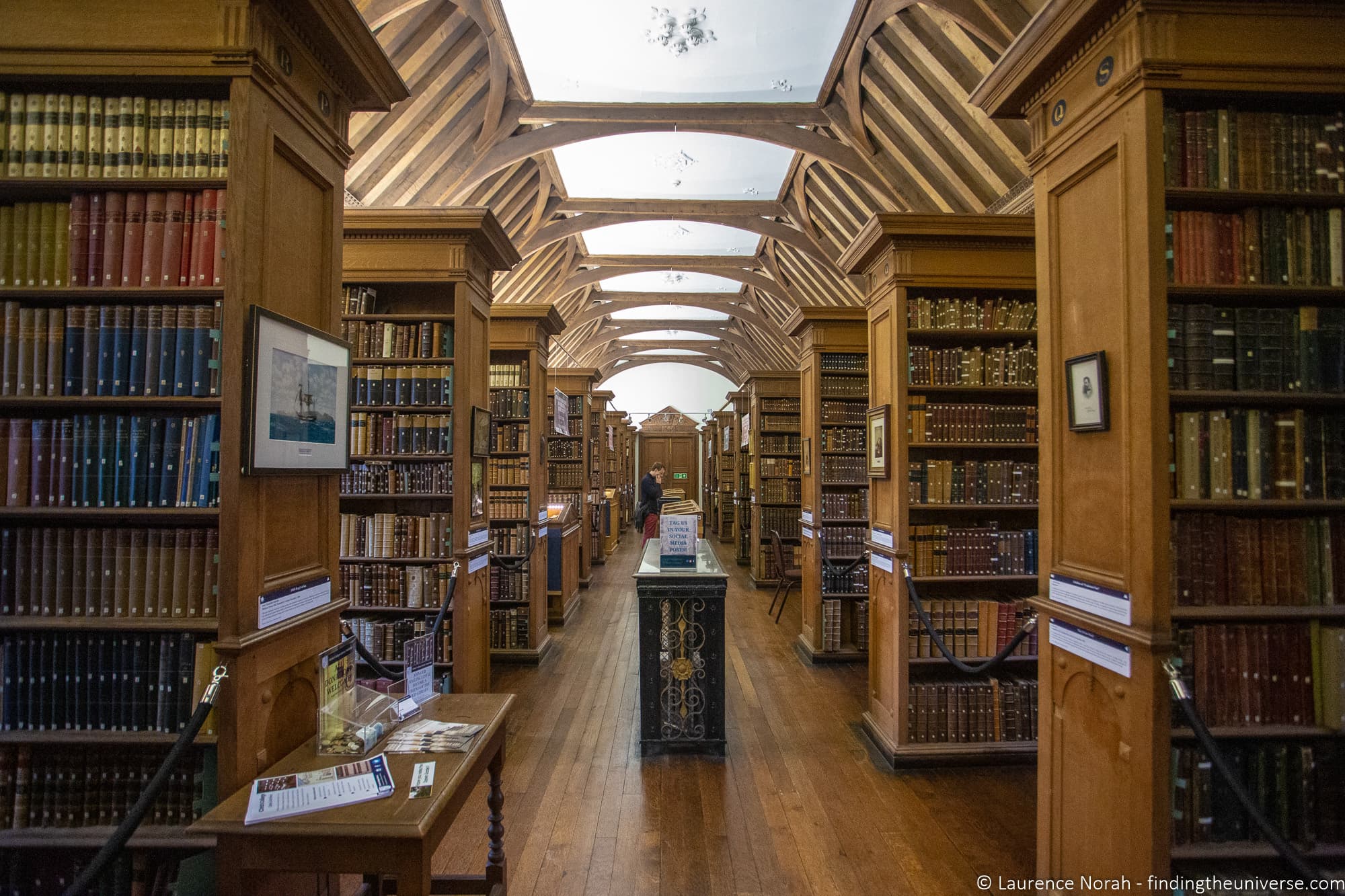
The college is open to visitors, with highlights including the original 15th century buildings and round lawn of the First Court, the Great Gate entrance on St. Andrews Street, and the Fellow’s Garden.
The Old Library though is our favourite reason for visiting Christ’s College. This library is home to over 50,000 rare printed books, largely acquired through generous donations. Book include first editions of the works of alumni John Milton and Charles Darwin, as well as many other treasures.
The Old Library is open from 2pm – 4pm on Tuesdays and Thursday, with visits outside of these hours possible by appointment. The college itself can be visited throughout the year 7 days a week from 9am to 4pm, and access is free. You can see more about visiting in general here , and visiting the old library here .
Pembroke College
Pembroke College was founded in 1347, making it the third oldest college of Cambridge University. It has stunning buildings, but it is perhaps best known for its gardens, which are beautiful.
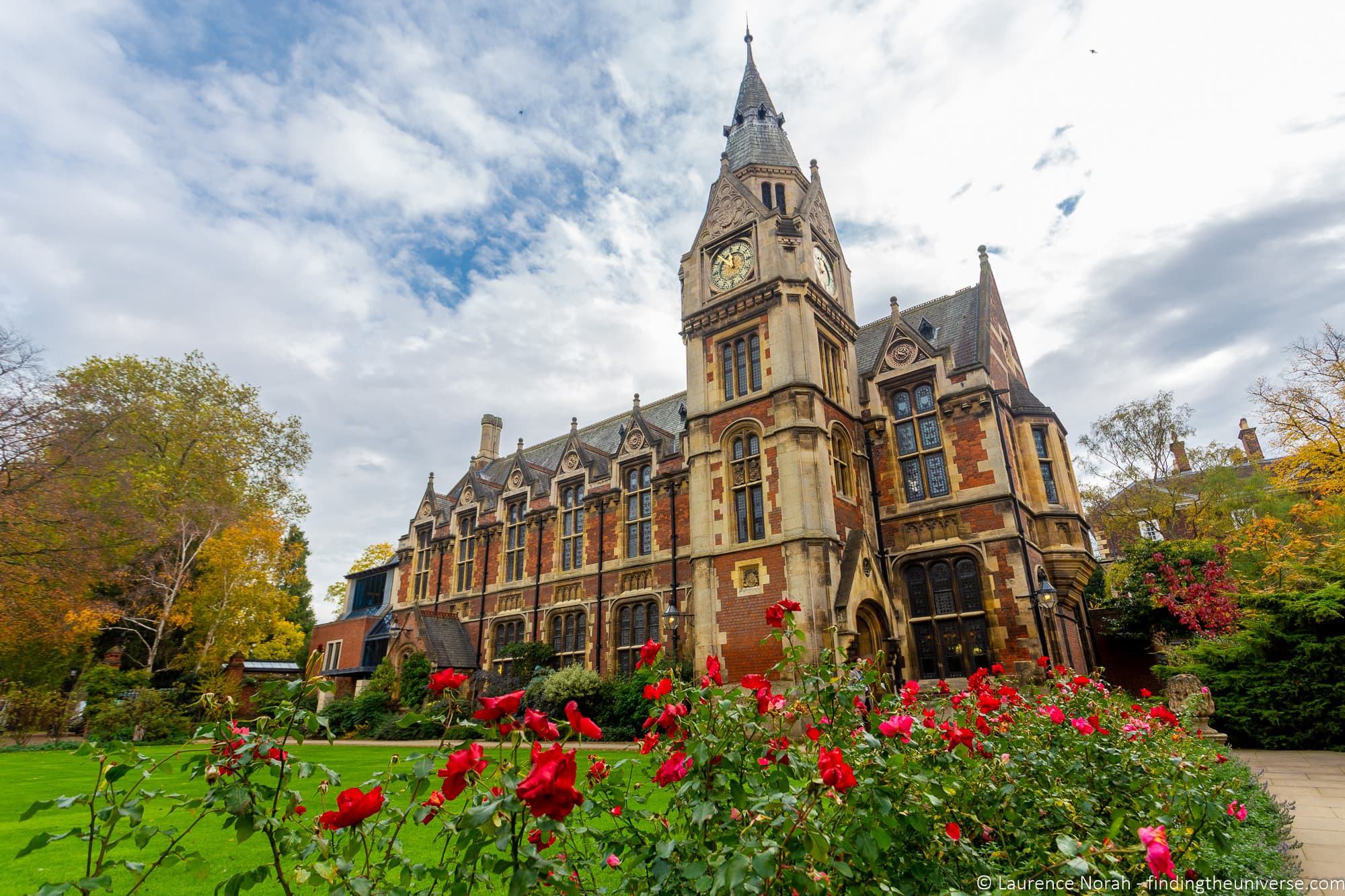
Other highlights include the chapel, and visitors are welcome to wander the grounds, although other than the chapel you cannot enter the other buildings.
Pembroke College is free to visit, and is open year-round from 10am – 5pm, with the exception of examination times. It’s also included on various walking tours of Cambridge, such as this one which also includes punting. See more about visiting here .
St. John’s College Cambridge
Founded in 1511, St. John’s College has produced ten Nobel Prize winners, seven UK prime minsters, twelve archbishops, two princes and three Saints. Attendees include Douglas Adams, author of the Hitchhiker’s Guide to the Galaxy (my favourite book!), William Wordsworth, and Paul Dirac.
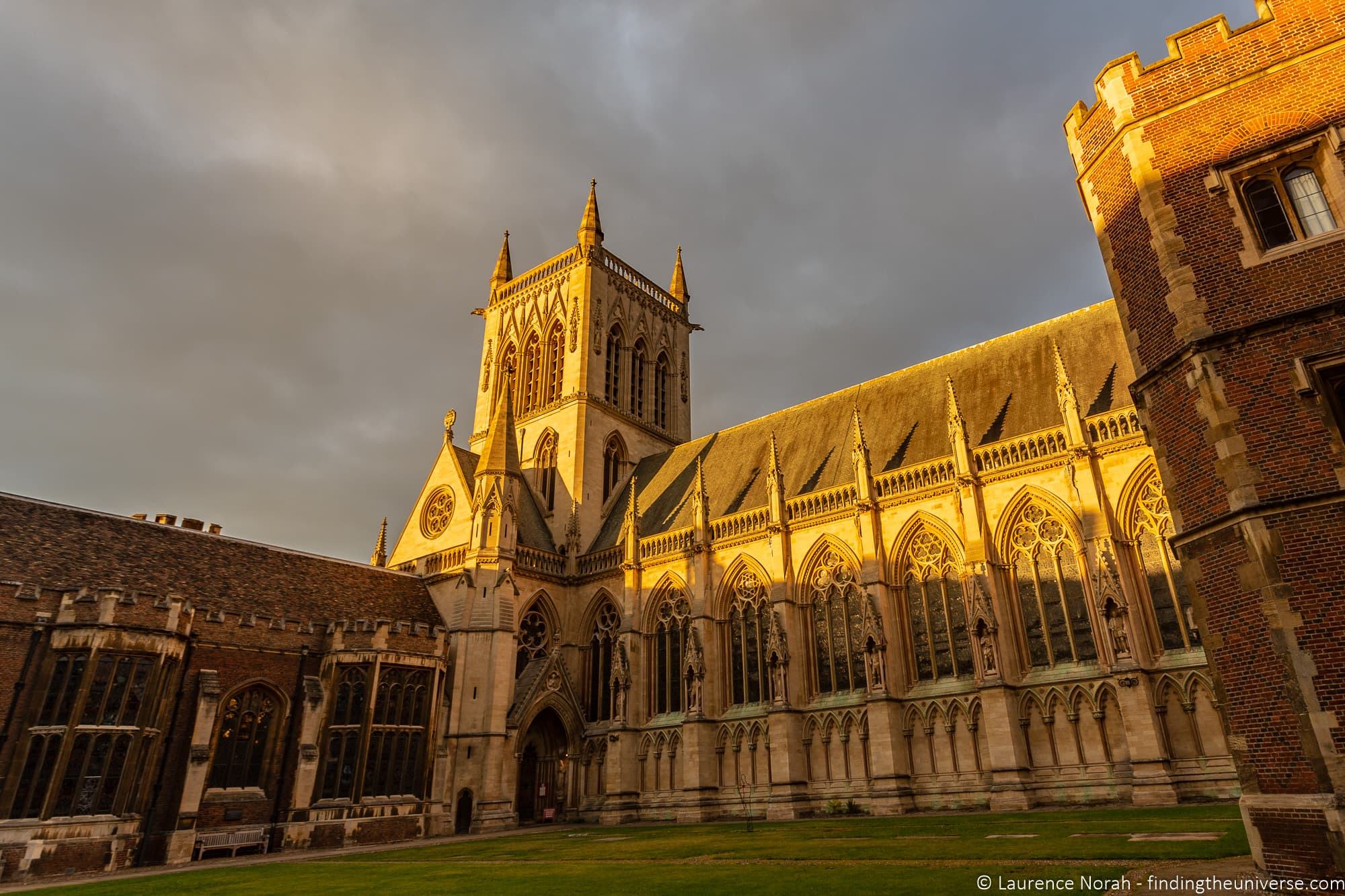
It’s a beautiful college to visit, with a stunning chapel, the famous 1831 Bridge of Sighs, and extensive gardens.
St. John’s is well setup for visitors. There’s a signed self-guided walking tour that runs around the main sights of the college, including the iconic Bridge of Signs across the River Cam. You can download an accompanying leaflet for the walk from the official website here .
There’s a fee to visit St. John’s College, which is £10 per adult. The grounds are open to visitors year round (except from 25th Dec – 2nd Jan), from 10am – 5pm March – October, and 10am – 3.30pm the rest of the year. See more on the official site here .
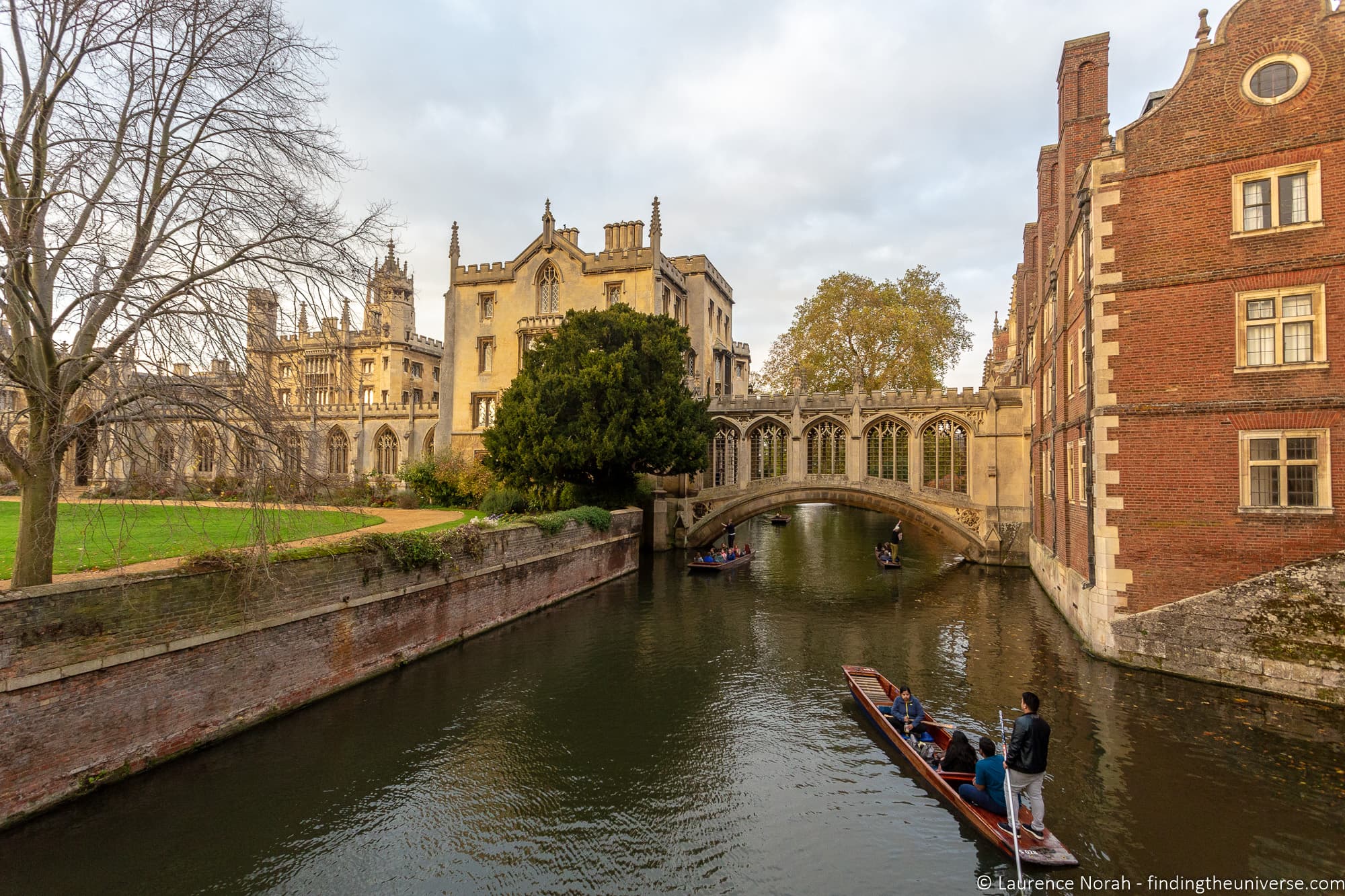
This was just a slice of some of the many colleges that you can visit in Cambridge. You could easily spend a day or more in Cambridge just visiting these stunning properties! You can also stay in some of the colleges outside of term time – see our guide to where to stay in Cambridge towards the end of the post for more information.
Finally, if you are visiting Cambridge with educational or research purposes in mind, you can also get access to some of the college’s rich archives. Some of these have public visiting hours but for many you need to book an appointment.
For example, if you are researching Winston Churchill , you might want to visit the large collection of documents from the Churchill era (1874-1965) available at Churchill College.
Take a Walking Tour
If you want to get a good overview of the history of Cambridge and see some of the many highlights of the city, then a great way to do this is to take a walking tour. There are a number of different tours available, and we’ve highlighted some of our favourite options here.
- A Cambridge University Walking tour with a Graduate . This tour takes you to a number of the Cambridge Colleges, and as you are led by a graduate of the university, you’ll get to learn all about what life is like when you are a student here. A similar tour is also available as a private tour .
- A Cambridge University and City Highlights guide . Led by a qualified Cambridge green badge tour guide, this private tour covers the highlights of the city as well as a number of the colleges, giving you a great overview of the city. A similar tour is available as a group tour here .
- A combined Cambridge Punting and Walking tour . This tour combines two popular activities into one tour, and includes a guided punting experience as well as a tour of Cambridge. Both of these activities are with Cambridge Alumni, and the walking tour covers the highlights of the city as well as a number of the colleges.
If you’d rather see the city by bus, you might consider buying a ticket for the sightseeing bus. You can buy tickets for the Cambridge hop on hop off bus here .
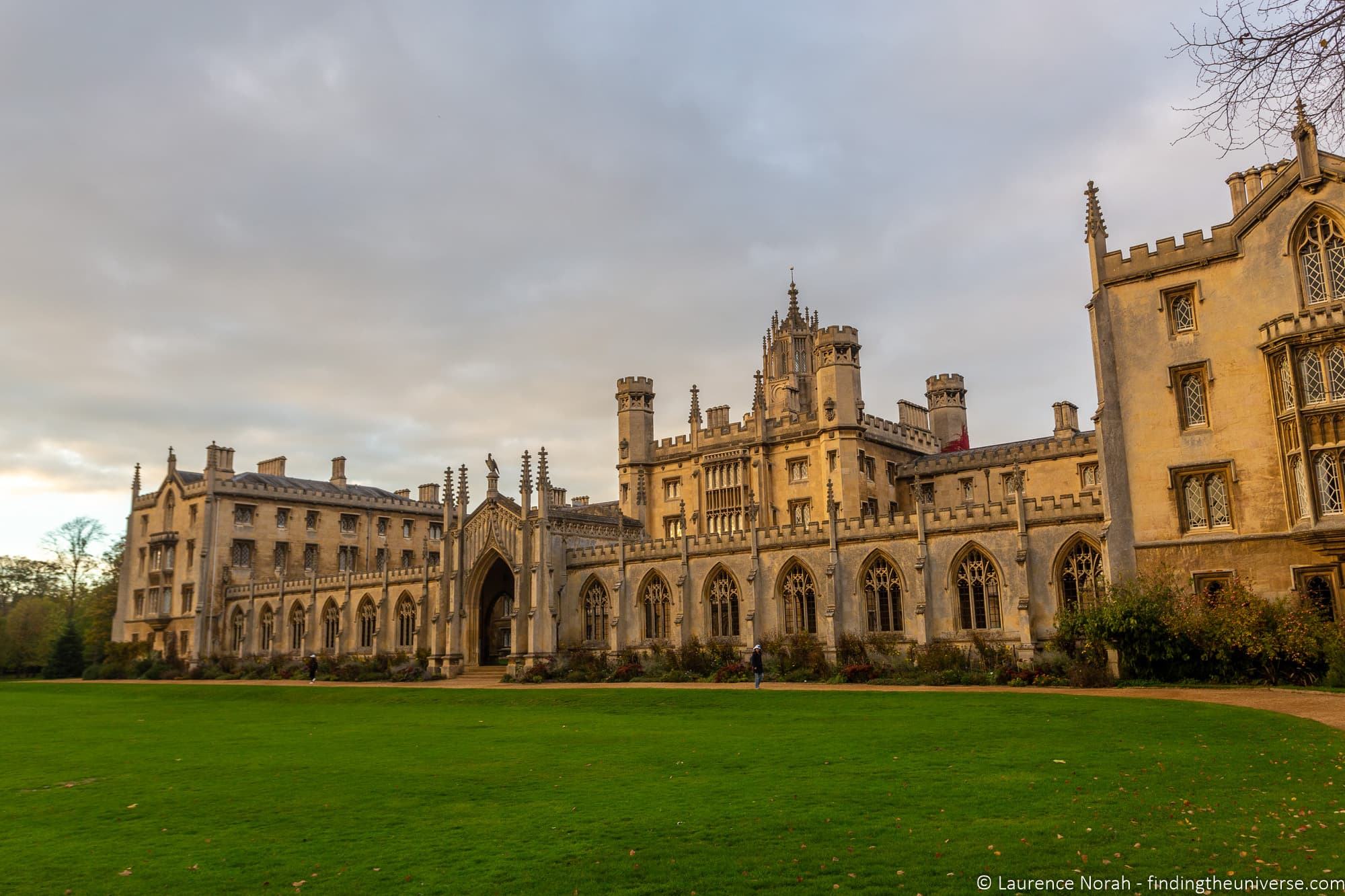
Scott Polar Research Institute
The Scott Polar Research Institute , also known as the Polar Museum, is a museum dedicated to the north and south poles of our planet.
As with many of the other museums in our guide to Cambridge, it is a part of the University of Cambridge museums consortium – of which there are eight in total in Cambridge. Each museum has a different focus and content, and they are all worth visiting!
The Scott Polar Research Institute is named for and in memorial to Captain Robert Scott, often referred to as Scott of the Antarctic. Scott was a British naval officer and explorer who died on an expedition to the South Pole in 1912.
The expedition successfully reached the pole, becoming the second team ever to do so, but all the members of the team passed away on the return leg.
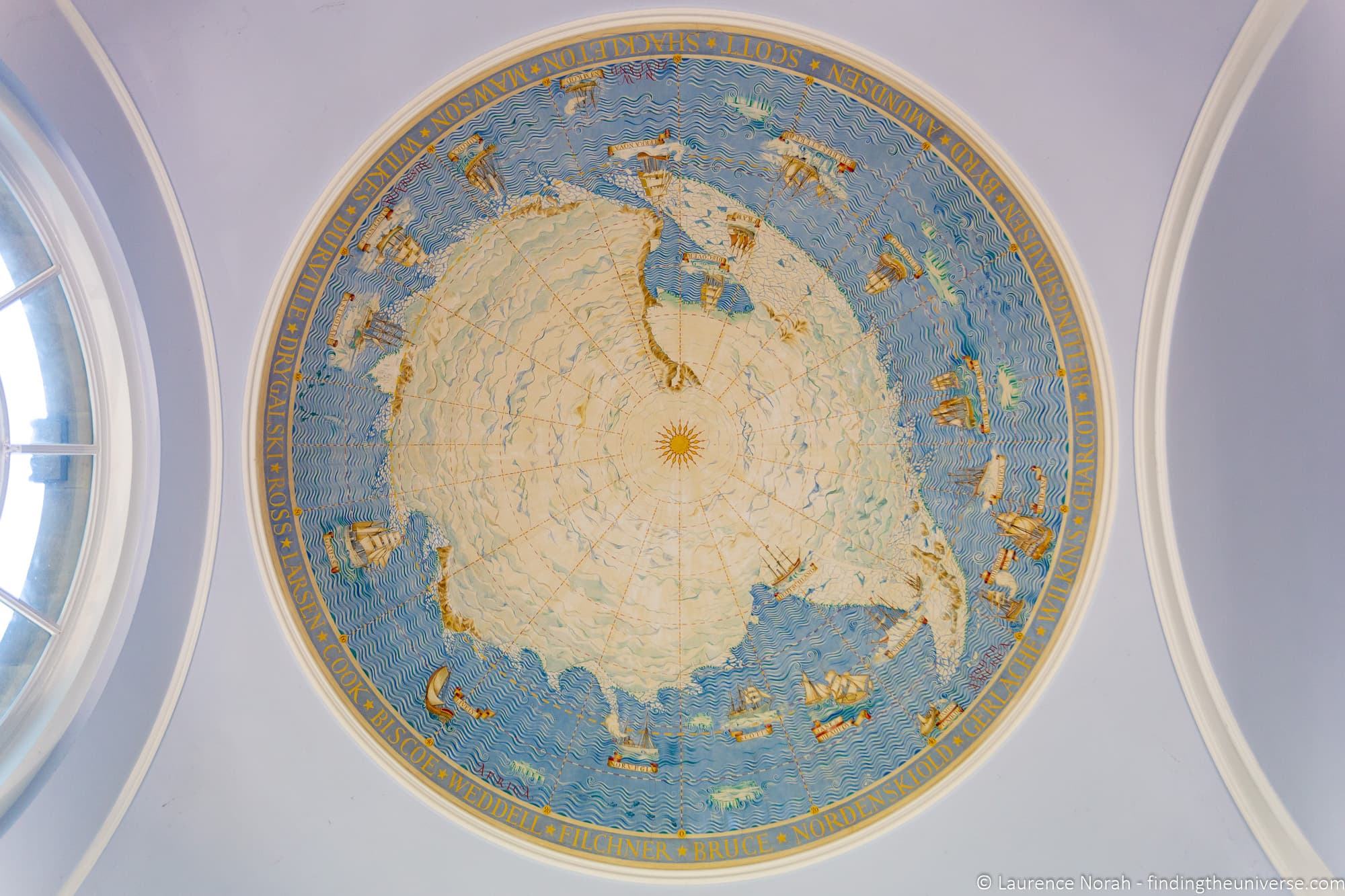
Today, the Scott Polar Research Institute, which was established in 1920, performs two main functions – it’s a research base for a wide variety of Arctic and Antarctic research programmes, and it is the home of the Polar Museum.
The museum houses numerous artifacts and displays relating to both the Arctic and Antarctic regions. They cover the history of polar expeditions as well as the history, geology, and wildlife of the two regions themselves.
It’s a fascinating museum, with objects including the last letters written by Scott, and is a must-visit for anyone with an interest in our planet’s Poles, and exploration in general. The museum is open daily from 10am – 4pm, Tuesday – Saturday, and is free to visit (donations greatly appreciated).
They also host special events including talks, and special exhibitions. See the official website for more.
The Fitzwilliam Museum
The Fitzwilliam Museum is dedicated to art and antiquities, and was established in 1816 using the art collection bequeathed to the University by Richard Fitzwilliam. In 1848, the museum relocated to its present building, the beautiful Founders Building.
A highlight of this building is the entrance hall, which was designed by Edward Middleton Barry.
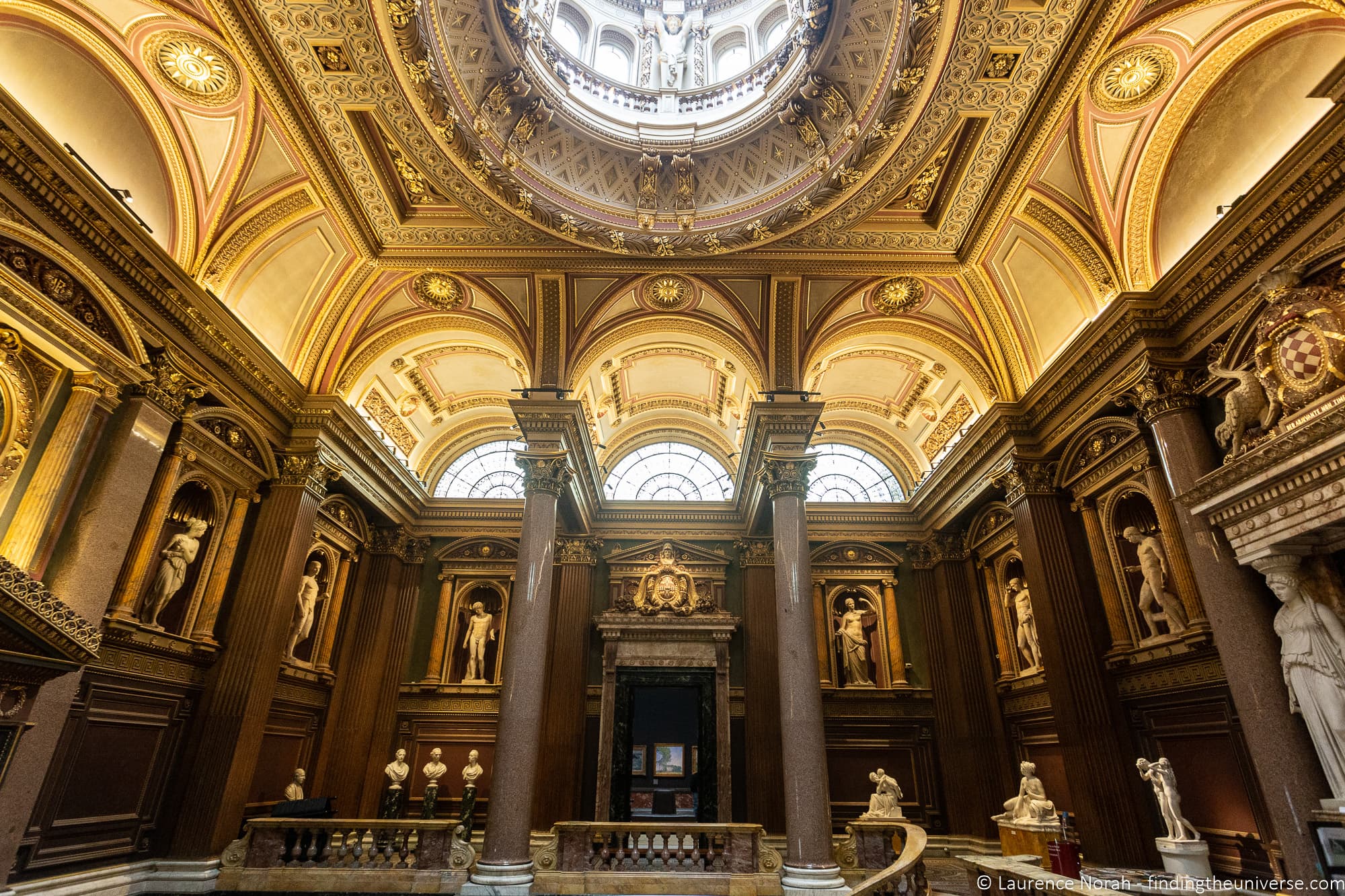
The Fitzwilliam Museum has a wide range of items on display, ranging from 16th century musical manuscripts to paintings by J.M.W Turner, as well as Egyptian, Greek and Roman antiquities, and art from China, Japan and Korea.
There’s also an extensive collection of coins.
The museum is fairly large with a lot to see, although you can also just visit and take in the highlights if you prefer. Entry is free (donations are appreciated), and the museum is open 10am – 5pm Tuesday – Saturday, and midday – 5pm on Sundays. It’s closed on Mondays. For more on what’s on and up to date opening times, see the official website here .
Sedgwick Museum of Earth Sciences
The Sedgwick Museum of Earth Sciences is where you’re going to come if you want to learn all about geology. Established in 1728, this is the oldest of the University of Cambridge museums, which is appropriate given that the subject matter will take you on a 4.5 billion year journey through the history of the earth!
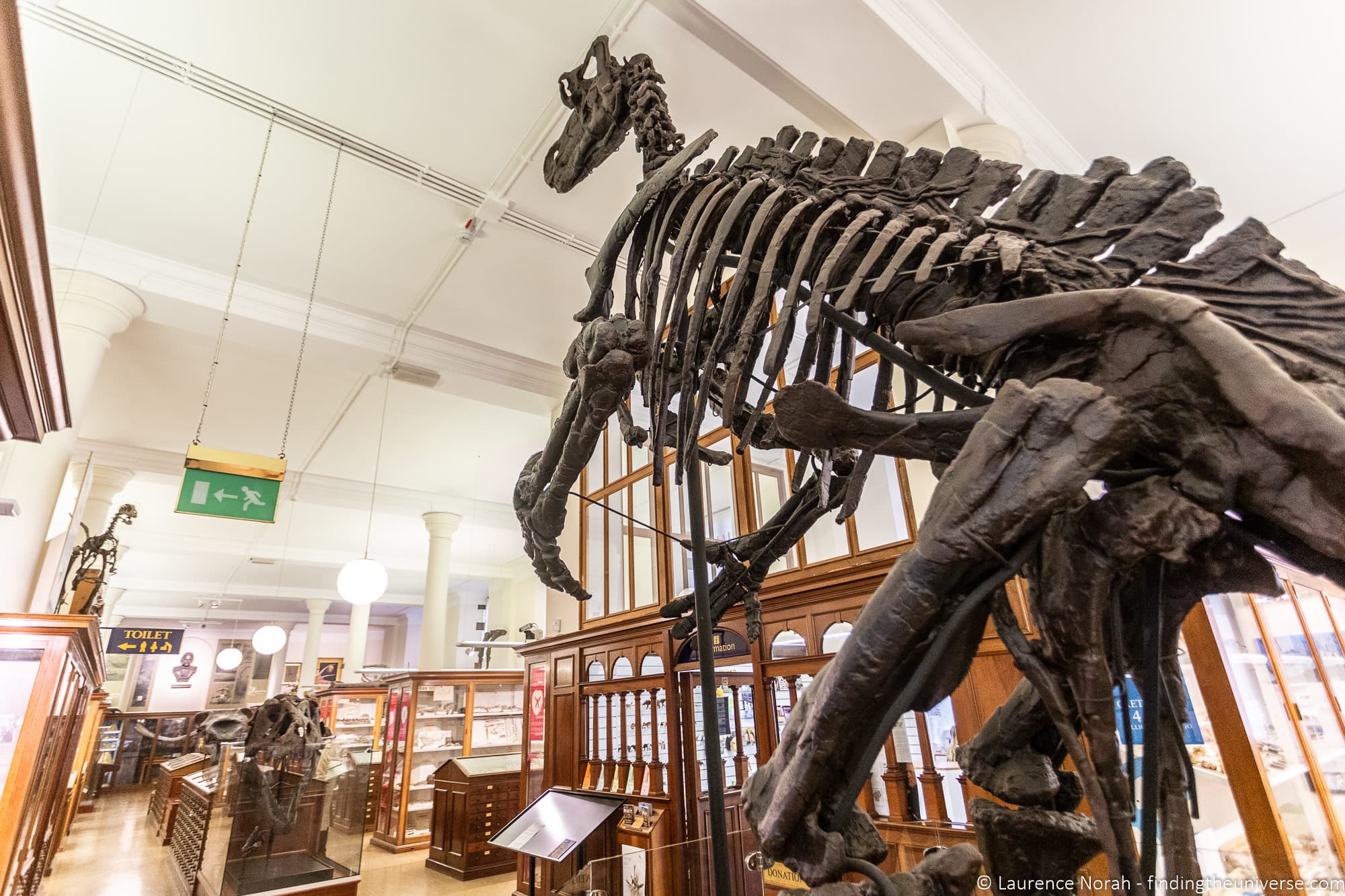
The museum has in its collection over 2 million specimens, which include fossils, minerals, and rocks, and which cover the majority of the lifespan of planet earth. As you would imagine, not all of this can be displayed at once, but there is a great deal to see and learn here.
The museum is open every day except Sunday. From Monday to Friday, it’s open from 10am – 1pm, and 2pm to 5pm. On Saturdays it’s open from 10am – 4pm. It’s free to visit, and you can see more about what’s on display here .
Museum of Archaeology and Anthropology
The fourth museum on our list, and dating from 1884, is the Museum of Archaeology and Anthropology . This museum is all about the history of people and the objects made for and used by people throughout the ages.
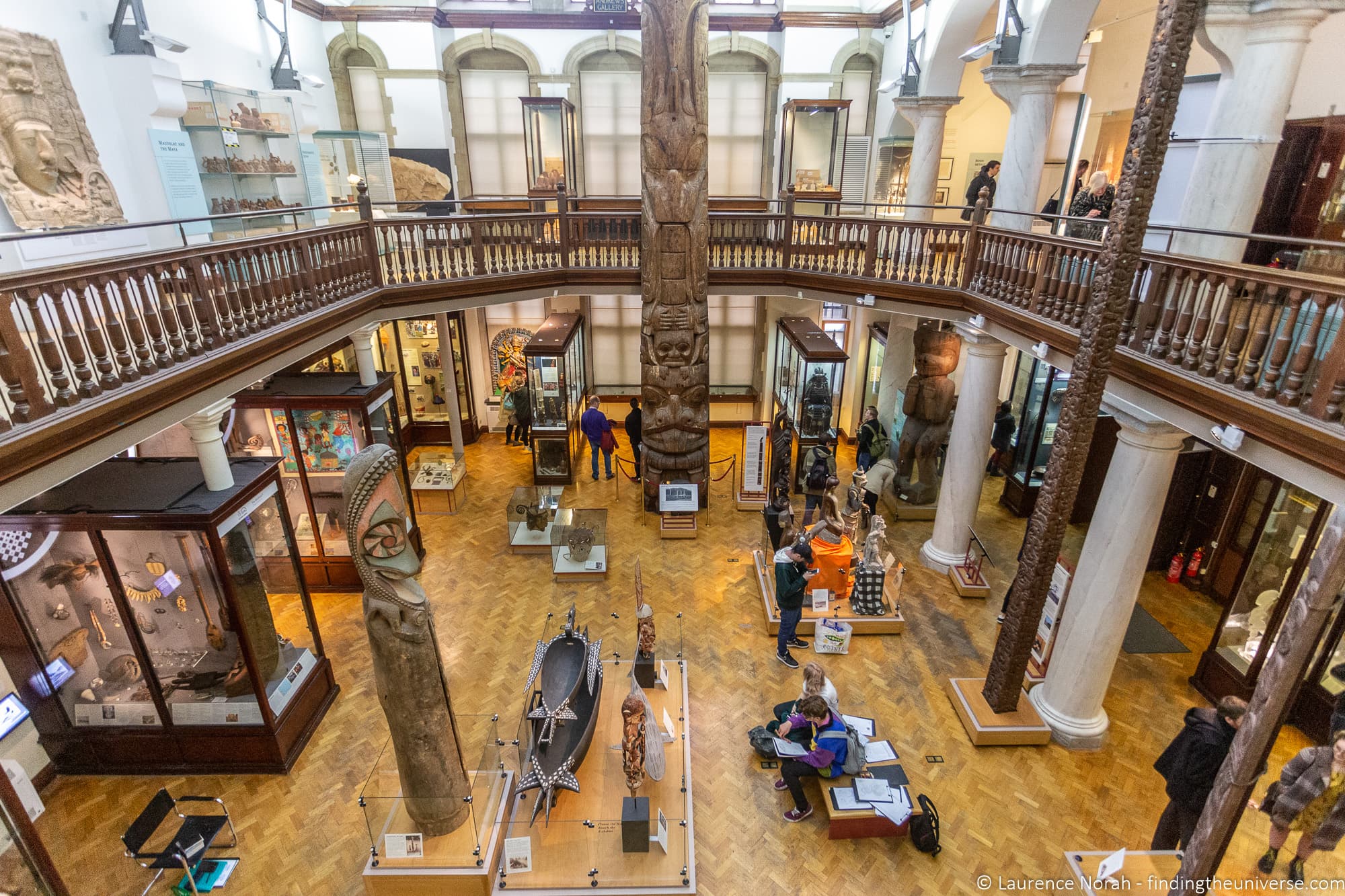
The ages in this case span a couple of million years and about a million artefacts, so there’s plenty to see and learn about here if you’re curious about where we came from and how we got to where we are today. It covers archaeology which is local to Cambridge as well as world archaeology, and there’s also a whole floor on anthropology.
Highlights of the collection include the Haida Totem pole, as well as Roman and Anglo Saxon artefacts from Cambridge and surrounds.
The museum has free admission, and is open Tuesday – Saturday from 10.30am – 4.30pm, and Sunday from noon – 4.30pm. See the official website for more.
Museum of Zoology
If you are interested in the natural world, then you’ll want to make a stop at the Museum of Zoology . This is a part of the University of Cambridge’s Department of Zoology, which owns around two million specimens – thousands of which are on display at any one time.
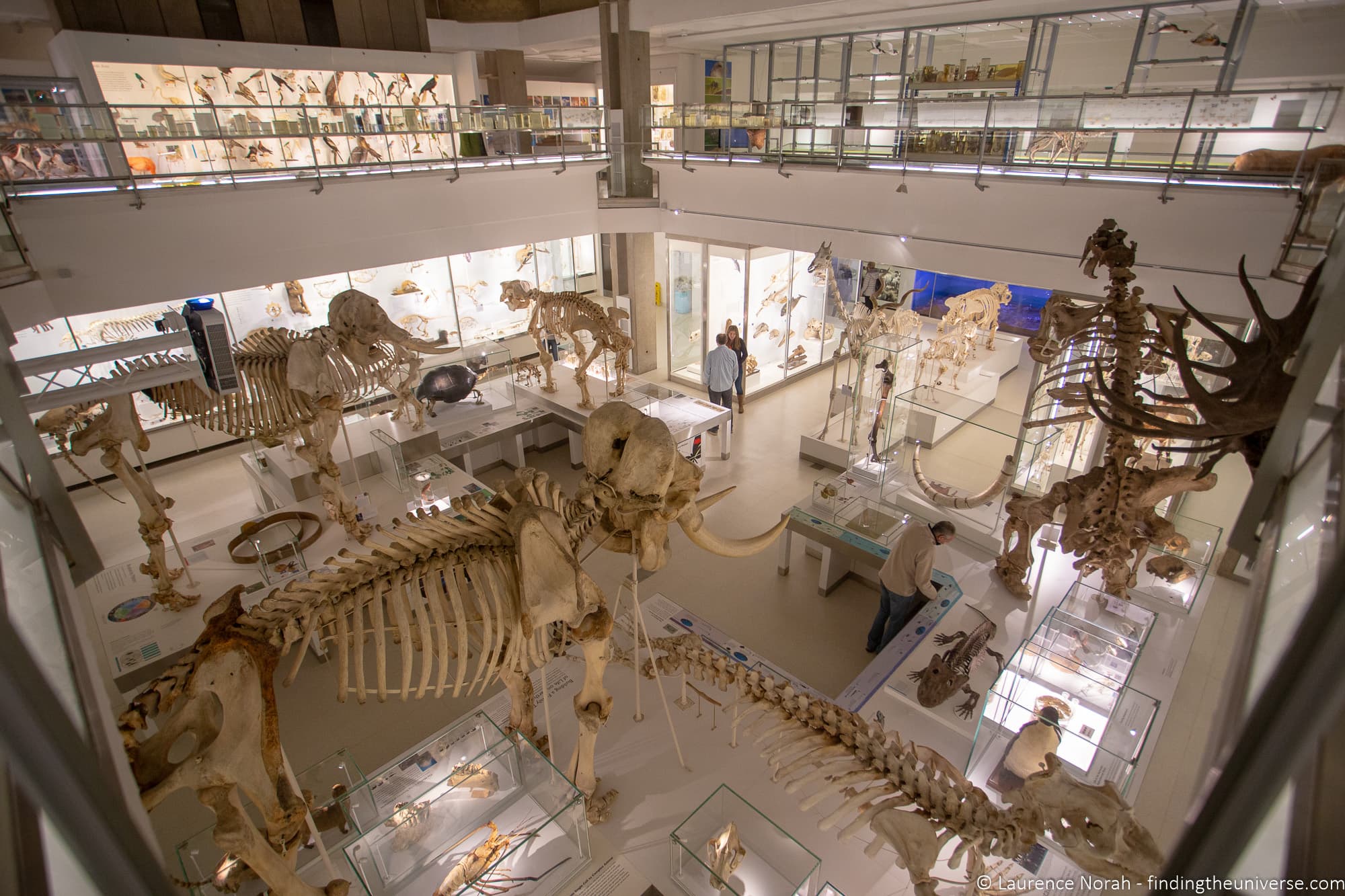
From the 22 metre long fin whale in the entrance area, through to elephants, insects, and molluscs, the museum has specimens on display which span the entire animal kingdom. There are also historically important items, including specimens discovered by Charles Darwin and Alfred Wallace, originators of the Theory of Evolution.
We think this would make a great museum visit for families in particular. There are Zoologists Clubs for different age groups, which run events throughout the year and have free membership. The museum also runs talks on various topics throughout the year, and there are rotating exhibitions.
Entry is free, with the museum open from 10am to 4.30pm Monday – Saturday, and noon to 4.30pm on Sunday. See more on the official website .

The Centre for Computing History
The father of computers, Charles Babbage , studied Mathematics at Cambridge in the early 19th century. Babbage would go on to design the “Difference Engine”, which is generally regarded as being the first computer ever to be designed.
As such, it is appropriate that Cambridge is home to the Centre for Computing History , a museum which is home to a collection consisting of over 24,000 items relating to computers and computing history. These include books, vintage computers, memorabilia, game consoles and even mobile phones.
This is definitely an excellent museum for those of you with an interest in computing, and there are loads of interactive and hands on exhibits to keep you entertained. It reminded us a bit of the Computer History Museum in California . The museum is open from Wednesday to Sunday from 10am – 5pm, and there’s a small fee to visit.
Whipple Museum of the History of Science
As should be apparent by now, Cambridge has a museum for pretty much every interest! The Whipple Museum of the History of Science is another of the University of Cambridge’s eight museums, and this one focuses, as the name makes clear, on the history of science.
The museum houses a great many objects such as scientific instruments, models, pictures, and prints, which are used to relate the history of science. These cover a wide variety of scientific disciplines.
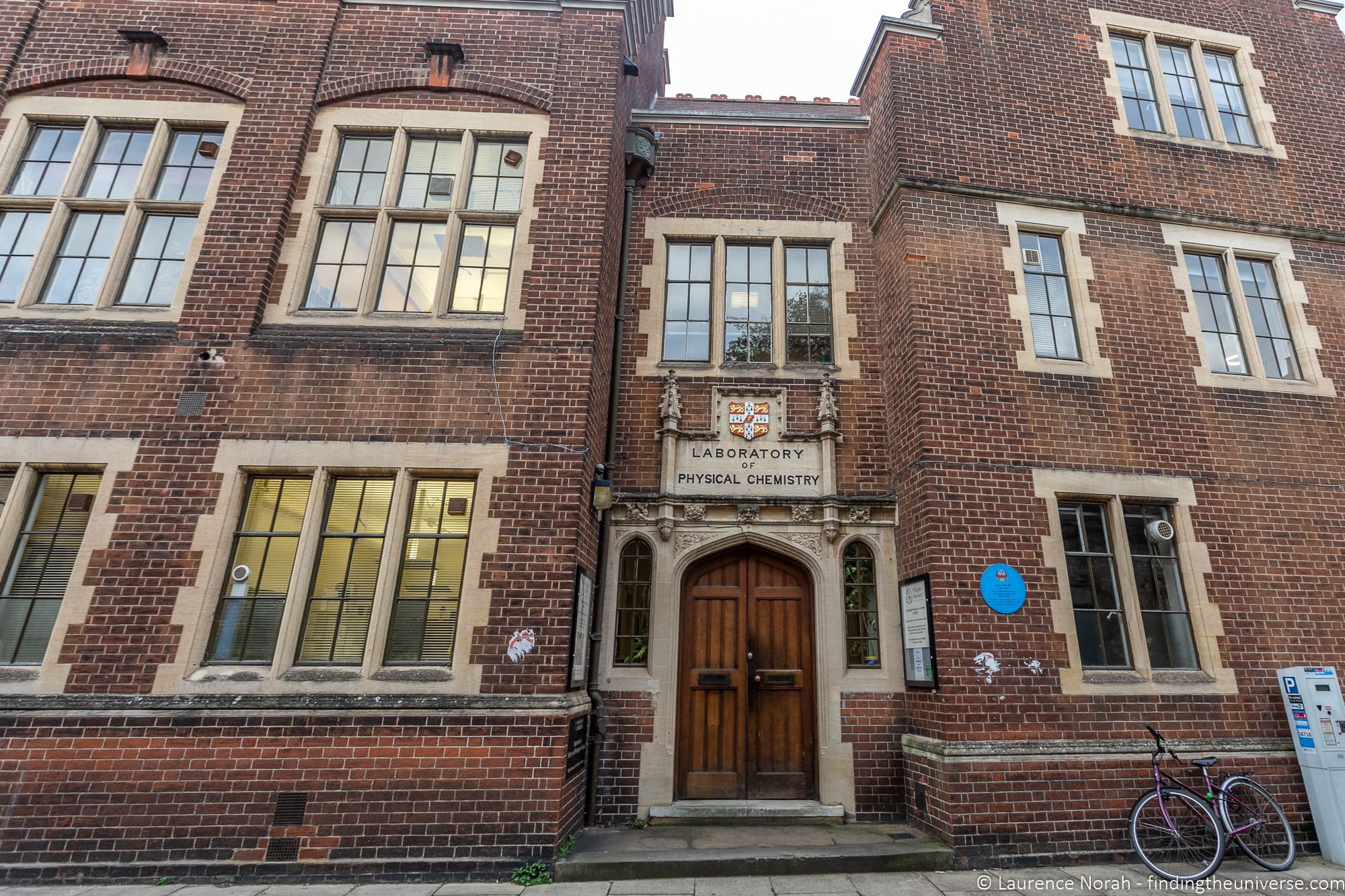
The collection is based upon the artefacts donated to the University of Cambridge by Robert Stewart Whipple, a 19th century scientist who grew up with a father as a scientist, and who spent his life creating (and collecting) scientific instruments.
Highlights of the objects on display include a copy of Isaac Newton’s Principia Mathematica , Charles Babbage’s Difference Engine No 1, and some of Charles Darwin’s microscopes. These scientists were giant’s in their fields, responsible for some of mankind’s greatest scientific achievements, and being able to see first hand the tools and books they used and wrote is a wonderful experience.
The Whipple Museum of the History of Science is currently closed as it is undergoing refurbishment, and is scheduled to reopen in April 2019. See the official website for more information.
Kettle’s Yard
For 20th century and contemporary art, you’ll want to head to Kettle’s Yard . This is found in the former home of Jim and Helen Ede, which consisted of four cottages that were merged into one unique property.
The property has been largely left laid out in the informal style of the Ede’s, and much of the art on display is from their art collection. When they lived in the house, they would regularly hold open house tours to students of the university, and when they left Cambridge for Edinburgh, they gave the house and art collection to the University, which has been running it as an art museum ever since.
Entry is free, and the house is open from 11am – 5pm Tuesday – Sunday. Note that whilst it is free to visit, the house operates a timed ticketing system to manage visitor numbers. These are available from the house itself, or you can book them online up to a month in advance here , which we would recommend doing if you want to be sure to visit.
Cambridge Science Centre
If you’re visiting Cambridge as a family or with kids, you may want to head to the Cambridge Science Centre . Whilst technically a museum, this is really a hands-on interactive learning centre where children and young people can find out all about what makes the world work.
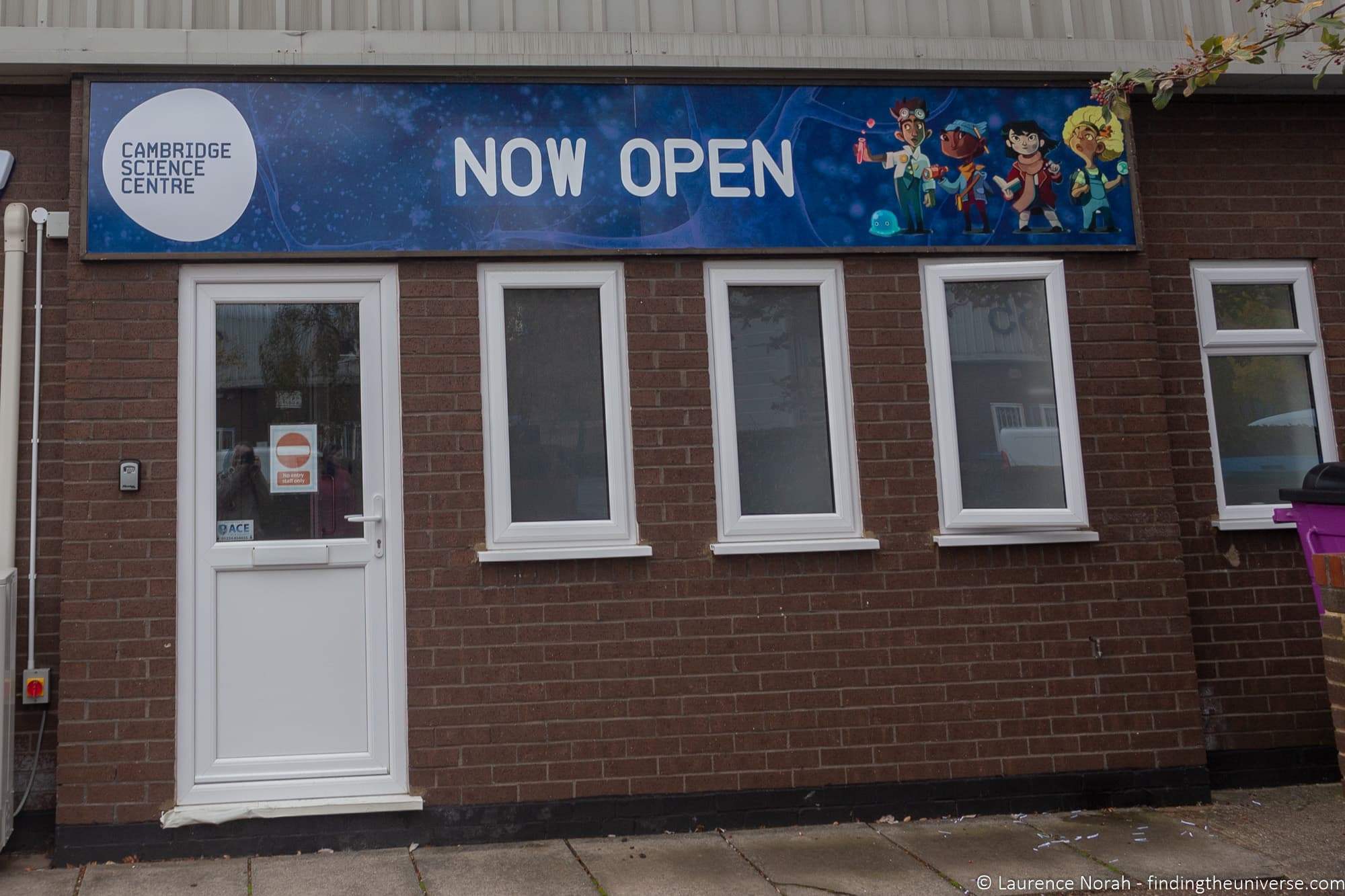
As well as the permanent exhibition, which includes content on everything from how cells work to how we survive in the present day, there are interactive shows and activities available throughout the day. Levers can be pulled, buttons can be pressed, and anyone with a love of science will have a great time here.
The Cambridge Science Centre is open Tuesday – Sundays from 10.30am – 5pm in school holidays, and has varied opening hours during term time. See more on opening hours and admission fees on the official website here .
Museum of Cambridge
By this point you might be wondering if there’s anything apart from museums to see in Cambridge. Or, you’re thrilled at the wealth of knowledge awaiting you, and struggling to decide which to visit.
Whichever side of that divide you fall on, this is the last museum in our list!
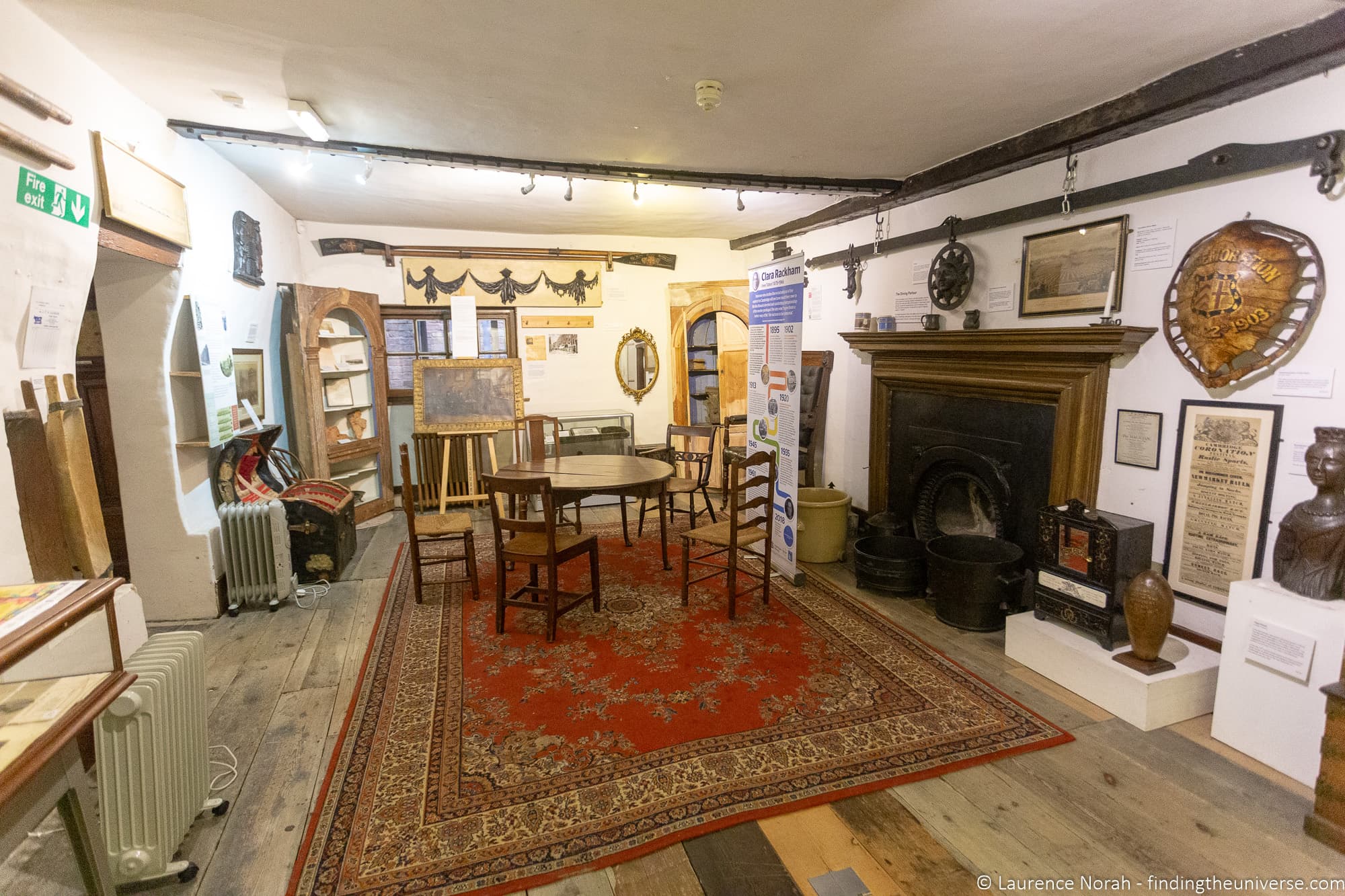
The Museum of Cambridge is found at the northern end of the city, and focuses on the history of Cambridgeshire, specifically over the last 300 years. This is the place to come if you want to learn everything about what has helped shape Cambridge into the city it is today.
It’s set in a former 17th century coaching inn, giving it a very authentic setting, and has objects covering everything from social history to toys, art and clothing.
There’s a small fee to visit the Museum of Cambridge, and it’s open all week, although on Mondays, visits are by guided tour only. You can see the opening times and further information on their website .
Corpus Clock
The Corpus Clock is an incredible gold plated, 1.5 metre wide time piece and art installation. You’ll find it at the junction of Bene’t Street and Trumpington Street on the side of the Taylor library.
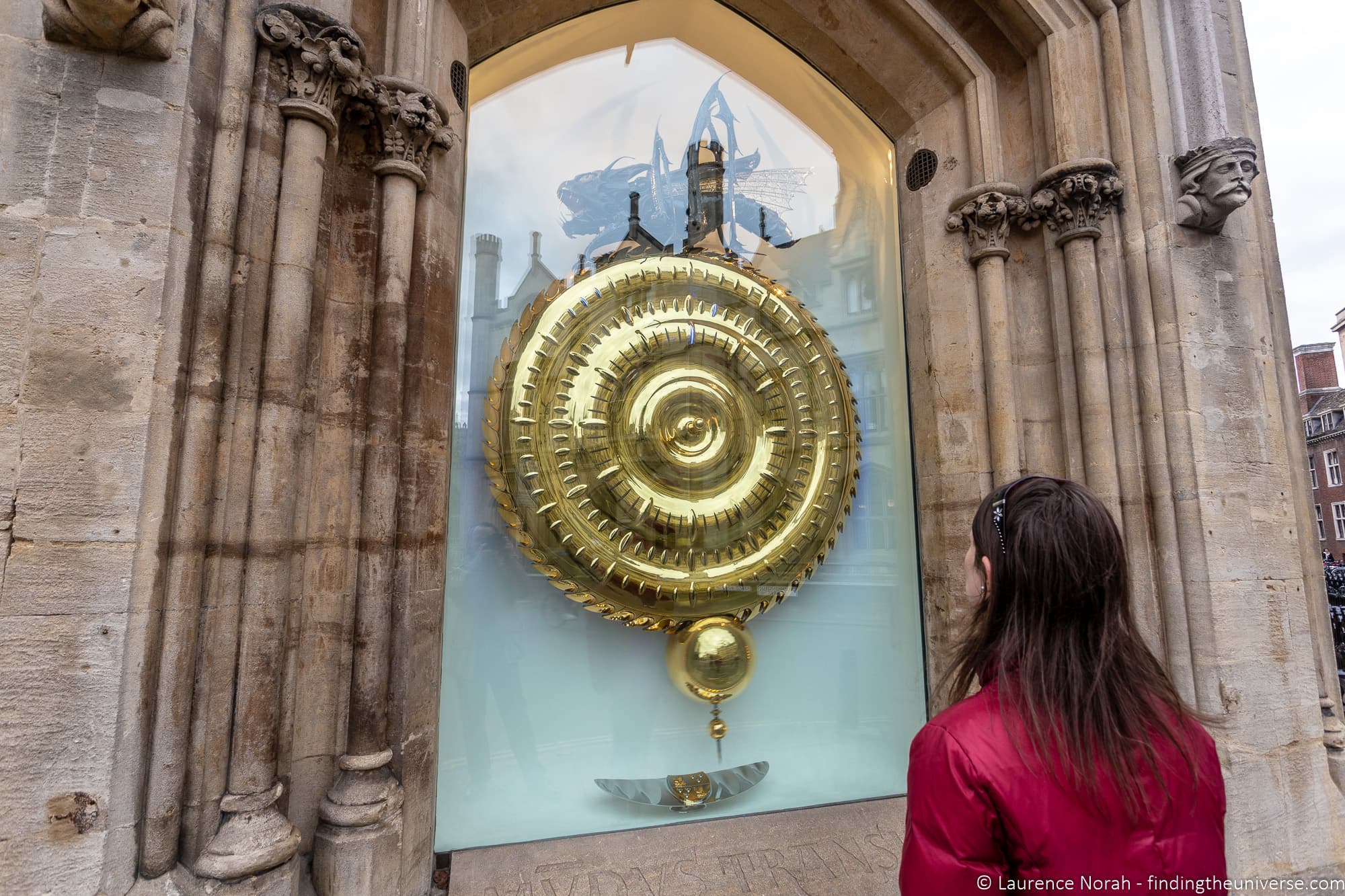
The clock involved over 200 people and the project to create it cost over a million pounds. It takes the form of a large golden disc, atop which sits a huge grasshopper, which is known as the Chronophage. This is Greek for “time eater”, which is appropriate, as the grasshopper appears to eat the seconds as they tick by.
The clock is accurate, but as it moves erratically, it’s only truly accurate once every five minutes. Still, you’re not here to tell the time (which is challenging as there are no hands or dial to read, and so you need to understand the LED layout), you’re here to appreciate a marvel of clockmaking, which was named as one of Time magazines best inventions of 2008.
The clock is free to visit and runs year-round. It’s also often included on walking tours such as this one .
Great St. Mary’s Church Tower
If you want to get a great view of Cambridge, we recommend heading to Great St. Mary’s Church , where for a small fee you can climb to the top for panoramic views of the city.
The church is in the heart of the old part of the city, surrounded by cobbled streets and colleges, and is directly across from Kings College Chapel. As you would imagine therefore, the views from the roof are among the best you’ll get in Cambridge.
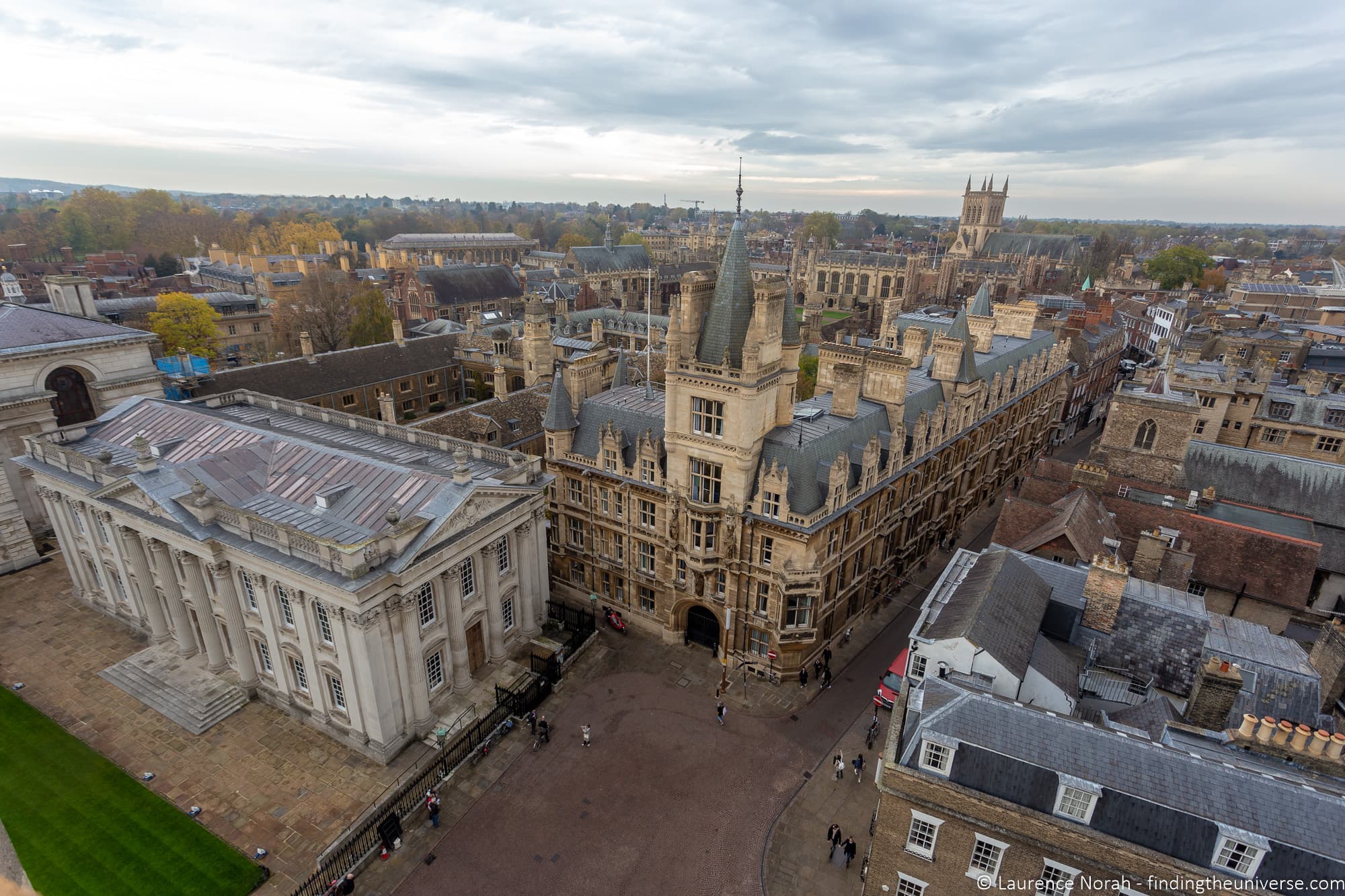
Of course, the church itself, which dates from the 15th century and is a listed building, is also worth spending time visiting. It’s the university church of the University of Cambridge, and is home to the University Organ and University Clock.
The church also plays another role in Cambridge university life. All university undergraduates must live within three miles of the church, and university officers must live within 20 miles of it.
The Church is open Monday – Saturday from 10-5.30pm (4.30pm in winter), and 12.15 – 5pm on Sundays (4pm in winter). Tickets for the tower can be purchased at the gift shop, after which it’s a 123 step climb to the top up a narrow winding medieval staircase! See more on the official website .
Castle Mound
It’s time for some of the other highlights of Cambridge, of which there are many. We’ll start off with Castle Mound, which is just across from the Museum of Cambridge.
This mound is all that is left of what was once a fairly formidable castle which dated back to the 11th century, and which was built following the Norman invasion in 1066 to control the route from London to the north of England.
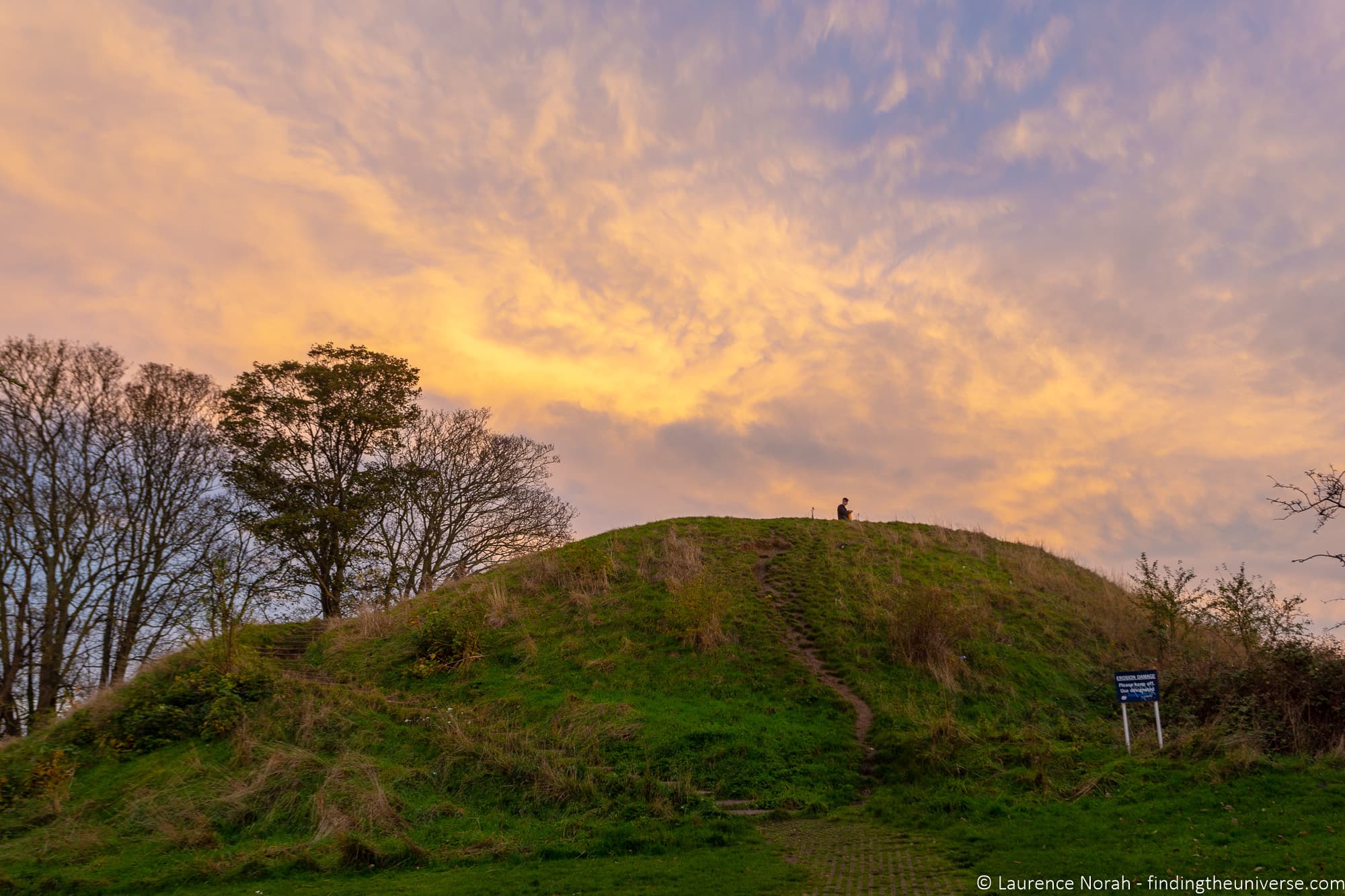
Over the years the castle saw various uses, including being used as the city gaol. However, much of the stone was incorporated into the construction of other buildings in Cambridge, including the colleges, and all that is left is the grassy motte.
This is still worth visiting though, as from the top of the motte you can get nice views across the city, and this is a popular spot to come to watch the sunset.
King’s College Chapel
If there is one building which symbolises Cambridge, it would be King’s College Chapel . This is the chapel of King’s College.
A chapel, in case you were wondering how a chapel differs from a church, is usually a place of worship that is a part of a large nonreligious institution. This is why most colleges have chapels.
Whilst chapels are often relatively small, this is absolutely not the case with King’s College Chapel, which is a large and seriously impressive structure.
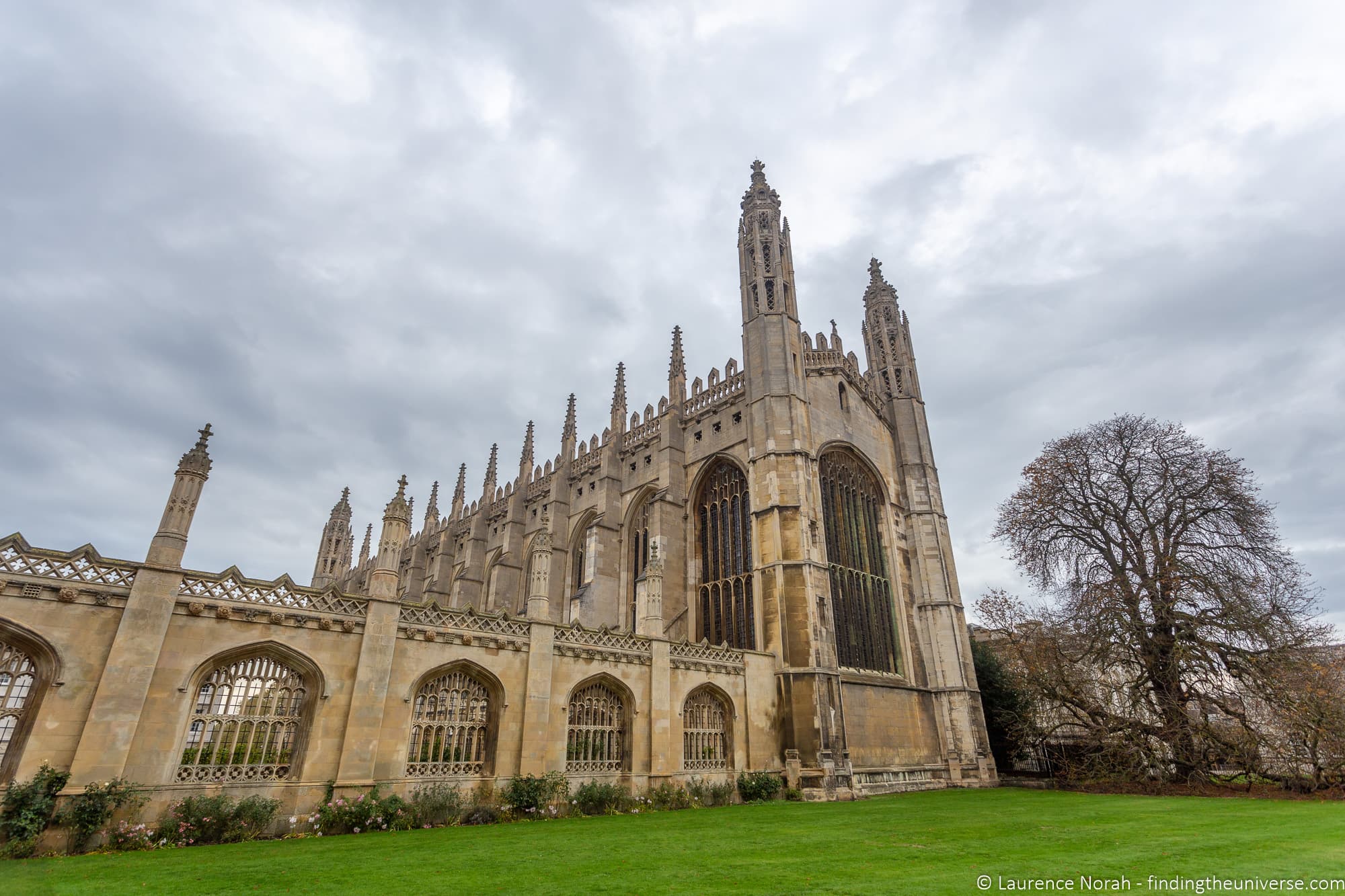
Built in the Perpendicular Gothic style of English architecture in the 15th century, King’s College Chapel is a fantastic building that needs to near the top of your to-do list in Cambridge.
It has the largest fan vault in the world, spectacular stained-glass windows, and a rood screen that was funded by Henry VIII as part of his wedding celebrations for Anne Boleyn.
The chapel is still in active use, and it is the home of the King’s College Chapel choir. It’s possible to visit here and watch both mass and concerts, and the acoustics are excellent.
If you’ve ever watched the BBC’s Christmas programming, there is always a broadcast of a solo performer singing Once in Royal David’s City live from the chapel.
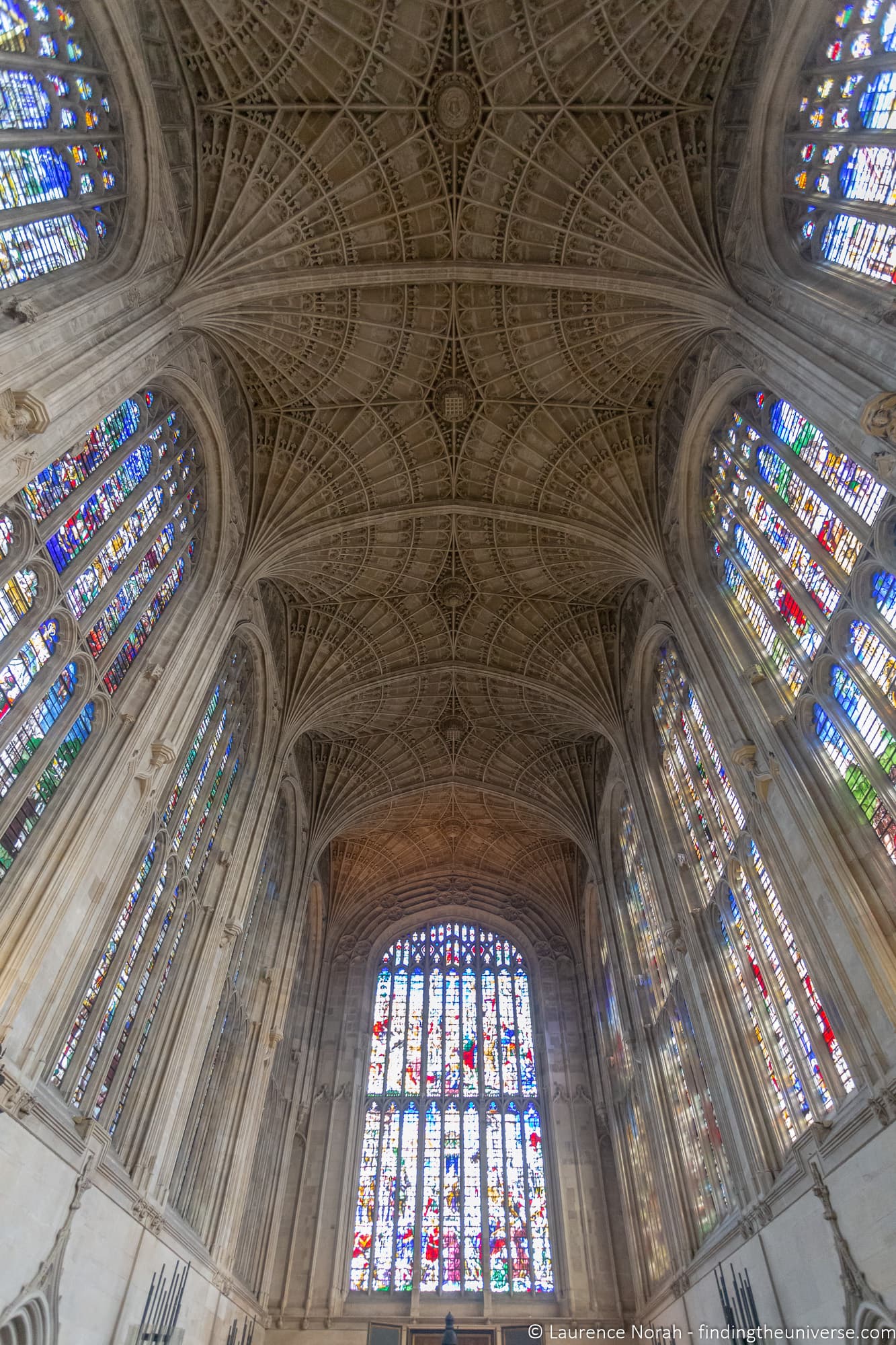
King’s College Chapel has an entrance fee, with tickets available from the King’s College visitor centre, which is opposite the chapel and college grounds. Tickets can also be purchased online here , to save you from queuing on the day. You can also take a tour which includes King’s College like this .
The ticket gives you access to the chapel and the grounds of the College. The chapel is open every day of the week, but opening times vary depending on the time of year. You can see prices and full opening hours here .
Wren Library
The Wren library is arguably the most impressive of all the college libraries at Cambridge. It was designed and built for Trinity College by Sir Christopher Wren, who also designed London’s St. Paul’s Cathedral.
The two storey library consists of a single long room. The bookshelves go up to the height of the first floor, above which the huge windows allow light to pour in. This was the first library to be designed with windows large enough to allow for sufficient light in for reading.
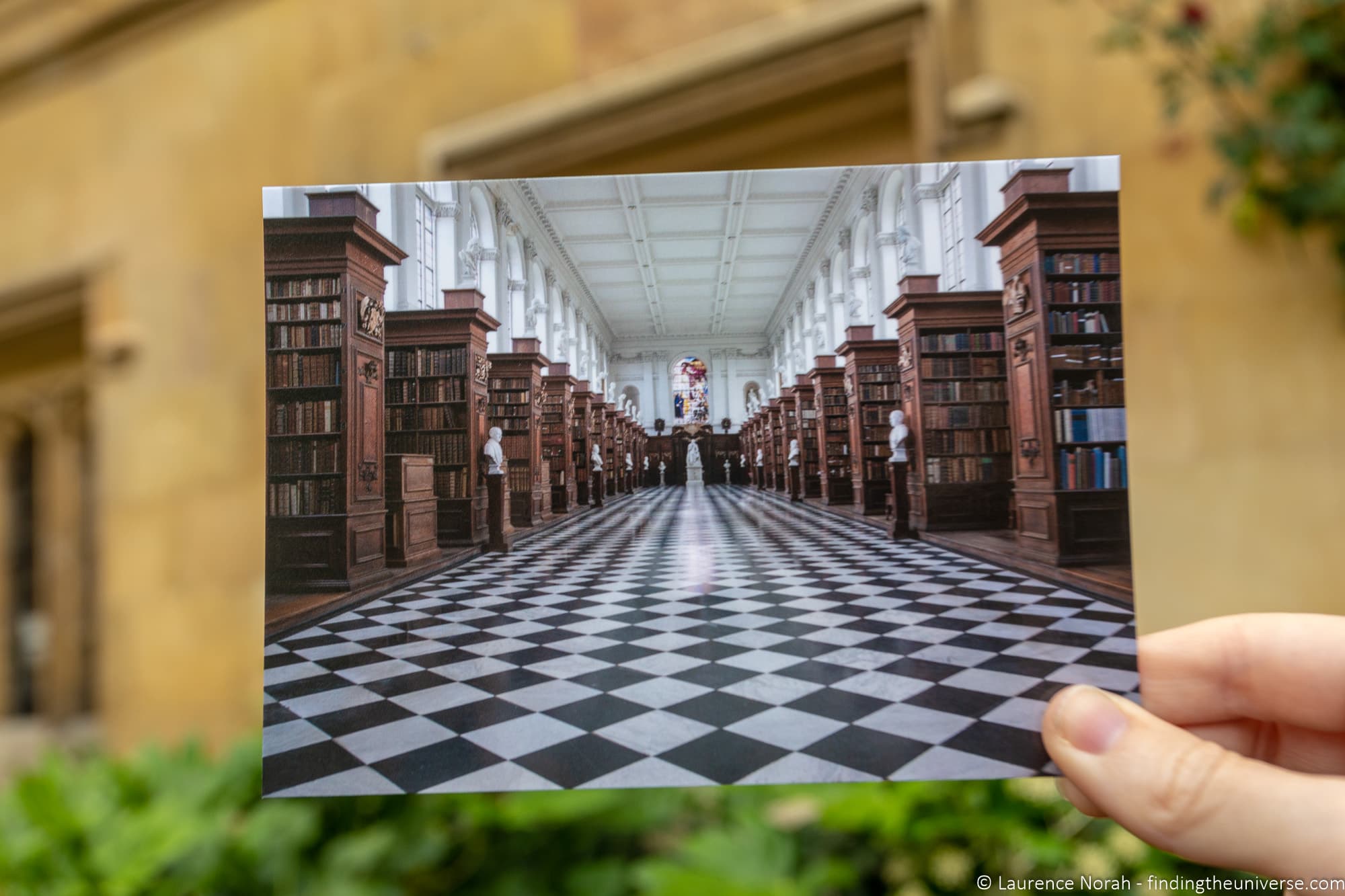
At the end of each bookshelf you’ll find the bust of a noted author, as well a a limewood carving by Grinling Gibbons, whose work can also be found at Windsor Castle and Hampton Court Palace, and who was generally regarded as the finest wood carver in England.
Inside the library there is a section of display cases containing some of the libraries most notable books and manuscripts. These include Isaac Newton’s first edition of Principia Mathematica , which has Newton’s handwritten notes for the second edition, A.A. Milne’s manuscripts for Winnie the Pooh and the House at Pooh Corner , and an 8th century copy of the Epistles of St. Paul , to name but a few.
The library is still very much a working university library, and as such access is carefully managed to as not to disturb those using it for academic purposes. Visiting hours are limited to 12-2pm, and visitors are restricted to 15 at a time. Photography is not permitted inside.
It’s free to visit though, and there’s a small souvenir shop where you can pick up postcards, although this is cash only.
Note – as of April 2023 the Wren Library is closed to the public. Check the official website here for more information and to see if it has reopened.
One of the most popular activities to do in Cambridge is to go punting. If you’re not sure what that means, a punt is a type of flat bottomed boat, and punting involves pushing yourself along the river using a long pole to propel yourself.
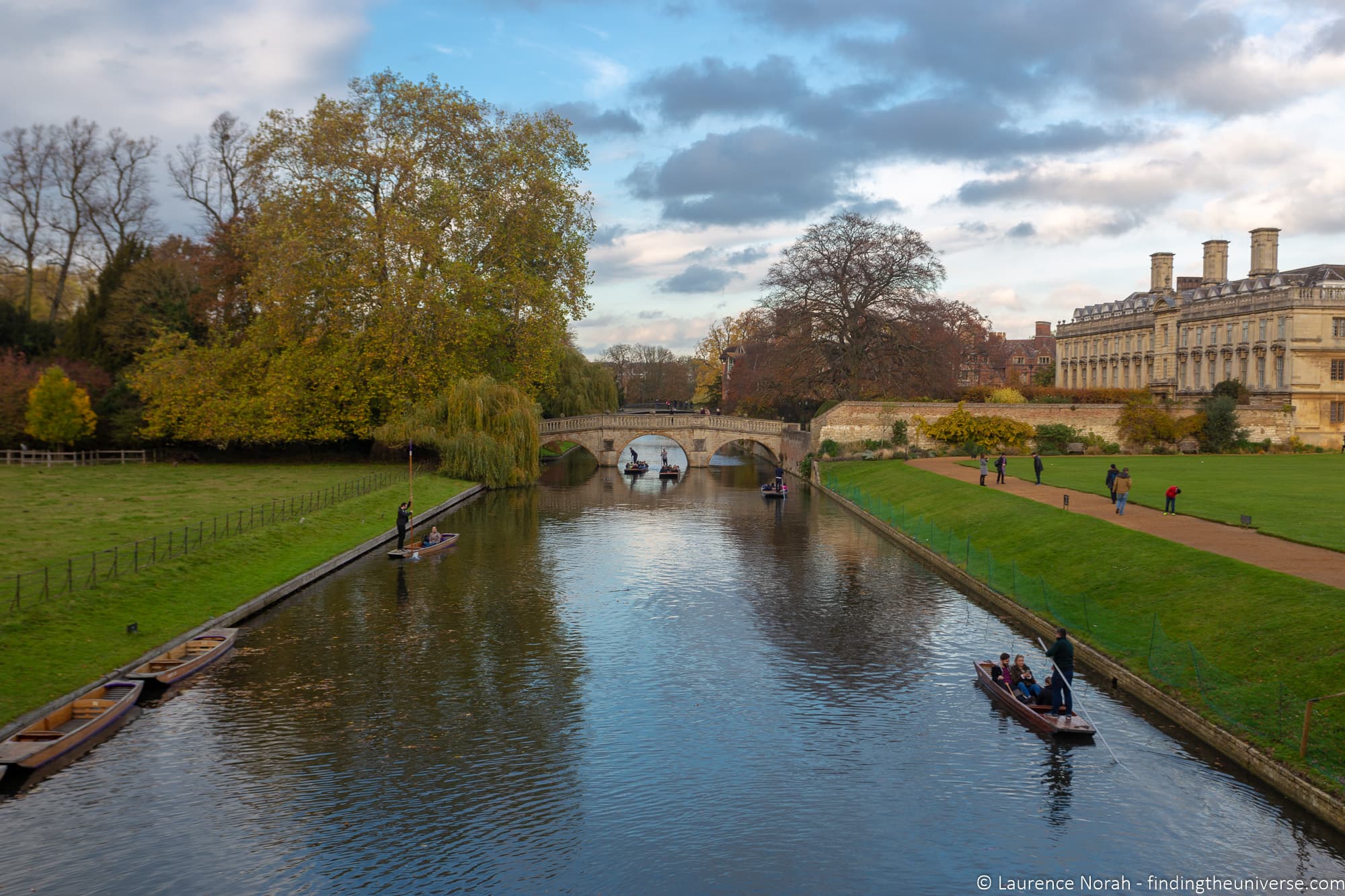
Punting is a lot harder than it sounds as we know from experience. So whilst you can hire a punt yourself and give it a go, we’d generally recommend that if you actually want to see some sights, you might prefer to take a tour with someone who knows what they are doing.
There are a variety of punt tour operators in Cambridge, with the majority offering tours of between 45 minutes and an hour – like this one with the Traditional Punting Company . Your punter will normally give you commentary about what you are seeing whilst also doing all the hard work, meaning you get to sit back and enjoy the unique views of Cambridge from the river.
Mathematical Bridge
Built in 1749, this famous Grade II listed wooden footbridge is a popular sight in Cambridge. Its unique construction give it the impression of being an arched bridge, but the reality is that it is built entirely from straight timbers.
This clever engineering design is why the nickname “ Mathematical Bridge ” has stuck.
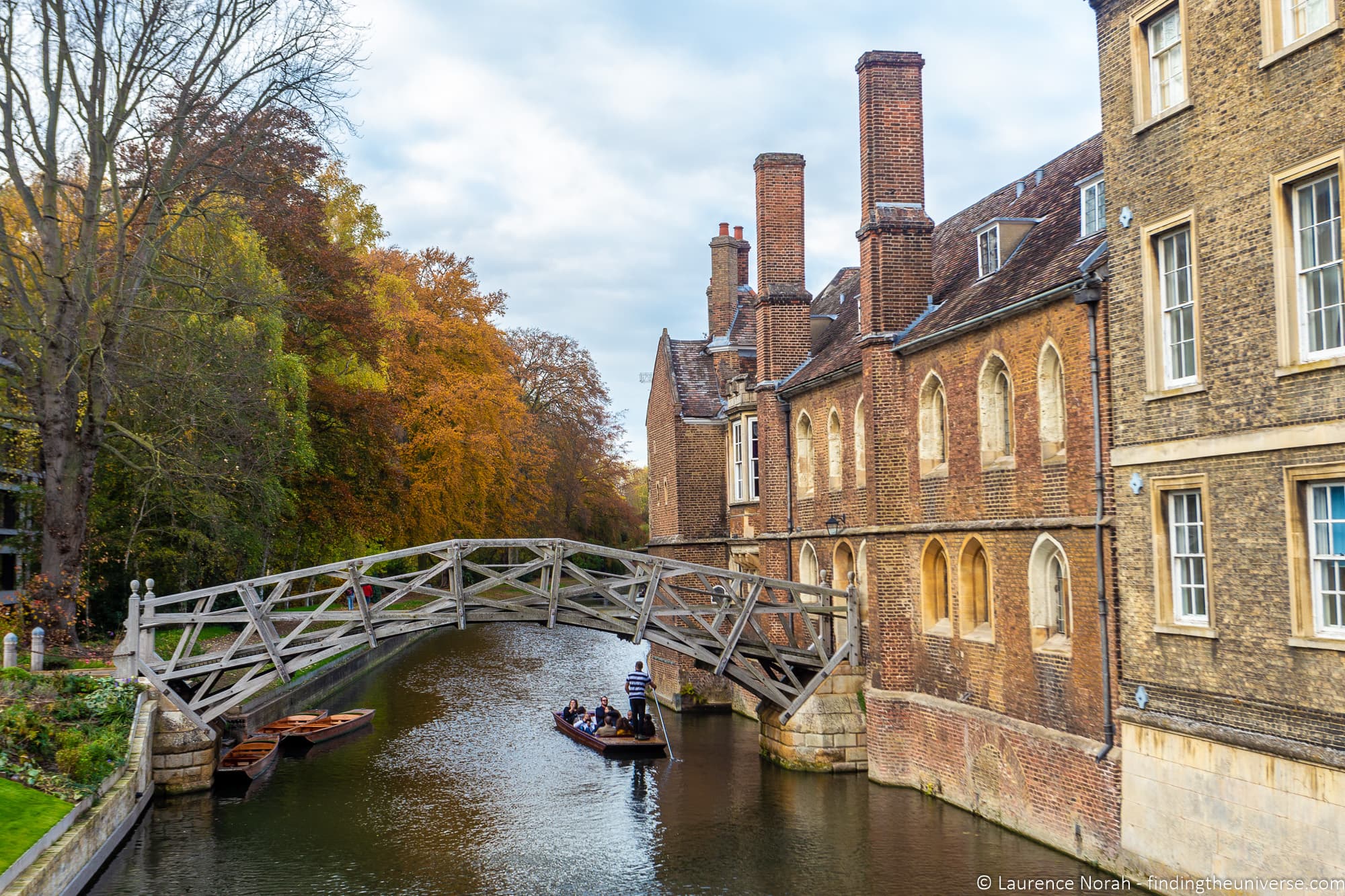
The Mathematical Bridge is in Queen’s College, so to visit the Bridge you need to visit the college during its public visiting hours and pay the visitors fee, which is £3.50 at time of writing. You can see the opening hours of the college and visitor information here .
In our opinion though, the best view of the Mathematical Bridge is to be had from a punting tour, which will take you directly under the bridge. You can also get a more distant view from the Silver Street road bridge, just a little to the south on the river.
Have a Pub Lunch
One of the fascinating things about visiting Cambridge is the sense of history that seems to permeate the air here – particularly a history of scientific achievement. You can literally visit the places where some of science’s biggest discoveries were made and unveiled.
In the case of the Eagle pub in Cambridge, you can both sit in the same place where Watson and Crick announced their findings on DNA, and enjoy a tasty pub lunch.
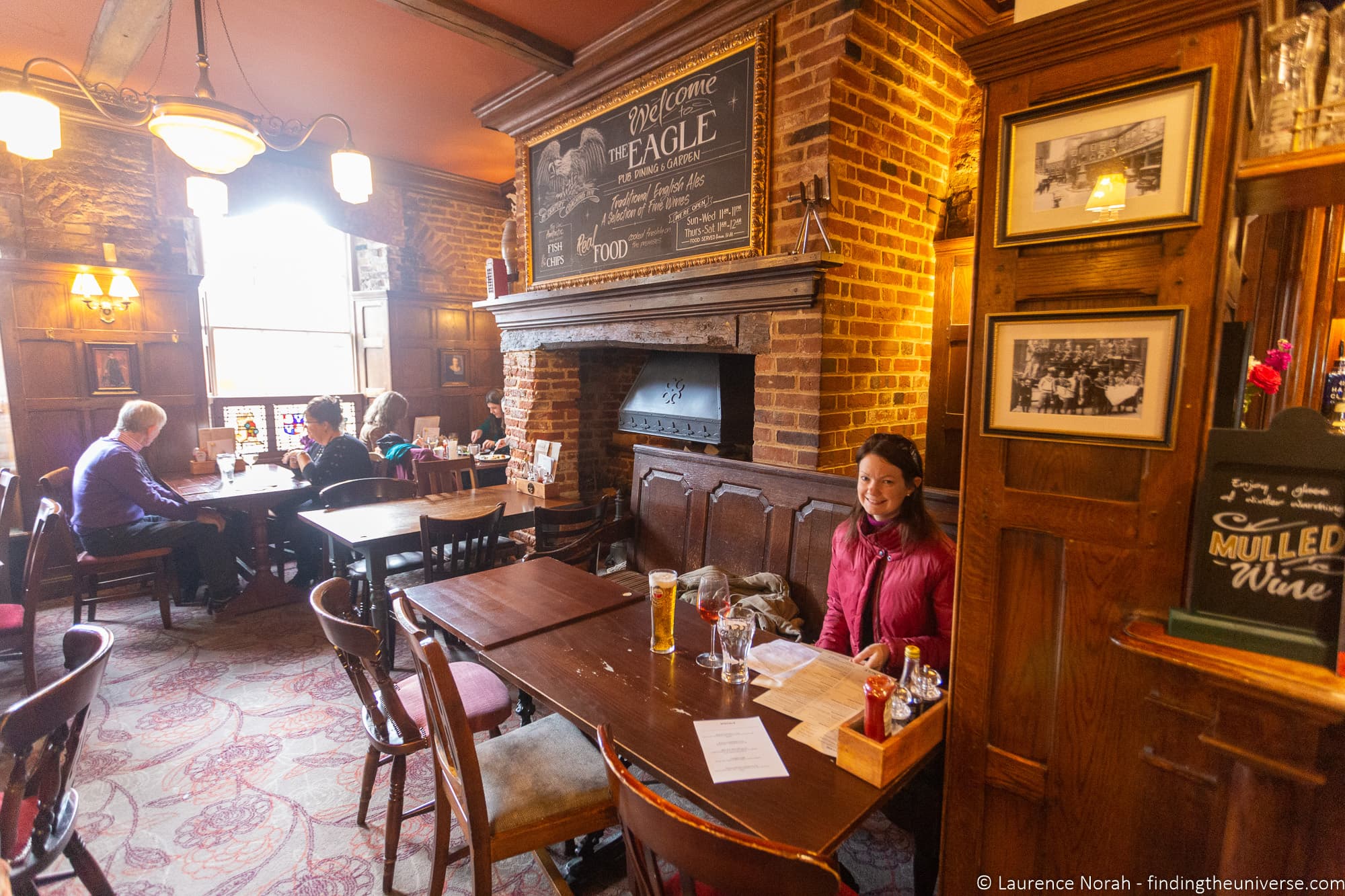
Of course, there are lots of places to have a great pub lunch. The Eagle is pretty special though, other than it’s connection with Watson and Crick. First, it’s arguably the oldest operating pub in the city, having opened in 1667. It also has a room known as the RAF room, where the graffiti of World War II airmen covers the walls.
Classic pub lunch fare in Britain includes dishes like steak and ale pie, fish and chips, gammon steak and eggs, or sausage and mashed potato.
We had an excellent pub lunch and pint of ale here, and you might want to come here or find another great pub in the city to do the same.
Cambridge Botanical Garden
Covering an area of 40 acres just to the south of the city centre, the Cambridge University Botanical Garden is a lovely place for a stroll.
Opened to the public in 1846, today the garden is home to a wide variety of plants and trees, which cover both British and international variants. There are large glasshouses which contain over 3,000 species, as well a a pretty fountain.
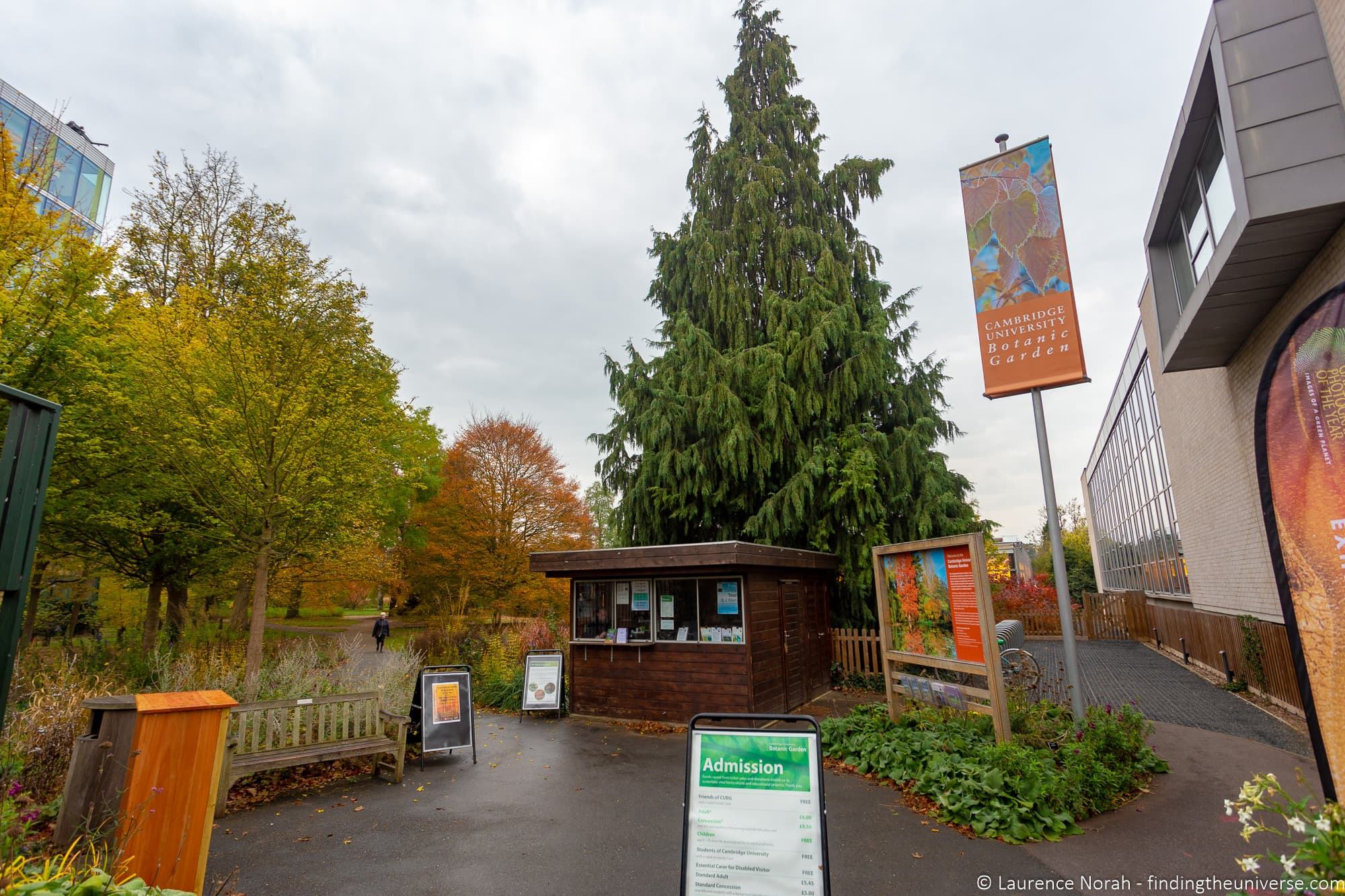
The garden is open year round, and there are self-guided trails you can take to explore the various collections on display. Opening times vary depending on the month, with the garden normally opening at 10am. At time of writing there’s a £6 fee to visit, with concessions available. See more on the official site here .
Cambridge Market
Found right in the heart of Cambridge at the Market Square, next to Great St. Mary’s Church is Cambridge Market . An outdoor market has been held in this location in the city since the Middle Ages!
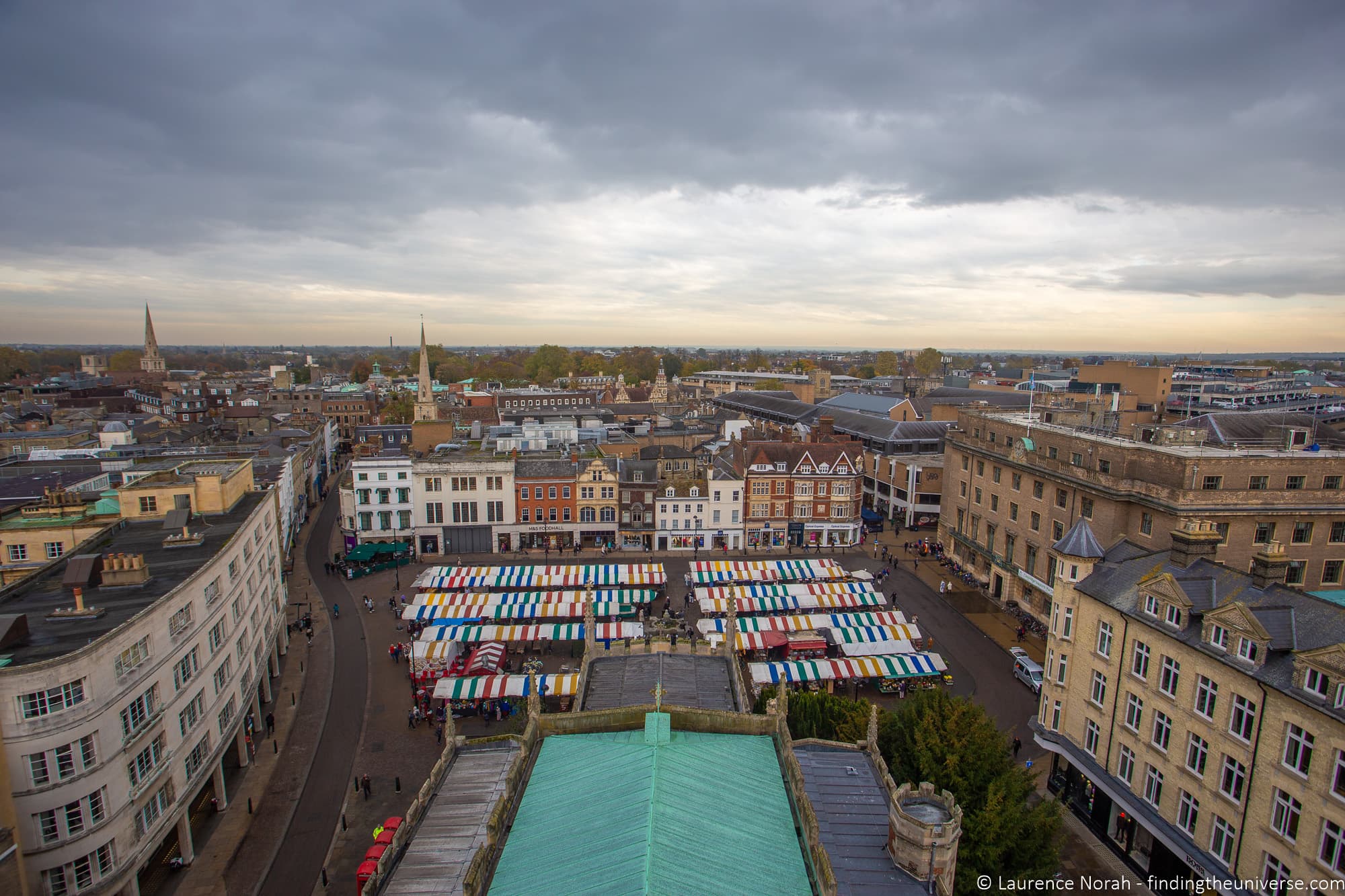
Today, there’s a wide variety of products on sale, from books and clothes to food, plants and mobile phone accessories.
The market operates Monday – Saturday from 10am – 4pm. On Sundays, there’s an arts and craft market, which also includes organic produce sales.
The Round Church
The Church of the Holy Sepulchre , more commonly known as the Round Church, is a 12th century stone built Parish church found in the centre of Cambridge on Round Church street.
The Church is managed by and is the home of Christian Heritage, and is one of only four medieval round churches still in use in England.
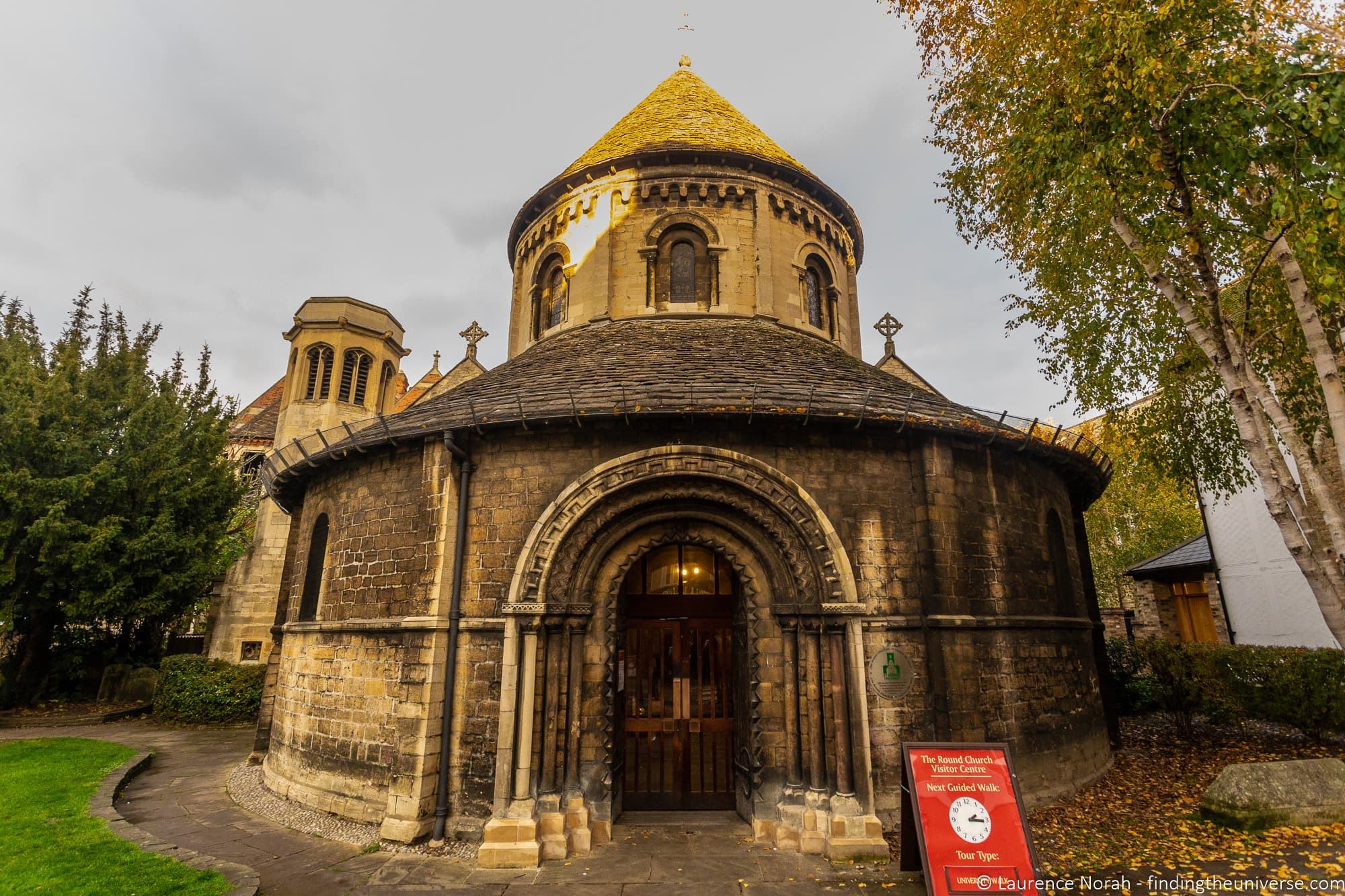
The church has an exhibition about the history and influence of Christianity on education and science, as well as a film about the history of Cambridge, and a display on the history of the church itself.
The church is open to visitors, and there’s an admission fee, which at time of writing is £3.50. It’s open every day except Sunday from 11am – 4.30pm.
The Christian Heritage charity also runs guided walking tours of Cambridge, which focus on Christian history, and which depart from and can be booked at the Round Church visitor center, or on their website here .
Map of Things to do in Cambridge
To help you visualize our recommendations for things to do in Cambridge, we’ve put them all in map. You can see this map on Google maps here .

Tours to Cambridge
Cambridge is a popular city to visit as part of a tour – either as a day trip from London, or on a multi-day tour of the UK. Here are a few options to consider, including tours of the city.
- A full day tour to Cambridge with departure from London, which includes transport and a guided tour of the city followed by free time to explore. This is another version of this tour .
- This full day tour to Oxford and Cambridge from London, which includes round trip transport and a guided tour of both Oxford and Cambridge. This will let you get a taste of both university cities. Another version here . Tours are also available from Oxford
- A five day tour through the heart of England and Wales , which includes time in Cambridge, as well as other highlights such as York, Stratford upon Avon, the Peak District, and Snowdonia
As you can see, there are a number of tour options, and we’re sure you’ll find one to suit your specific requirements.
When to Visit Cambridge
Cambridge is a good city to visit year round, with lots of both indoor and outdoor attractions. It is likely to be most busy during the summer months of July and August, and quieter in the off-season months like November and January.
One of the big attractions in Cambridge is of course the colleges, and these are active places of study. As such, they may close or have limited access for examinations.
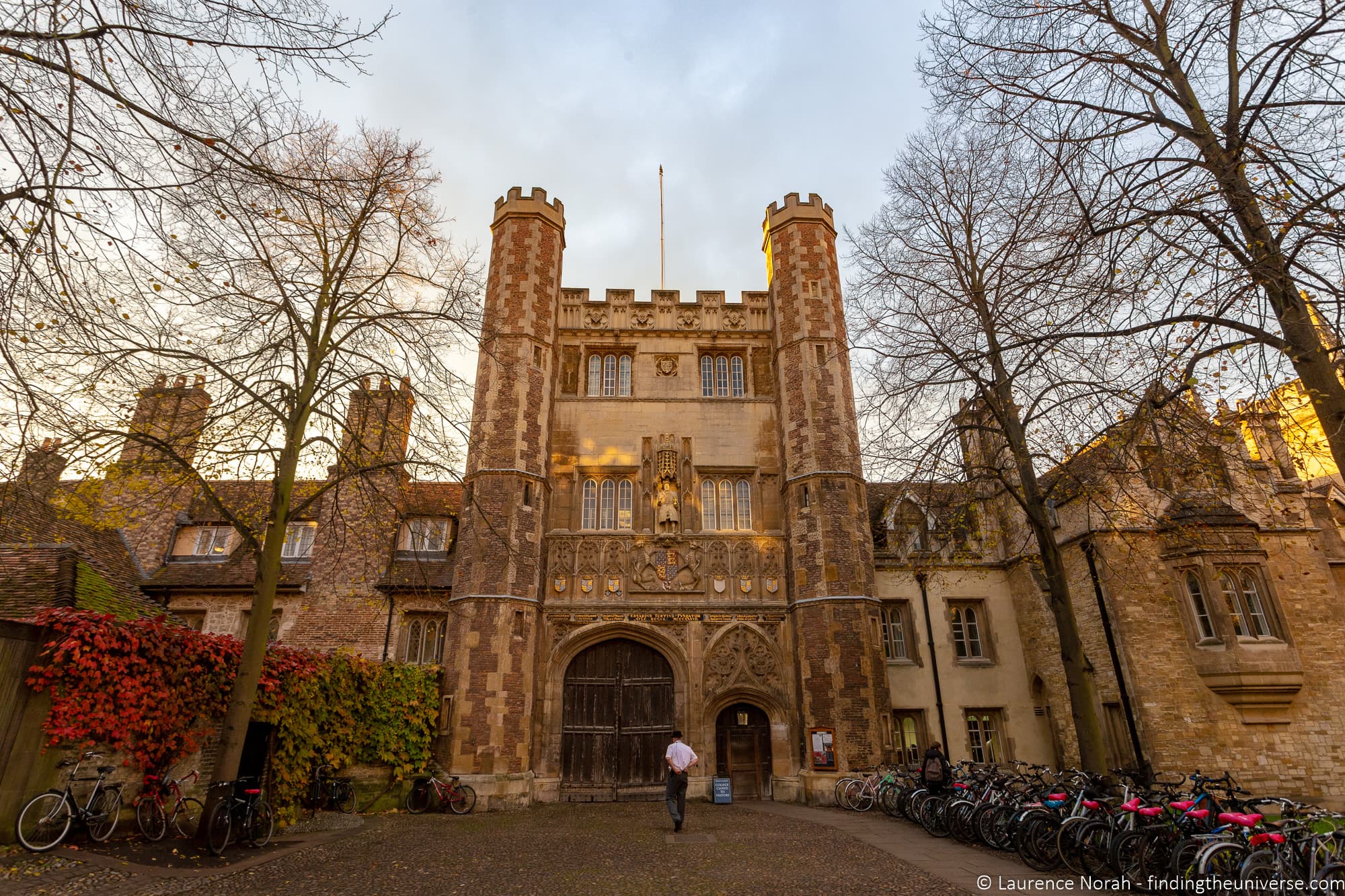
The majority of exams take place in between April and June, however exams can occur at other times, and if there is a particular college you want to see, you will definitely want to check their website to see if they have any visitor restrictions due to exams.
Also be aware that some colleges are rarely or almost never open to the public so be sure to check if there is one you particularly want to visit.
If you’re visiting Cambridge for the day, we’d advise checking opening days for any attractions you are keen to visit. In particular, many of the museums in Cambridge are closed on Mondays for example, so you might want to avoid visiting Cambridge on a Monday if you want to visit these museums.
How to Get Around Cambridge
Cambridge is an easy city to get around on foot. From the train station to the city centre is around a 15 – 20 minute walk, although there are also buses, taxis, and Uber available.
If you think you’ll be taking the bus a few times in Cambridge, you might consider buying a day ticket . For £4.50 (at time of writing), you’ll get unlimited rides for one day across the centre of the city and immediate surrounding area on Stagecoach buses, including everywhere on our things to do list.
Tickets can be purchased on the bus, with both cash and contactless payments accepted.
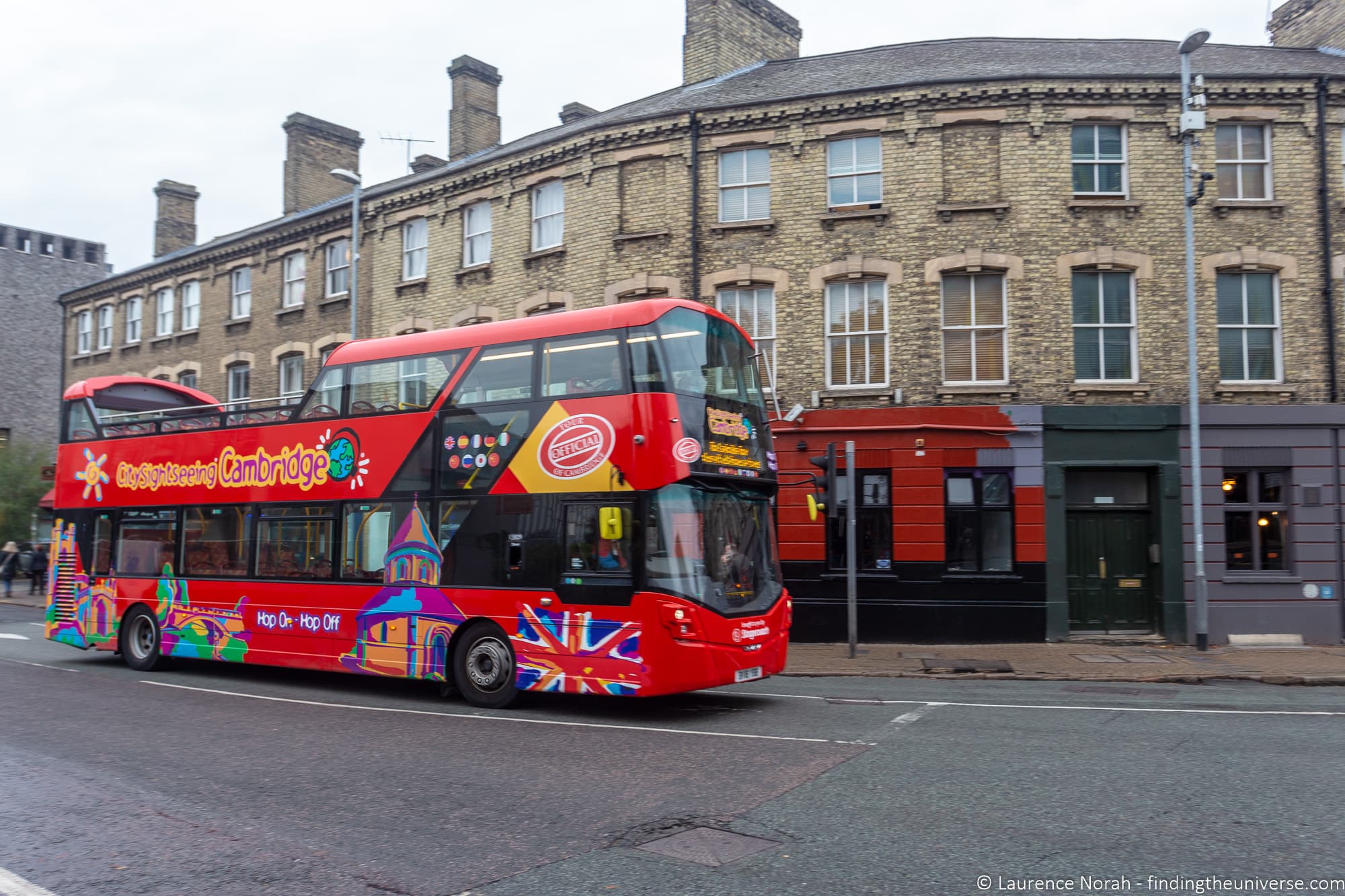
Another option of course is to take the Hop on Hop off bus . Tickets for these open top double decker buses will give you 24 hour riding privileges, which includes an audioguide, and the route stops at the majority of the highlights in the city. Buy your ticket here in advance .
How to Get to Cambridge
Cambridge is a well connected city which is easy to get to from other parts of the UK. From London, the best way to reach Cambridge is to take the train. Trains depart multiple times an hour from Kings Cross station, with journey times varying between 50 and 80 minutes.
We advise buying your ticket in advance here to get the best prices.
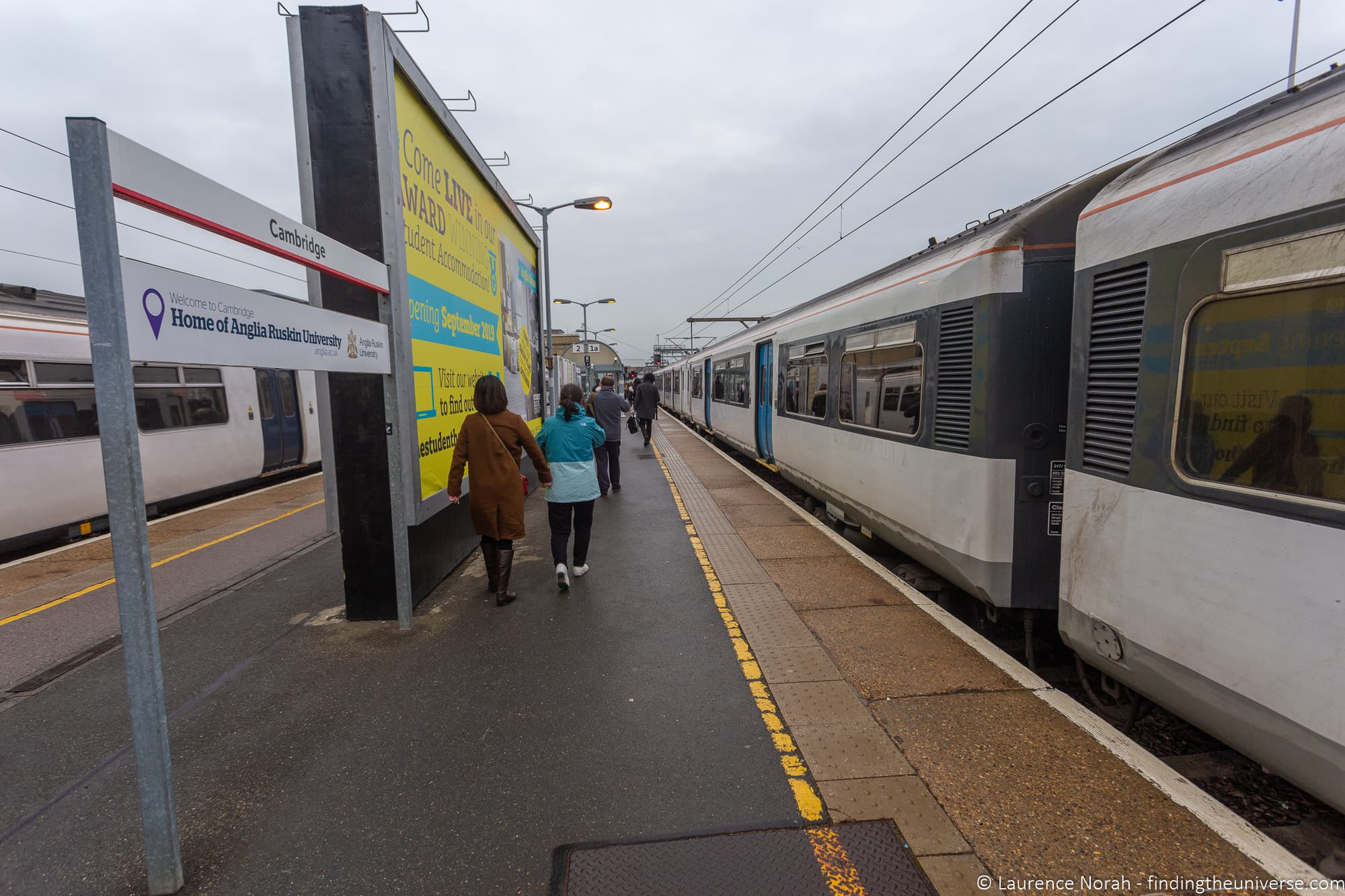
It’s also possible to take the bus to Cambridge, however from London this will usually take a couple of hours, so we’d advise taking the train where possible. You can check bus times and prices here .
The nearest airport to Cambridge is London Stansted, from where you can take the train or bus to Cambridge.
How Long to Visit Cambridge For?
We’d suggest spending at least a full day in Cambridge if you can.
However, as you can see from our list of things to do in Cambridge, there’s is a great deal to see and do. So whilst visiting Cambridge on a day trip is both a popular and viable option, if you stay for two or three days you will easily be able to fill your time.
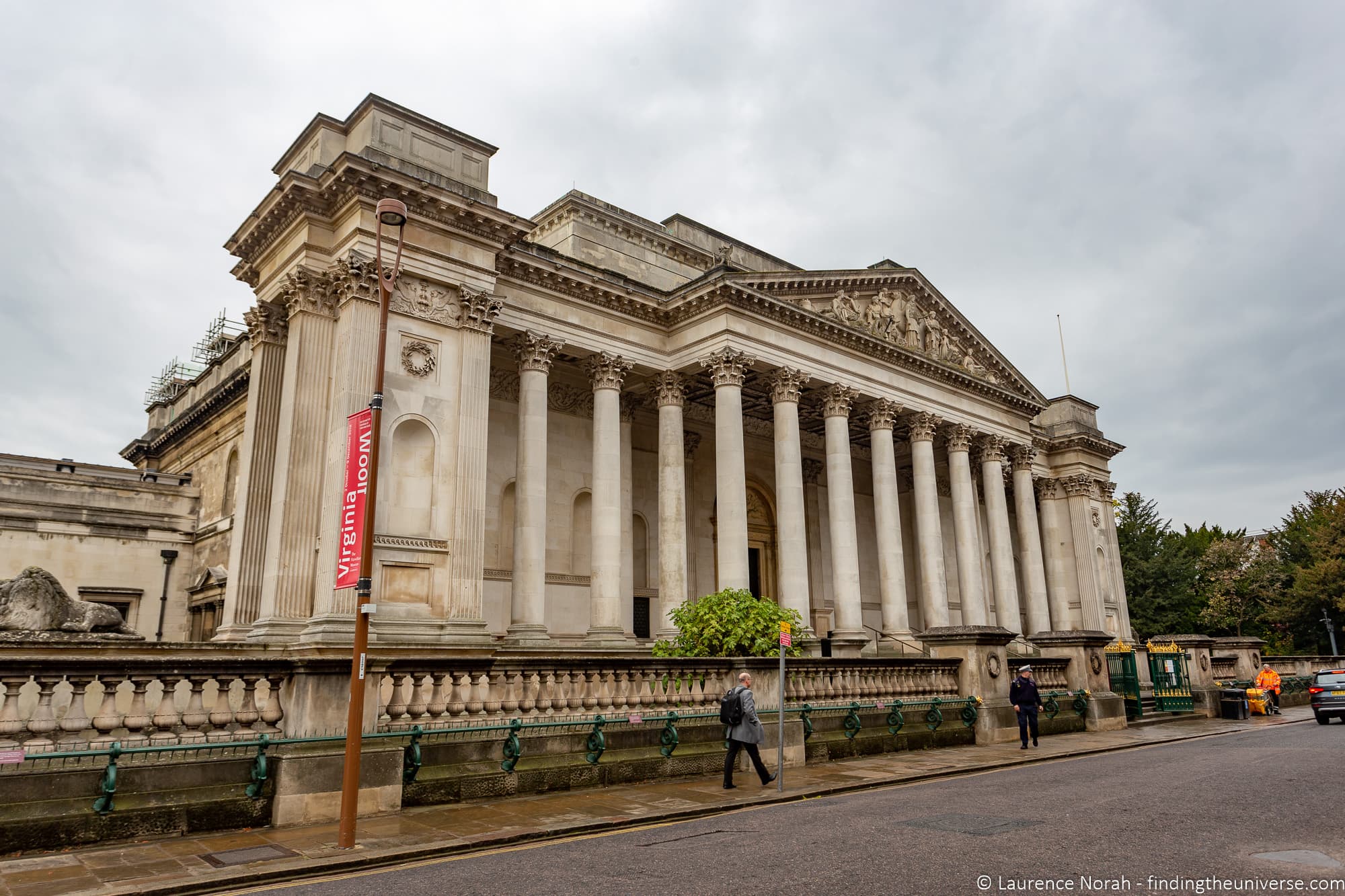
Where to Stay in Cambridge
If you choose to visit Cambridge for longer than a day, you’ll want somewhere to stay. Cambridge has a wide variety of accommodation options, from hostels to hotels.
We’ve gone through and picked out some of the best options in Cambridge across a range of budgets to help you find the right place for you.
- YHA Cambridge . If you’re looking for a hostel in Cambridge, this YHA is found between the train station and the town center. Accommodation ranges from dorm beds to private en-suite rooms.
- Cambridge City Mill – a great value aparthotel found between the city centre and the train station. Offers free wi-fi, and a variety of en-suite rooms, perfect for a family
- A & B Guesthouse – a well reviewed good value guesthouse for those of you looking for more of a B&B type experience. Rooms have tea/coffee making facilities, it’s found between the city center and the train station, and breakfast is available
- The Waterman – this traditional Cambridge pub is found just north of the city centre, and offers well-rated en-suite accommodation. There’s on-site dining, and breakfast is also available.
- Christs College – if you want to stay at a College, this is a good option, although note that you can only book for certain times of the year outside of term time
- The Gonville Hotel – this is a well reviewed 4* hotel just south of the city centre. It offers free bike hire, on-site dining, en-suite rooms with tea/coffee making facilities, and breakfast is available
- University Arms Hotels – part of the Autograph Collection, this 4* hotel in the city centre has lovely rooms, an excellent location, and all the facilities you would expect, from ensuite rooms to a fitness centre, bar, on-site restaurant and complimentary WiFi.
As well as the above, during summer and school breaks it is possible to sleep in the dormitories of some of the university colleges, such as Christs College .
Hopefully this gives you some ideas for where to stay in Cambridge. Take a look at all the options, from apartments to hotels, here .
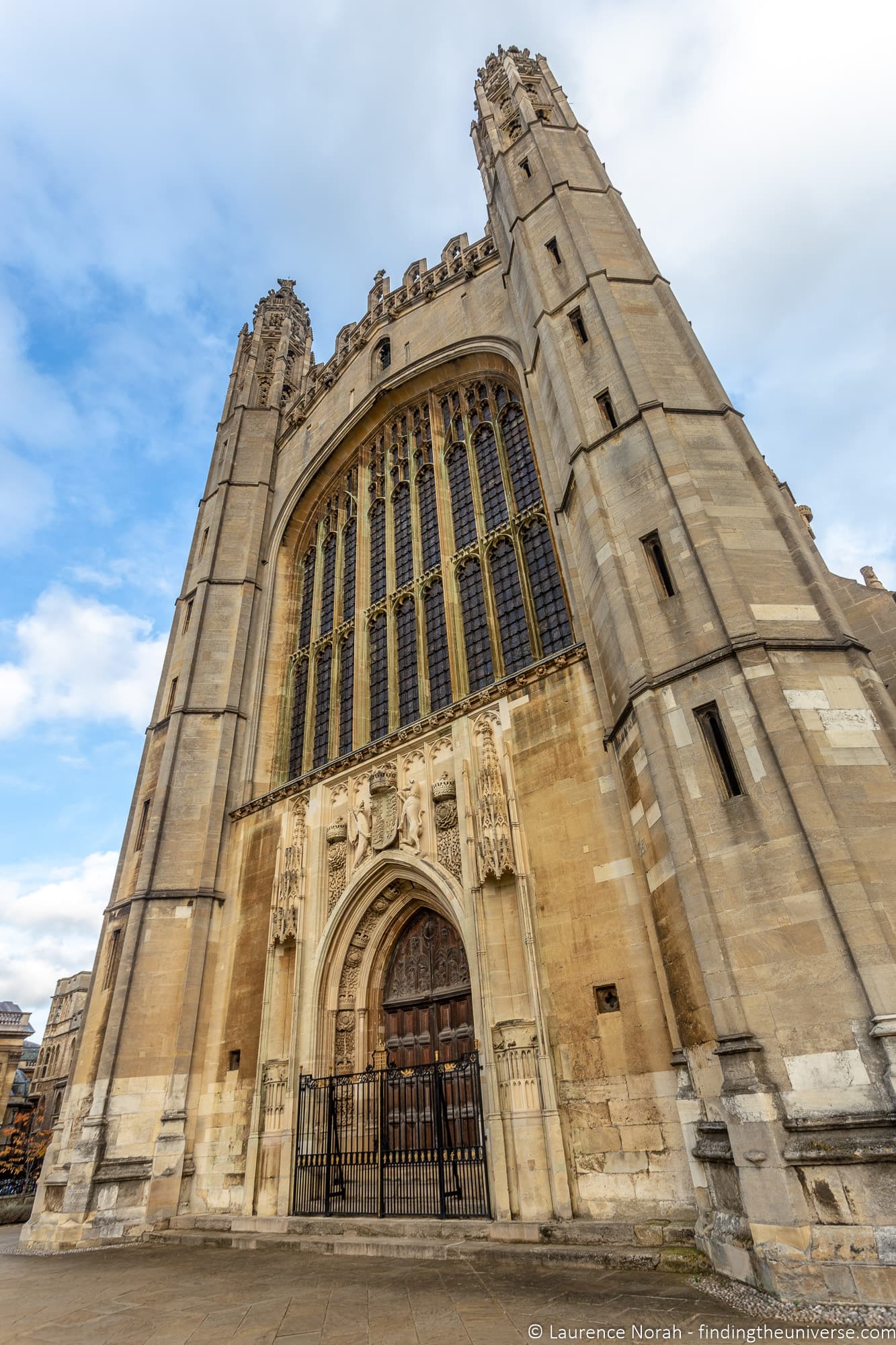
Further Reading
That’s almost it for our detailed guide to visiting Cambridge in the UK. Before you go though, we wanted to share some more of our UK content to help you plan your trip here.
- If you’re staying in London, you should check out our 1 day London itinerary , 2 day London itinerary , 3 day London itinerary and 6 day London itinerary , which will give you plenty of ideas for how to fill your time in the UK’s capital city
- We have a guide to visiting Oxford from London , as well as a guide to taking a day trip to Stonehenge from London
- Cost is often a key factor when planning a trip. See our guide to how much it costs to travel in the UK to help out
- If you’re planning on renting a car in the UK, we have some tips for driving in the UK to help out. We also have detailed one week and two week UK road trip itineraries
- We also have guides to many other cities in the UK, including things to do in Bristol , things to do in Edinburgh , things to do in Portsmouth , and things to do in Glasgow , to name but a few.
- If you’re interested in a guide book for your trip to Cambridge, we can recommend the Rick Steves England book or the Cambridge Greater than a Tourist guide
And that’s it for our guide to things to do in Cambridge! As always, we’re happy to hear your feedback and answer your questions – just pop them in the comments below and we’ll get back to you as soon as we can.
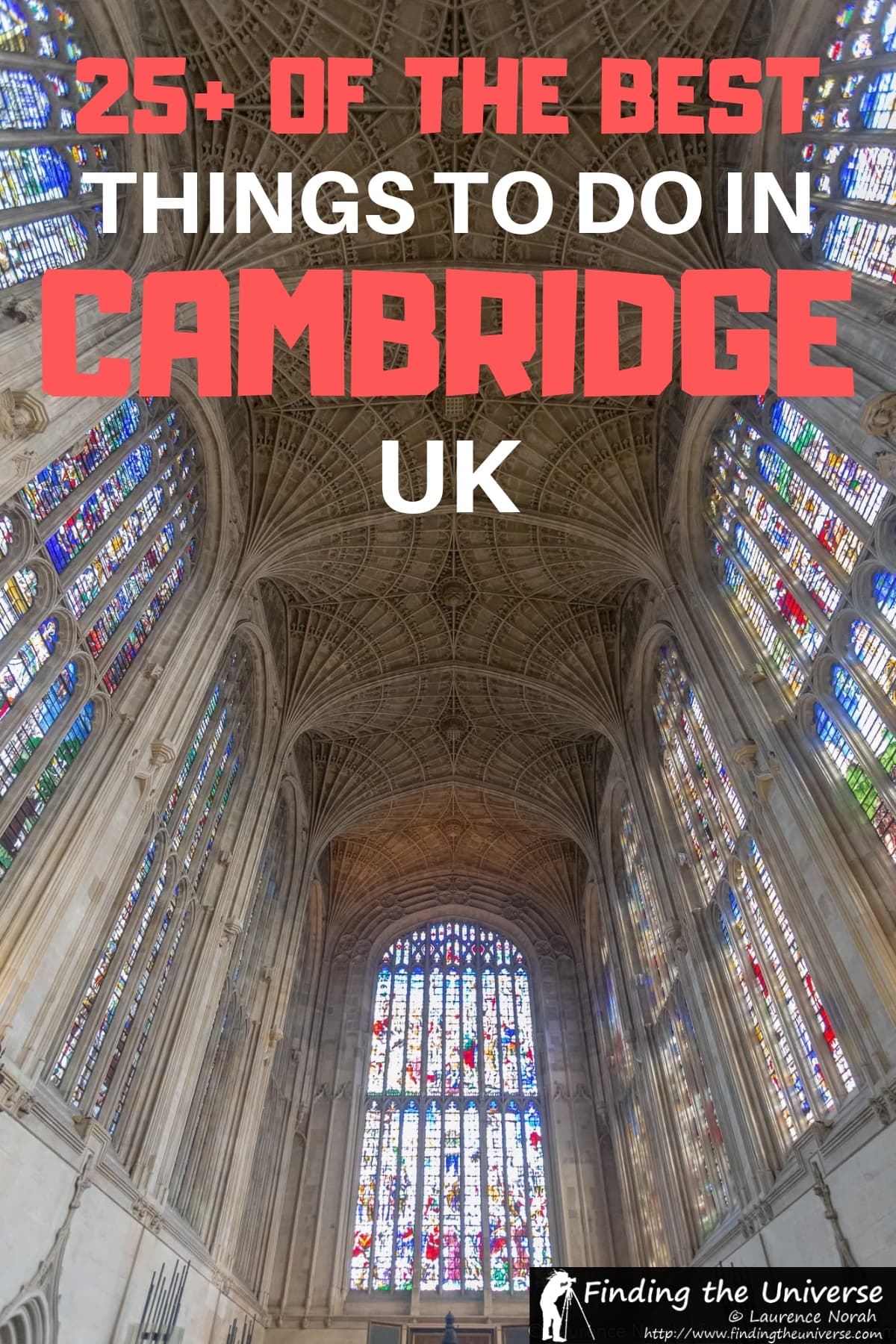
Enjoyed this post? Why not share it!
There are 4 comments on this post
Please scroll to the end to leave a comment
Kwok Fung Au Yeung says
6th March 2023 at 2:12 am
Wren Library is close to public
Laurence Norah says
8th April 2023 at 8:27 pm
Thanks for letting me know! We always recommend checking opening hours and times before visiting any attraction as they can close for various reasons. I hope you still enjoyed your time in Cambridge 🙂
Linda Watt says
5th April 2021 at 6:14 am
The beautiful Cambridge American Cemetery, with its visitor center that tells the story of the air war that was critical to the Allied victory in WWII, is so worth a visit!
Very helpful article on Cambridge, by the way!
5th April 2021 at 11:48 am
Thank you very much, and thank you also for that tip Linda! We haven’t made it to the Cambridge American Cemetery but it sounds very interesting – we’ll definitely check it out on our next visit to Cambridge 🙂
Leave a Reply Cancel reply
Your email address will not be published. Required fields are marked *
Let me know when there's a reply to my comment (just replies to your comment, no other e-mails, we promise!)
Subscribe to our monthly Newsletter where we share our latest travel news and tips. This also makes you eligible to enter our monthly giveaways!
We only ask for your e-mail so we can verify you are human and if requested notify you of a reply. To do this, we store your data as outlined in our privacy policy . Your e-mail will not be published or used for any other reason other than those outlined above.

Cambridge Travel Guide (including tips, itinerary + map)
By: Author Tracy Collins
Posted on Last updated: December 6, 2022
Our Cambridge Travel Guide includes recommended places to visit and things to do, accommodation options, tips and more for one of the most famous university cities in the world. Everything you need to plan your visit and essential reading for any visitor to Cambridge!
Plan your visit to Cambridge
Located 55 miles north of London is the city of Cambridge. Home to one of the world’s most famous and prestigious universities this ancient seat of learning, and historic city, is smaller and more compact than Oxford.
Spend the day exploring some of its 31 architecturally stunning colleges, famous museums, or take to the river for a spot of punting. Read on for Cambridge travel tips and advice to help you plan your visit.
What you will find in this complete Cambridge Travel Guide
Map of Cambridge
When is the best time of year to visit cambridge, how many days do you need in cambridge, what is the best way to explore cambridge, which city should i visit – oxford or cambridge, by train from london, by car from london, take a tour from london to cambridge, attractions and things to do in cambridge, accommodation in cambridge, tickets, tours & attractions in cambridge, books to read before visiting cambridge, enjoy your visit to cambridge.

Cambridge travel guide – Visiting Cambridge FAQ’s
Cambridge is one of England’s most beautiful cities and a wonderful destination whatever time of year you plan to visit. During the summer months, Cambridge is the perfect destination if you would like to try punting. Take to the river and enjoy views of the bridges and University buildings as you meander along.
Cambridge is one of the UK’s driest cities so with luck you should have a pleasant and dry day whatever time of year you choose to visit.
The Cambridge Folk Festival which is the biggest folk festival in Europe is held annually in June-July.
It is possible to see the main sights and attractions of Cambridge in a day which makes it the perfect day trip from London .
The city’s main attractions and sights are within easy walking distance which makes Cambridge a great destination to explore on foot. We recommend joining a guided walking tour to make the most of your visit.
Both cities have their own unique charms and are worth a visit.
Cambridge is a smaller city than Oxford. There is less to do and see but it is a beautiful and easy city to explore in a day.
Oxford is the larger city and has lots of things to see and do so could easily fill 2 days if you wish to explore all its colleges and museums. It is also the perfect destination to visit if you are considering a road trip to the Cotswolds. If you are a Harry Potter fan head to Oxford where you will find several film locations used in a number of the movies. Read more about visiting Oxford in my Oxford Travel Guide .
As I have mentioned both cities are doable day trips from London by train. If you only have one day and want to see both cities take this Oxford & Cambridge Day Tour from London.
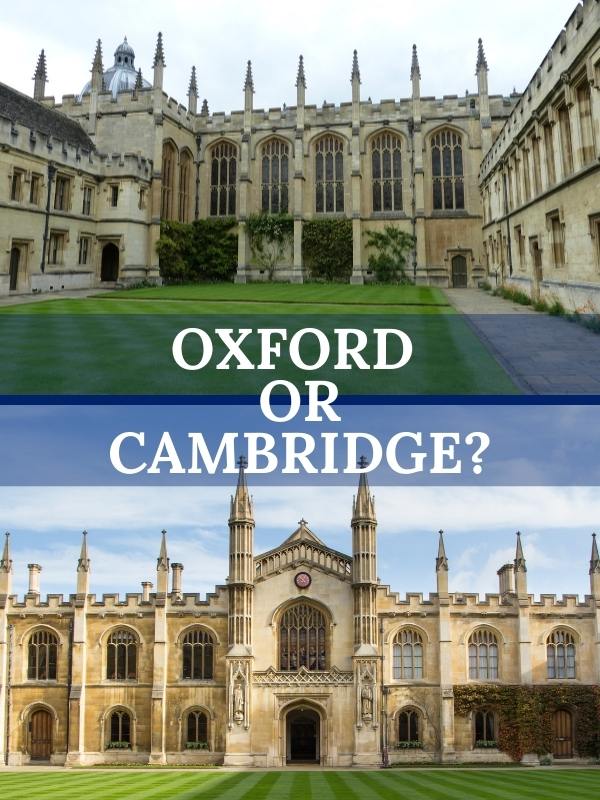
What is the best way to travel to Cambridge from London?
For timetables and tickets we recommend the trainline . Take the train to Cambridge for the day or incorporate it into your UK train travel itinerary.
Tip – If this is your first time catching a train in the UK read our complete guide to UK train travel which includes all the information you need to know to make travelling around the UK by rail a relaxing and stress-free experience.
- Distance from London: 55 miles
- Time taken by train: 50 mins to 1 hour 50 depending on route
- Leave from: London St Pancras International to Cambridge is the quickest route
Cambridge is located 55 miles from London and will take over an hour and 30 minutes from London by car. Unless you are planning to visit from London and head to other destinations in the UK we recommend taking the train!
If you do plan to drive to Cambridge you will find that parking is expensive so we recommend using the Park and Ride scheme . There are 5 locations around the city to park your car and catch a bus into the city.
We recommend these day tours to Cambridge from Get Your Guide.
- City and University Tour including King’s College – Visit the iconic landmarks of Cambridge University and enter the famous King’s College Chapel. Enjoy a walking tour with a Cambridge University student and see the world behind the institution’s closed doors.
- Exclusive Chauffeur: London to Cambridge and Woburn Abbey – Enjoy the luxury and comfort of your own private chauffeur whisking you out of London to beautiful Cambridge and Woburn Abbey. Discover the beauty of the English countryside on this exclusive private tour.
Click the links for more information about the best things to do in Cambridge and an itinerary for your day including visiting the Fitzwilliam Museum, going for a punt on the River Cam, exploring Cambridge’s Colleges (each an architectural marvel) such as St John’s King’s College and much more!
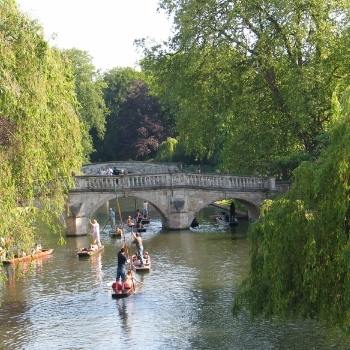
One day in Cambridge Itinerary
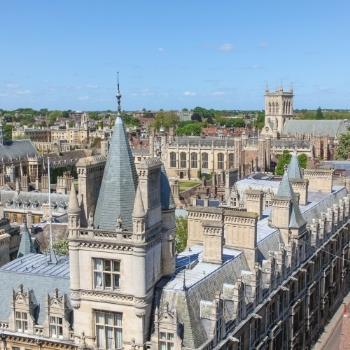
BEST PLACES TO STAY IN CAMBRIDGE
Find more special stays in my Accommodation Guide for England.
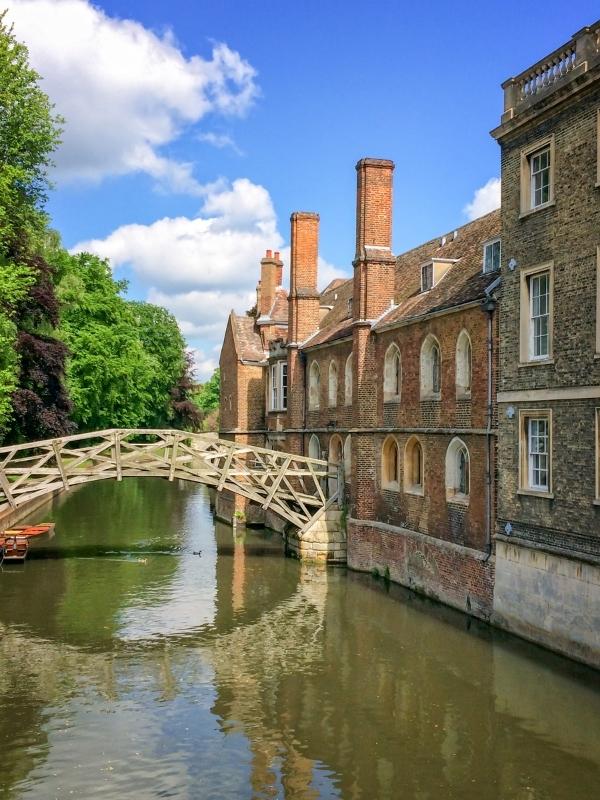
There are numerous walking tours (and punting tours) of Cambridge available.
- University Punting and Walking Tour – Discover the beauty of Cambridge on a combined 90-minute walking tour and 50-minute punting cruise along the River Cam.
- Guided Walking Tour of Historic Cambridge – Take a two hour guided tour of historic Cambridge with an accredited Cambridge Green Badge guide. The fun and family-friendly tour will show you the city’s stunning buildings and tell you about its many famous names.
- Cambridge University Guided Walking Tour with a Graduate – Get an insight into life at one of the world’s most elite universities on a 1.5-hour historical walking tour of Cambridge University with a graduate guide. Visit some of the most famous colleges, such as Clare College and Trinity College.
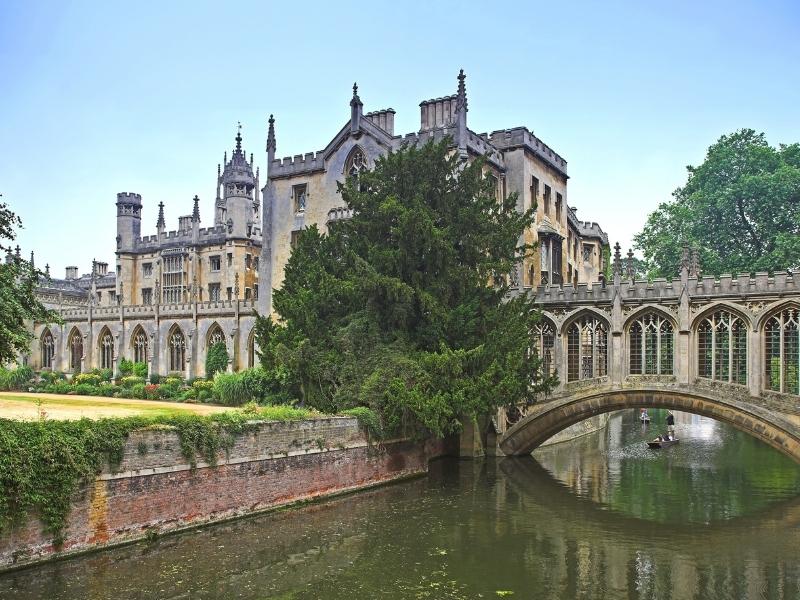
Cambridge is proud of its literary heritage and connections with many famous authors who have studied or taught at one of its colleges. To fully appreciate and enjoy your visit to Cambridge we recommend reading some of their works.
These include
- William Wordsworth
- Sylvia Plath
- E.M.Forster
- Zadie Smith
- Sebastian Faulks
- Stephen Fry
- Salman Rushdie
- Margaret Drabble
- Joanne Harris
- Nick Hornby
This guide will have provided inspiration plus practical information to help plan your visit to Cambridge. You will find more inspiration and ideas to help plan your travels around England in these travel guides:
- Devon Travel Guide (including tips, itinerary + map)
- Liverpool Travel Guide (including tips, itinerary & map)
- York Travel Guide (including essential travel tips, itinerary + map)
- Peak District Travel Guide
- Lake District Travel Guide
- 10 virtual tours of famous landmarks in the UK
Looking for more inspiration for your travels in England? Check out my England Travel Planning Guide which has lots of ideas, tips and resources to plan your itinerary.

17 Top-Rated Tourist Attractions in Cambridge, England
Written by Bryan Dearsley Updated Dec 28, 2023 We may earn a commission from affiliate links ( )
Famous the world over for its university, Cambridge lays claim to having one of the highest concentrations of preserved historic buildings anywhere in England.
Most of this architectural splendor is centered around Cambridge University's 31 colleges , each rich in tradition. The first of these "schools" was established in the 12th century by immigrant scholars from Paris, and the first college, Peterhouse, was founded in 1284.
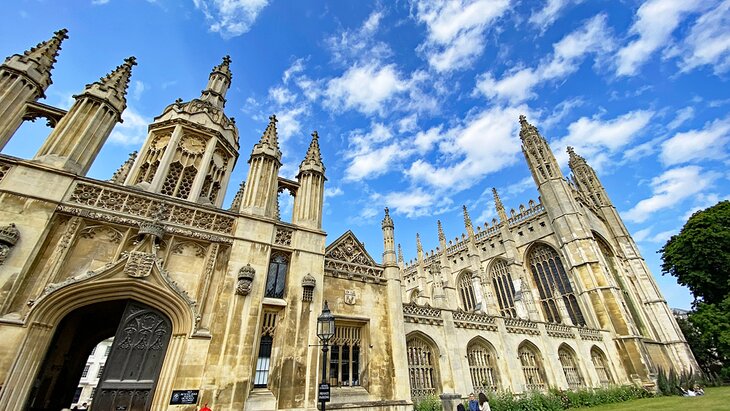
Long before the university was founded, Cambridge was already an important Norman fortification. Although its castle was short-lived, Castle Mound can still be seen near Shire Hall and affords great views over the city. The city remains to this day an important market town. Market Hill, originally the center of Cambridge's ancient wool trade, still serves as the location of the city's busy marketplace.
Despite its medieval character, Cambridge is a thoroughly modern town that hosts a variety of top-notch cultural events throughout the year. These include the Midsummer Fair , over 800 years old and held in the same location on Midsummer Common; the famous Cambridge Folk Festival , one of the largest and longest running in Europe; and the world-class Cambridge Film Festival .
It's also popular for its numerous green spaces. These include the 25-acre Parker's Piece , famous as the birthplace of modern football, and the Victorian-era Christ's Pieces , known for its lovely ornamental trees and flowerbeds.
For more sightseeing ideas in one of the most popular places to visit in England, be sure to read our full list of the top tourist attractions in Cambridge.
See also: Where to Stay in Cambridge
1. The Fitzwilliam Museum
2. explore the river cam, 3. king's college and king's college chapel, 4. queens' college and the mathematical bridge, 5. cambridge university botanic garden, 6. great st. mary's church, 7. the round church, 8. trinity college, 9. anglesey abbey, gardens, and lode mill, 10. museum of archaeology and anthropology, 11. peterhouse college, 12. pembroke college, 13. corpus christi college, 14. st. john's college, 15. museums of cambridge, technology, and science, 1`6. the polar museum at the scott polar research institute, 17. the national horse racing museum, where to stay in cambridge for sightseeing, map of tourist attractions in cambridge, england.
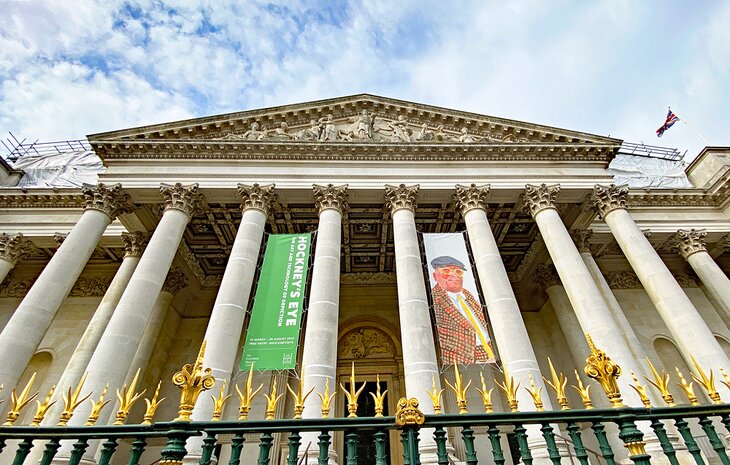
The most famous museum in Cambridge, The Fitzwilliam should be included on everyone's must-see list of tourist attractions. This masterpiece of architecture contains a magnificent collection of English pottery and china, as well as Greek, Roman, and Egyptian antiquities. It's also known for its rare illuminated manuscripts.
The exceptionally fine art gallery has works by Hogarth, Gainsborough, and Turner, as well as Impressionists and Dutch Masters of the Baroque including Rembrandt, Van Dyck, and Rubens. There's also a great café on-site, along with a gift shop.
Address: Trumpington Street, Cambridge
Official site: www.fitzmuseum.cam.ac.uk
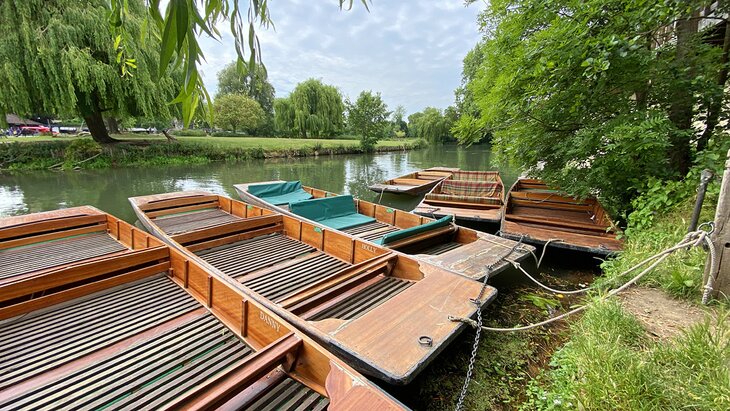
One of the most popular things to do in Cambridge is to spend time exploring the River Cam , which runs through the heart of the city. You can cross the Cam in a number of places that offer great views of the river.
One of the most picturesque spots is the Silver Street Bridge . From here, you'll get some excellent photos of the famous Mathematical Bridge one side and over the docked punting boats, or "punts," toward Landress Green and Sheep's Green .
Follow the riverside path, and you'll also find the Punt Lift Rollers , an interesting spot where you can watch crews and eager tourists portaging their vessels from one body of water to another.
Some of the best views, though, can be had from the water itself, as the Cam passes extremely close to some of the most attractive college buildings. In addition to fun chauffeured tours where a crew member, usually a student, does the punting for you, rentals are also available by the hour for those wanting to go it alone.
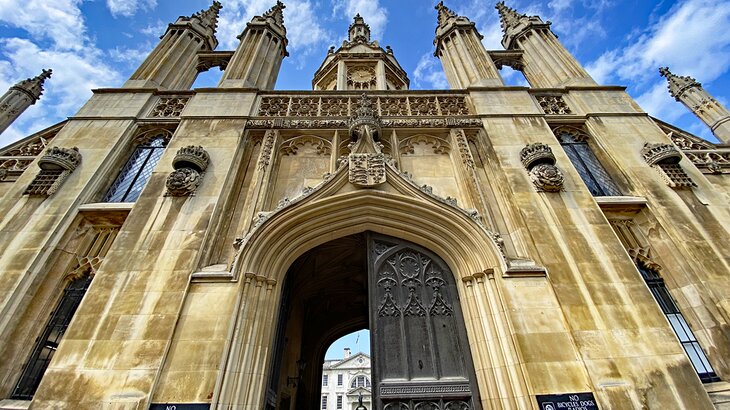
Founded in 1441 by Henry VI and the earliest of the royal foundations, King's College is worth visiting for the huge expanse of lawn extending down to the river and King's Bridge . Here, you'll enjoy lovely views of the Backs , the various college grounds along the riverside. Distinguished alumni includes writer Horace Walpole, poet Rupert Brooke, and economist Lord Keynes.
A must-see here is King's College Chapel. Renowned for its 12-bay perpendicular-style interior, as well as its breathtaking fan vaulting by John Wastell (1515), it's a must-see in Cambridge.
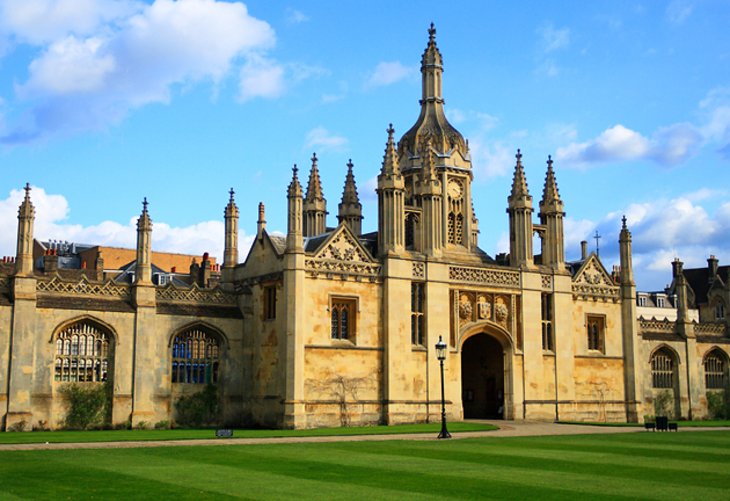
Also worth checking out: the lovely tracery on the windows and walls; the spectacular 16th-century stained-glass windows; the lavishly carved 16th-century wooden organ screen and choir stalls; and the altarpiece, Rubens' Adoration of the Magi (1634).
Hot Tip: If visiting during term time, be sure to attend Evensong to hear the world famous King's College Choir in action.
Address: King's Parade, Cambridge
Official site: www.kings.cam.ac.uk
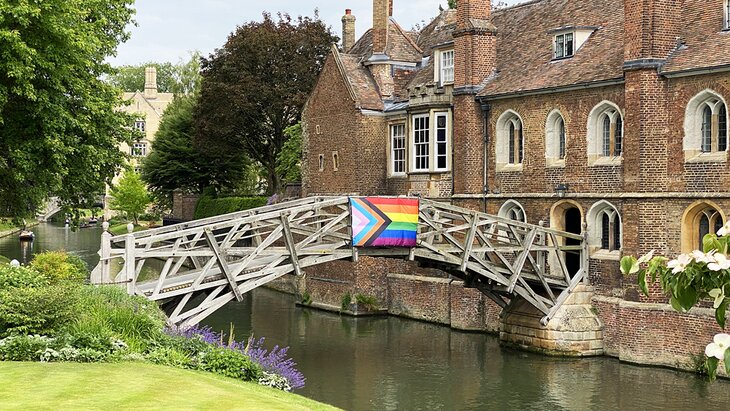
Founded in 1448 by Andrew Dockett under the patronage of Margaret of Anjou, wife of Henry VI, Queens' College was refounded in 1465 by Elizabeth Woodville, wife of Edward IV. It has the most complete medieval buildings of all Cambridge's colleges, including the magnificent gateway leading to the red brick First Court, dating from the period of foundation.
Other Queens' College sites to visit include the wooden Mathematical Bridge. This 1902 reconstruction leads over the Cam to the lovely college gardens, and is so called because it was built without nails, relying for its strength on meticulous calculation.
Also worth seeing are Cloister Court (1460) with the President's Lodge, a handsome half-timbered building, and Pump Court. Here, you'll find the Erasmus Tower above the rooms, occupied by Erasmus when he taught Greek here (1511-1514).
Walnut Tree Court (1618), Friars Court with the Erasmus Building (1961), and the Victorian chapel (1891) are also worth seeing.
Address: Silver Street, Cambridge
Official site: www.queens.cam.ac.uk
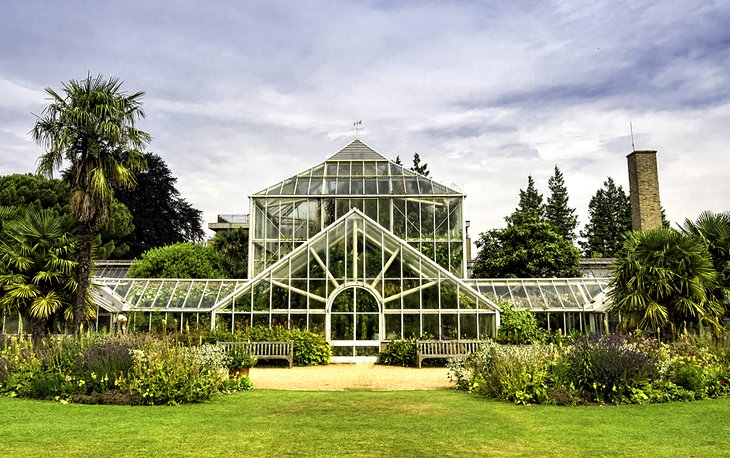
Covering an area of some 40 acres, a visit to Cambridge University Botanic Garden is a must-do for gardening enthusiasts. Established in 1831, the garden showcases an impressive collection of more than 8,000 species of plants from across the globe.
Be sure to spend time wandering through the garden's many glasshouses and trails, something that can be done as part of a guided tour, which are free on Sundays. Afterwards, visit the Garden Café and Botanic Garden Shop.
Be sure to check out their website for news of upcoming events and festivals.
Address: 1 Brookside, Cambridge
Official site: www.botanic.cam.ac.uk/Botanic/Home.aspx
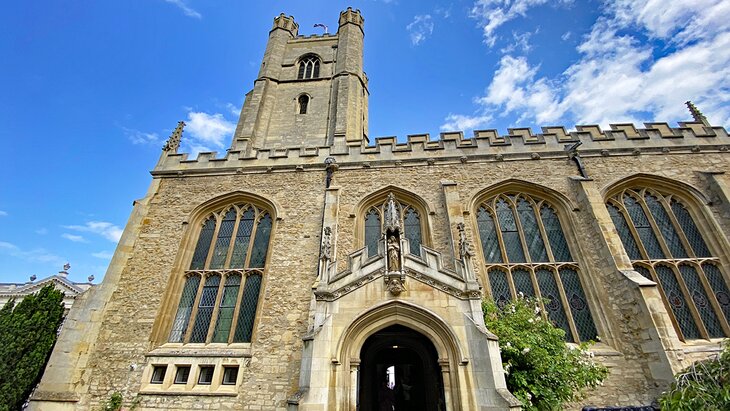
Great St. Mary's Church is both a parish and university church. Built in the 15th century, it has a fine interior, its galleries being added in 1739 at a time when university sermons, given by great scholars, attracted huge congregations. The tower, erected in 1608, is famous for its views over Cambridge.
Also worth a visit is Little St. Mary's. Known as St. Mary the Less , this Anglican parish church is famous for its many fine stained-glass windows.
Another important church, the Gothic Revival Church of Our Lady and the English Martyrs, one of the largest Roman Catholic churches in Britain, was built in 1885 and houses a rare statue of the Virgin Mary.
Location: Senate House Hill, Cambridge
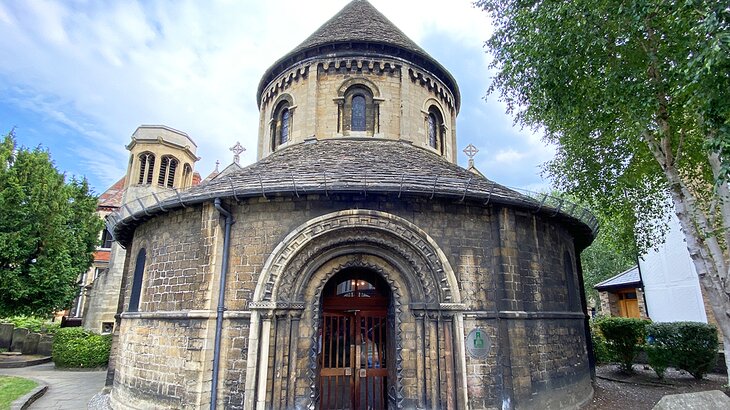
Better known as the Round Church, the Church of the Holy Sepulchre is one of only four Norman round churches left in England. Built in 1131, its rectangular chancel was added in the 15th century.
This is one of the prettiest small churches in England. Visitors can get the most from their visit by joining an informative guided walk that includes the church and its surroundings. While best booked in advance, you can also purchase tickets in the Round Church Visitor Centre subject to availability.
Address: Round Church Vestry, Bridge Street, Cambridge
Official site: https://roundchurchcambridge.org
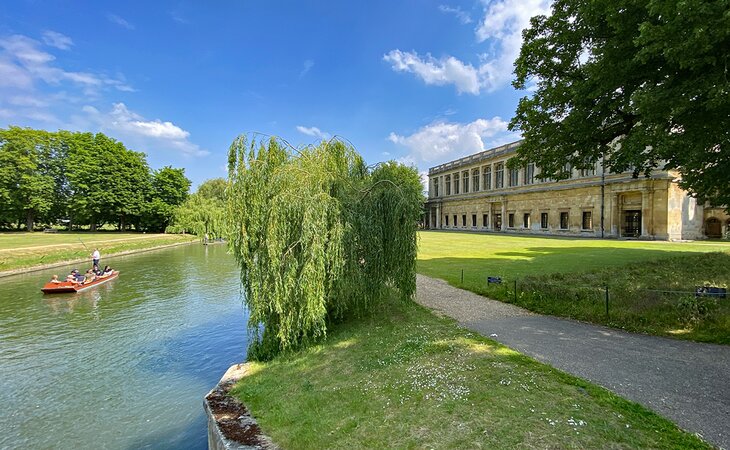
Established in 1546 by Henry VIII, Trinity College was created by the merger of several older colleges, including Michaelhouse and King's Hall. Beyond King Edward's Gate (1418), parts of the old King's Hall buildings are still identifiable.
Trinity Great Court is the largest court in Cambridge and was laid out around 1600. A passage leads into Nevile's Court (1614), with its chapel and statues of distinguished scholars. Wren's Library , designed by famed architect Sir Christopher Wren and added later, is notable for its old oak bookcases and fine lime woodcarvings.
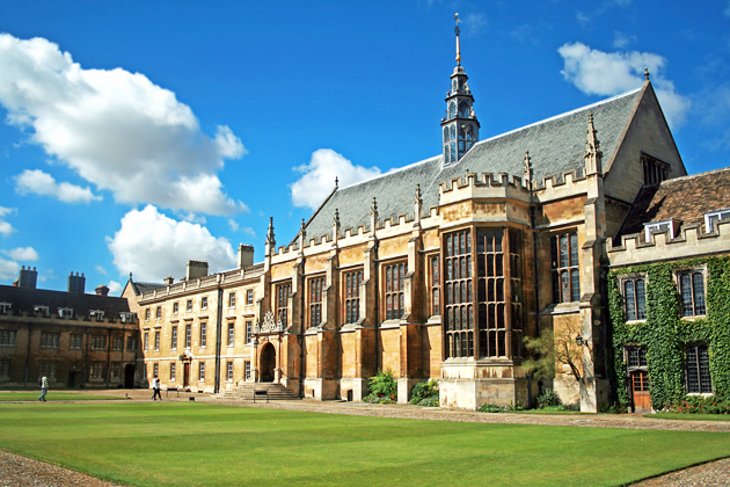
Trinity has more distinguished former members than any other college. These include statesmen Austen Chamberlain, Stanley Baldwin, and Nehru; poets and writers such as George Herbert and Edward Fitzgerald; philosopher Bertrand Russell; and scientist Isaac Newton. Edward VII and George VI also attended Trinity.
From New Court, or King's Court, take the bridge over the Cam for its beautiful view of the Backs. A magnificent avenue of limes leads to the College Grounds .
Location: Trinity College, Cambridge
Official site: www.trin.cam.ac.uk
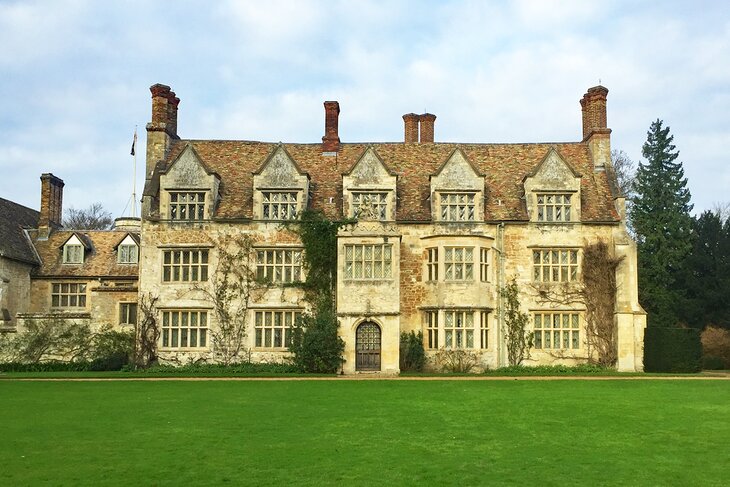
Although built in the 12th century, Anglesey Abbey was refurbished in 1926 and came to be known as a house of fine art and furnishings. Now a National Trust property, this spectacular home contains numerous tapestries by the likes of Gobelin, Soho, and Anglesey. There's also an art collection featuring Constable's The Opening of Waterloo Bridge .
Be sure to spend time enjoying the surrounding gardens and 114 acres of parkland. These impressive grounds include the Wildlife Discovery Area , where younger visitors can watch birds and bugs in their natural habitats, and the Lime Tree Lookout .
Afterwards, visit the historic water mill, known as the Lode Mill. Here, you can watch the grindstones do their job. Be sure to check the attraction's website for news of special events.
Address: Quy Road, Lode, Cambridge
Official site: www.nationaltrust.org.uk/anglesey-abbey-gardens-and-lode-mill
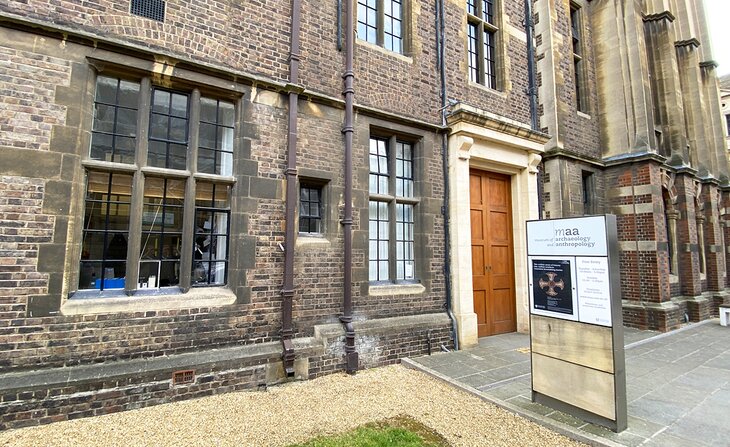
Developed by Cambridge University in 1884, the Museum of Archaeology and Anthropology holds an important collection of prehistoric material and artifacts dealing with social anthropology. Collections have been gathered from around the world and include pieces from Africa and the Orient, with a focus on the visual and classical arts.
Of particular note is the Pacific collection, taken mainly from Cook's explorations, and other research projects made by notable British anthropologists. Regular educational programs for kids and adults are held throughout the year (check their website for details).
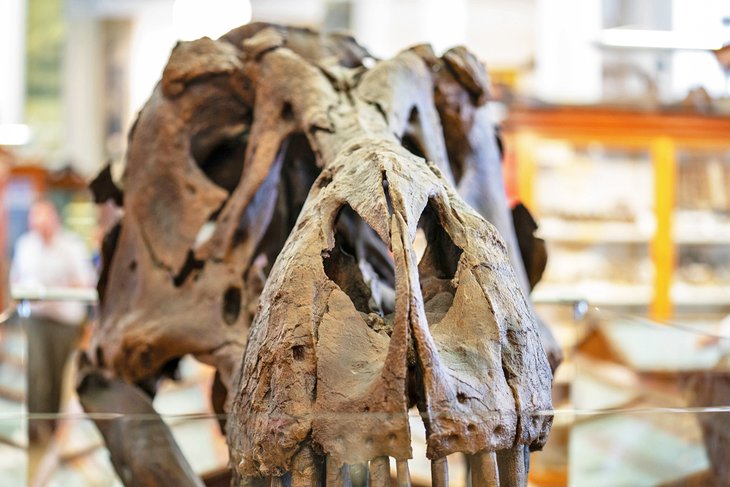
You'll also want to visit the Sedgwick Museum of Earth Sciences , too. This fascinating museum houses the university's geology collection, including some two million minerals, rocks, and fossils. Highlights include numerous meteorite specimens, as well as the Beagle Collection consisting of fossils and rocks gathered by Charles Darwin between 1831 and 1836. The museum also offers a wide variety of family activities and kids' programs.
Also of interest is the newly refurbished University Museum of Zoology . Highlights of this recently renovated Cambridge attraction include a large collection of scientifically important zoological material.
Address: Downing Street, Cambridge
Official site: https://maa.cam.ac.uk
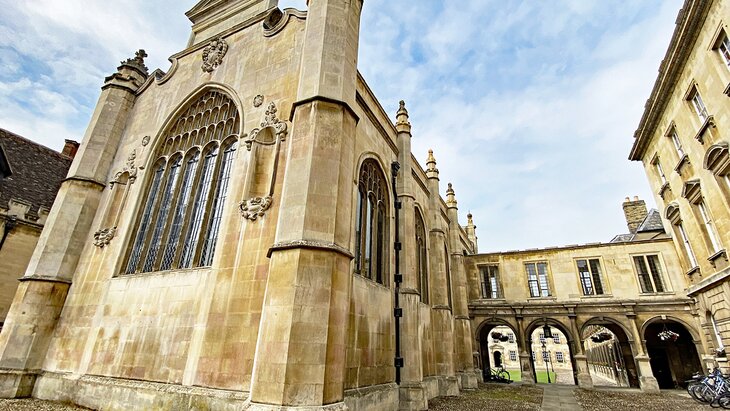
The oldest, and also one of the smallest, of Cambridge's colleges, Peterhouse was founded in 1284. Its historic hall and storeroom on the south side of Old Court are the earliest of the original 13th-century buildings. Among those who studied here were Cardinal Beaufort, chemist Henry Cavendish, and poet Thomas Gray.
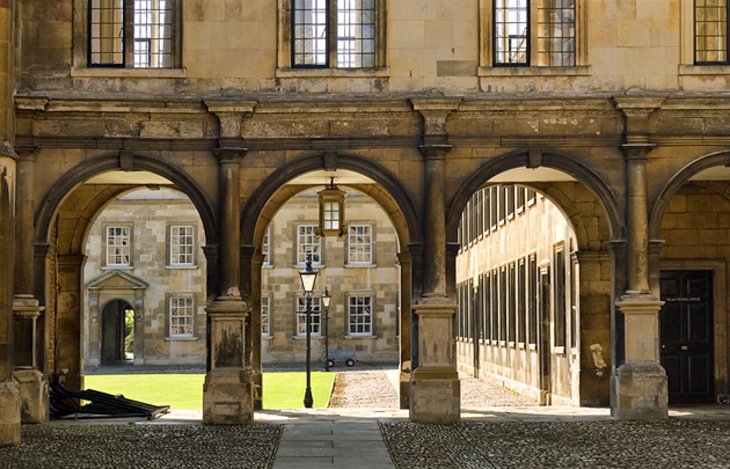
Check out the Peterhouse Chapel, a focal point of the college for more than 700 years. Worth seeing are the stained-glass windows (imported from Munich in the 1850s) and the 17th-century altar window. For a truly memorable experience, enquire about Peterhouse's summer accommodation rentals.
Official site: www.pet.cam.ac.uk/
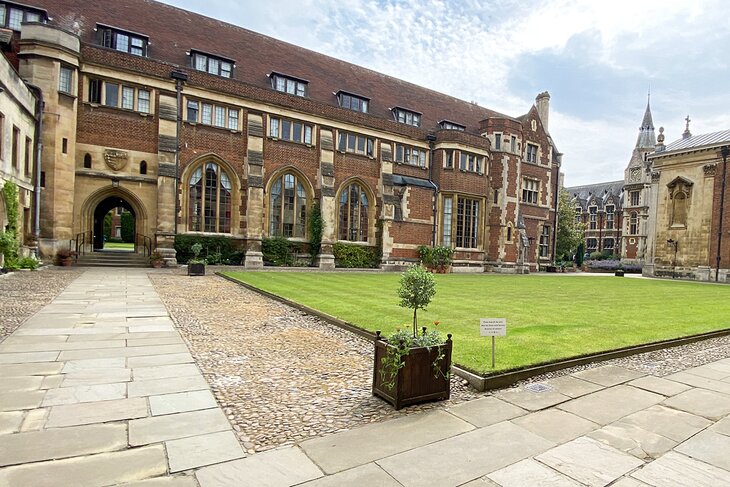
Pembroke College was founded in 1347 by the Countess of Pembroke but has been greatly altered since. The chapel (1665) is famous as architect Christopher Wren's first work and was later extended in 1881.
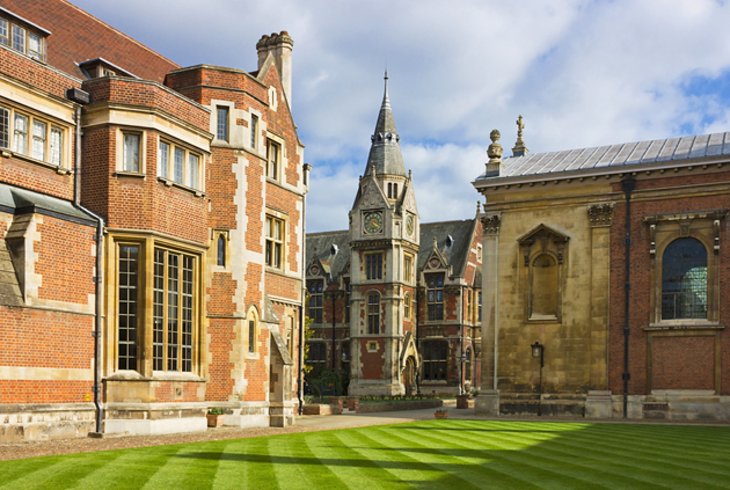
Pembroke has produced many bishops and poets, the most celebrated being Edmund Spenser (1552-99). Reformist bishop Nicholas Ridley, burned at the stake in Oxford, and statesman William Pitt also took their degrees here. A visit usually includes seeing the grounds and the chapel.
Official site: www.pem.cam.ac.uk
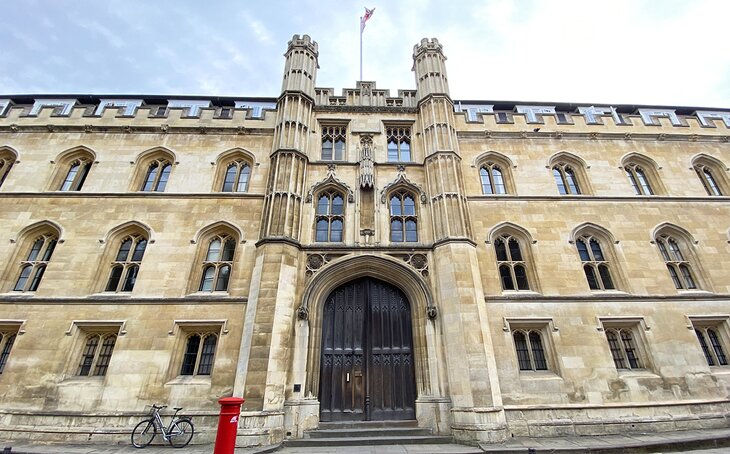
Corpus Christi College was founded in 1352 "by the townspeople for the townspeople." Its oldest section, Old Court , dates back to 1377, although it has since been restored.Notable features include the library, which contains many valuable manuscripts collected by Matthew Parker, Archbishop of Canterbury (1550).
Also worth noting is the adjoining St. Benet's Church , which was the original college chapel and is notable for its late Saxon tower.
Dramatists Christopher Marlowe (1564-93) and John Fletcher (1579-1625)are among the best-known alumni of the college. The college is available for summer accommodations, and has become popular for events such as weddings.
Official site: www.corpus.cam.ac.uk
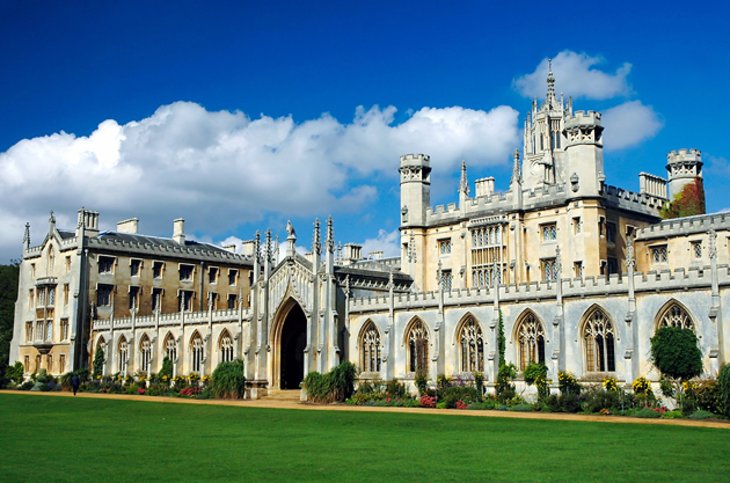
St. John's College was founded in 1511 by Lady Margaret Beaufort, mother of Henry VII. A richly ornamented gateway opens into First Court, a fine example of Tudor architecture. The dining hall of 1519, known simply as " The Hall ," was enlarged with later buildings in 1826 and has an excellent hammer beam roof, beautiful paneling, and some fine portraits.
The Combination Room has a splendid plaster ceiling with festoons of vines. Second Court, built in 1602, is exceptionally attractive with its mellow brickwork, while Third Court includes the Library (1624).
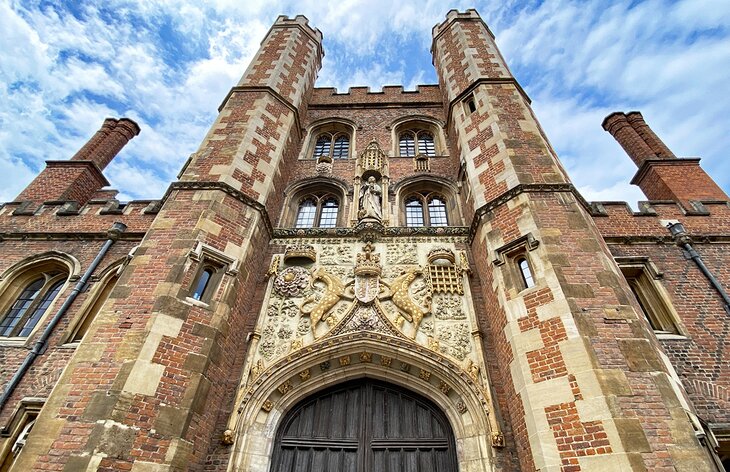
Among the many notable members of St. John's were dramatist Ben Jonson and poet William Wordsworth, who described his college rooms in his famous Prelude . Also visit the college's exquisite chapel, as well as the famous Bridge of Sighs . Built in 1831, this enclosed bridge leads over the Cam into New Court and the College Grounds.
Location: St. John's Street, Cambridge
Official site: www.joh.cam.ac.uk
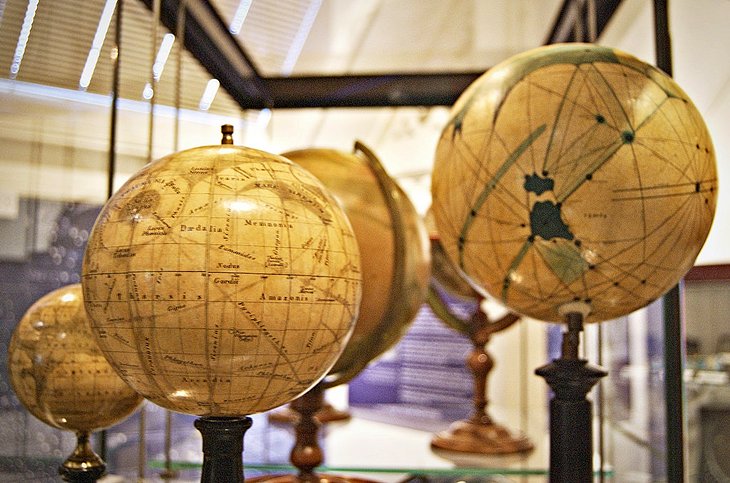
One of the most popular museums in Cambridge, the Museum of Cambridge has displays and exhibits focusing on the everyday lives of the local people from the 18th to the 20th centuries. Located in the old White Horse Inn , the museum features an extensive collection of artifacts, including coinage, costumes, medals, toys, and medicine. It also contains numerous interesting artworks.
Also worth visiting, the Cambridge Museum of Technology focuses on the county's industrial past. Housed in a Victorian pump house, the museum displays a working steam winch once used to haul ashes along a narrow gauge railway, plus a variety of other engines and a collection of antique printing equipment.
The Whipple Museum of the History of Science is also worthy of a visit for its fascinating collections of old scientific artifacts, including instruments and prints dating back as far as the 17th century.
Official site: www.museumofcambridge.org.uk
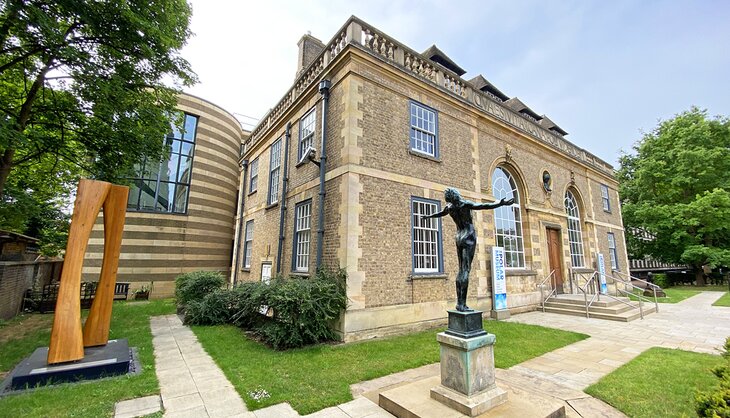
Located in the historic Scott Polar Research Institute ( SPRI ) building on Lensfield Road, the Polar Museum offers a fascinating glimpse into the exploration of the Earth's polar regions. In addition to its collections of photos, documents, and artifacts relating to epic polar expeditions by the likes of Captain Robert Scott, you'll also find maps and other display materials that provide interesting facts about the North and South Poles.
One of the top free things to do in Cambridge , the Polar Museum is also home to an impressive collection of art relating to the exploration of the polar regions.
Address: Lensfield Road, Cambridge
Official site: www.spri.cam.ac.uk/museum/
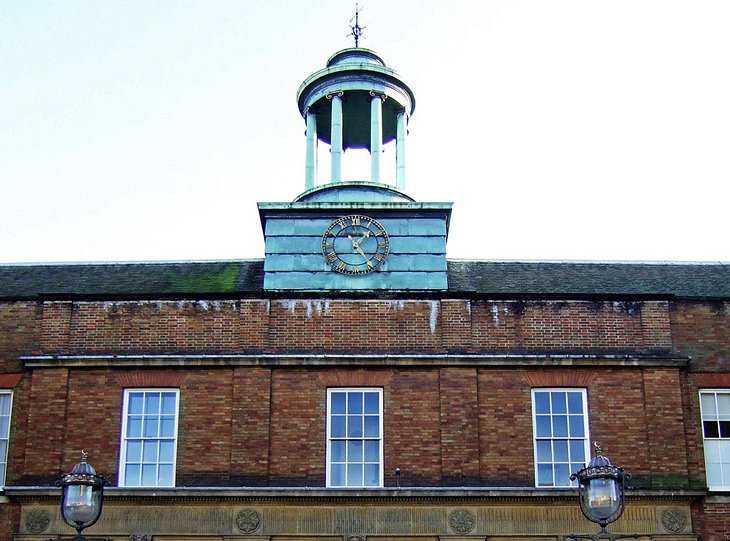
Just 13 miles east of Cambridge, the market town of Newmarket has been a center of English horse racing since 1174. Horse fans will enjoy visiting the National Horse Racing Museum on the picturesque High Street. Exhibits relate to the history of the "sport of kings," still one of the most popular sports in Britain.
The collection includes paintings of famous horses and jockeys, old saddles, tack, and trophies. There are several stables actually in the town, not to mention the famous racecourse and training "gallops" close by.
Address: 99 High Street, Newmarket, Cambridgeshire
Official site: www.palacehousenewmarket.co.uk
With the university's 31 colleges filling the entire center of Cambridge, there isn't much space left for hotels. But you'll find a few amid its historic buildings, with more just outside the ring of streets that encircles the center. Here are some highly-rated hotels in Cambridge:
Luxury Hotels :
- Overlooking a broad park near the River Cam and the colleges, with plenty of restaurants within easy walking distance, the large rooms at The Gonville Hotel are well located for exploring Cambridge.
- Walk along the Cam and to the historic sites from The Varsity Hotel & Spa , a boutique lodging with a rooftop terrace, near Trinity and Magdalene colleges.
- The name Hilton Cambridge City Centre says it all, right in the center surrounded by historic colleges, restaurants, and shops. The modern hotel offers free Wi-Fi.
Mid-Range Hotels:
- Regent Hotel rooms overlook a park near the colleges and River Cam or busy Regent Street's shops and restaurants.
- The neighboring boutique-style Lensfield is also about halfway between the train station and the city center.
Budget Hotels:
- You can walk through the park to city center colleges from Travelodge Cambridge Newmarket Road , or there's a bus stop right in front; underground parking is free.
- There's also a bus stop at Ashley Hotel , or you can walk across the river and over Midsummer Common to the center in about 20 minutes. Rooms here have safes, coffee and tea-making, and free Wi-Fi.
- For lodgings with history, choose a student room with a full English breakfast and Wi-Fi included in Christ's College Cambridge , founded by the mother of Henry VII in 1505 and the college of Charles Darwin.
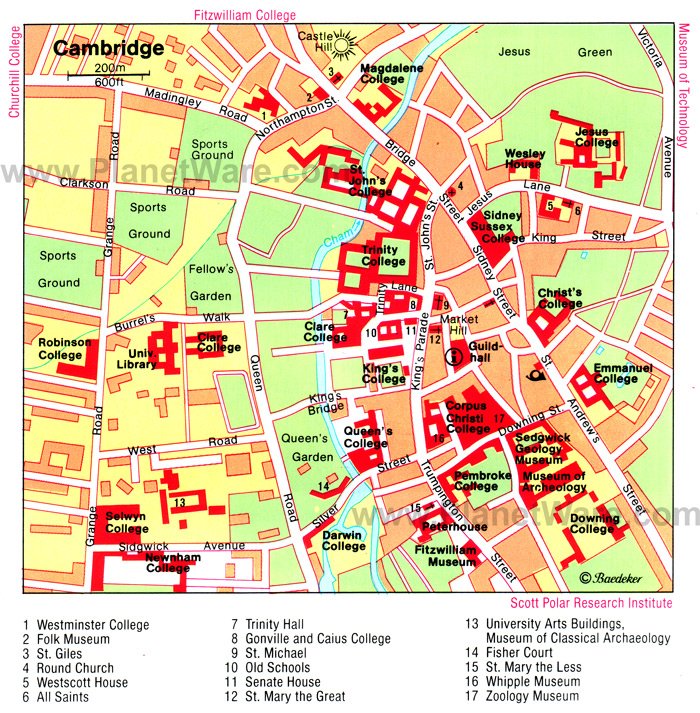
More on England
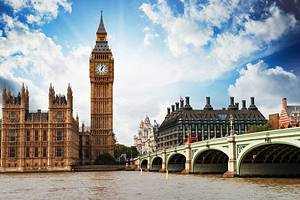

The 12 Best Things to do in Cambridge, UK
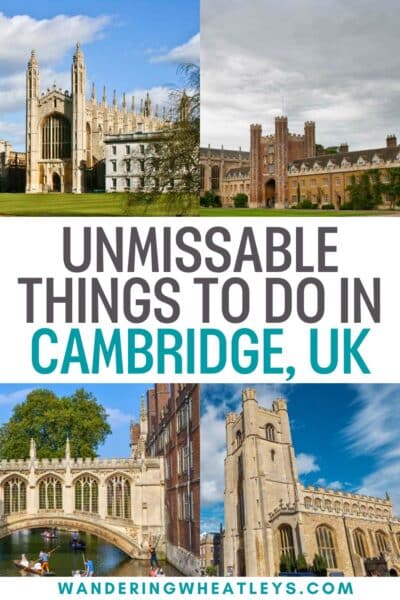
Home to one of the world’s oldest and most prestigious universities, Cambridge is one of the most interesting cities to visit in England . Take a punt along the River Cam, and you’ll be amazed by the sight of Cambridge’s splendid university colleges. Medieval chapels stand next to grand Victorian courtyards while students and professors run from lectures to libraries.
The best sights in Cambridge include some of England’s best museums, including the Fitzwilliam Museum, the University Museum of Zoology, and the quirky Centre for Computing History. Take a walking tour of the city, explore countryside manors, and drink in the same pub where Crick and Watson announced they’d discovered DNA.
With so many things to see and do, you might not know where to begin. So we’ve compiled our list of the absolute best things to do in Cambridge, England, for you. Stick to these fun and unique Cambridge bucket list recommendations, and there’s no doubt you’ll have an amazing time exploring this gorgeous English city!
Disclaimer: This post may contain affiliate links. If you make a purchase or booking through one of our links we may earn a small commission (don’t worry, it’s at no extra cost to you).
The 12 Best Things to do in Cambridge, England
1. take a punt along the river cam.
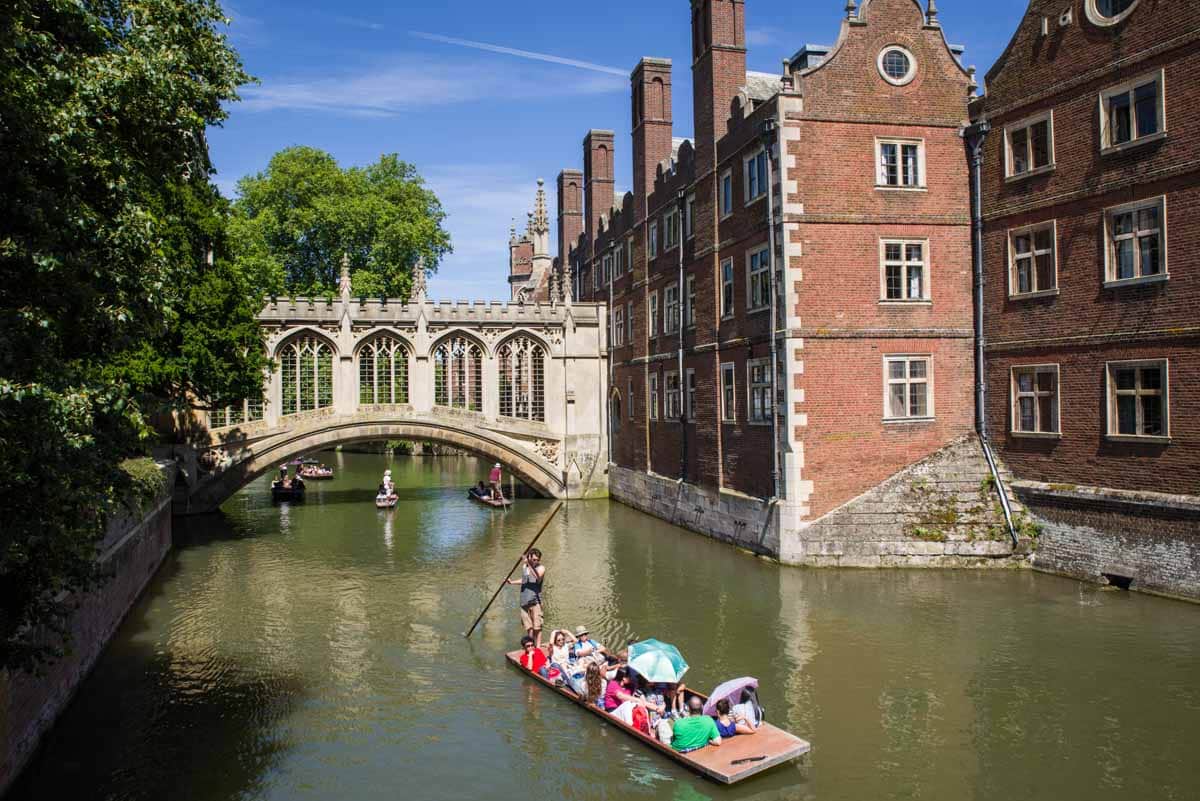
No matter the weather, an armada of flat-bottomed barges can be seen navigating the River Cam throughout the year. These are the famous “punts,” small wooden boats that have been used as pleasure craft since the Victorian era.
In summer, the River Cam is quite literally packed with punters as students, locals, and visitors alike take to the waters. If you’re looking for quintessential Cambridge activities, you can rent your own punt from one of the launches, but you’ll need to be ready to steer using the long pole that propels the punt along the river.
Alternatively, hire a chauffeur for an hour or two and be guided along Cambridge’s waterways by a local guide (they’re often students at the university). Tours take you to the “Backs” – behind the city’s famous colleges – where you’ll get the best view of iconic Cambridge attractions like King’s College, Trinity College, and the Bridge of Sighs.
2. Join a Walking Tour of Cambridge
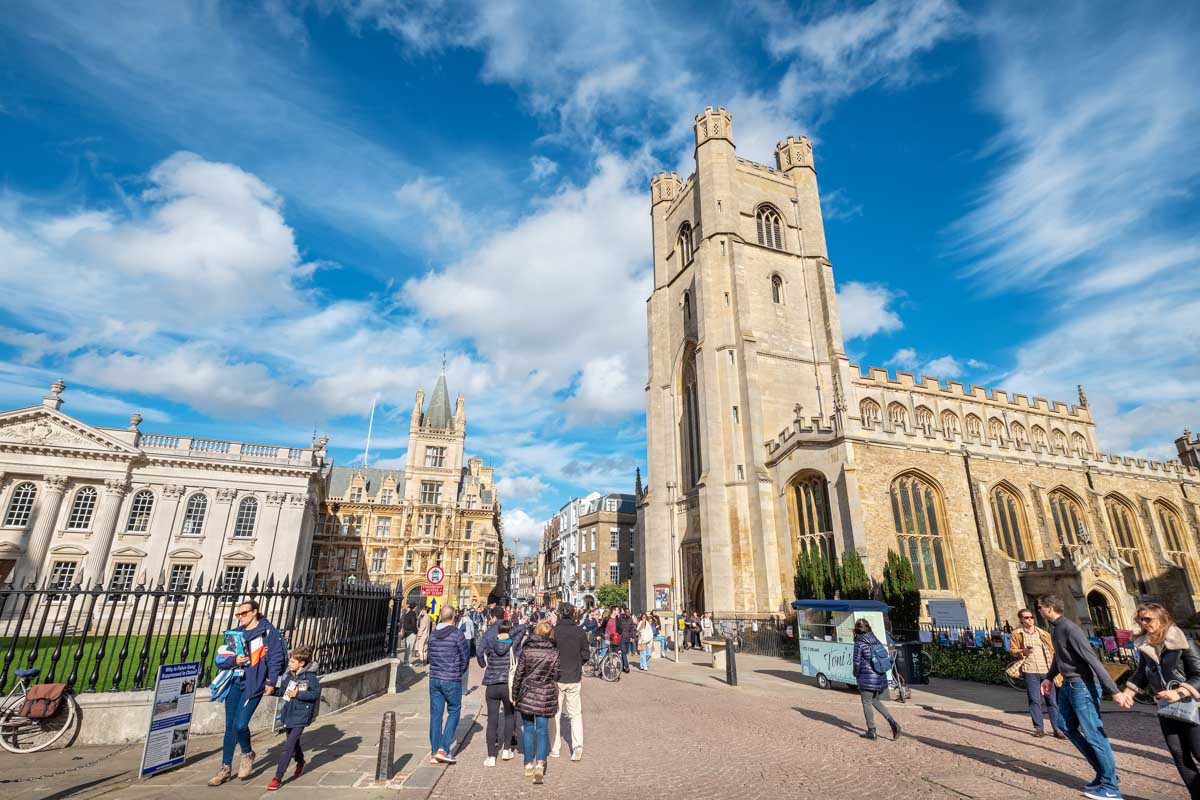
If you’d rather stay on dry land, then a walking tour is one of the best things to do in Cambridge. This compact city is the perfect place for a stroll, so why not take a walk with a local guide showing you the way?
Several companies offer walking tours throughout the year, with several departures a day catering to the large number of tourists that visit the city. Visit Cambridge , the official tourism board of the city, offers walking tours, for example.
Itineraries vary, but the best tours take you to famous Cambridge sightseeing attractions like Senate House, the Corpus Clock, the Bridge of Sighs, Cavendish Laboratory, and many more (the list goes on!).
3. Pretend You’re a Student at King’s College
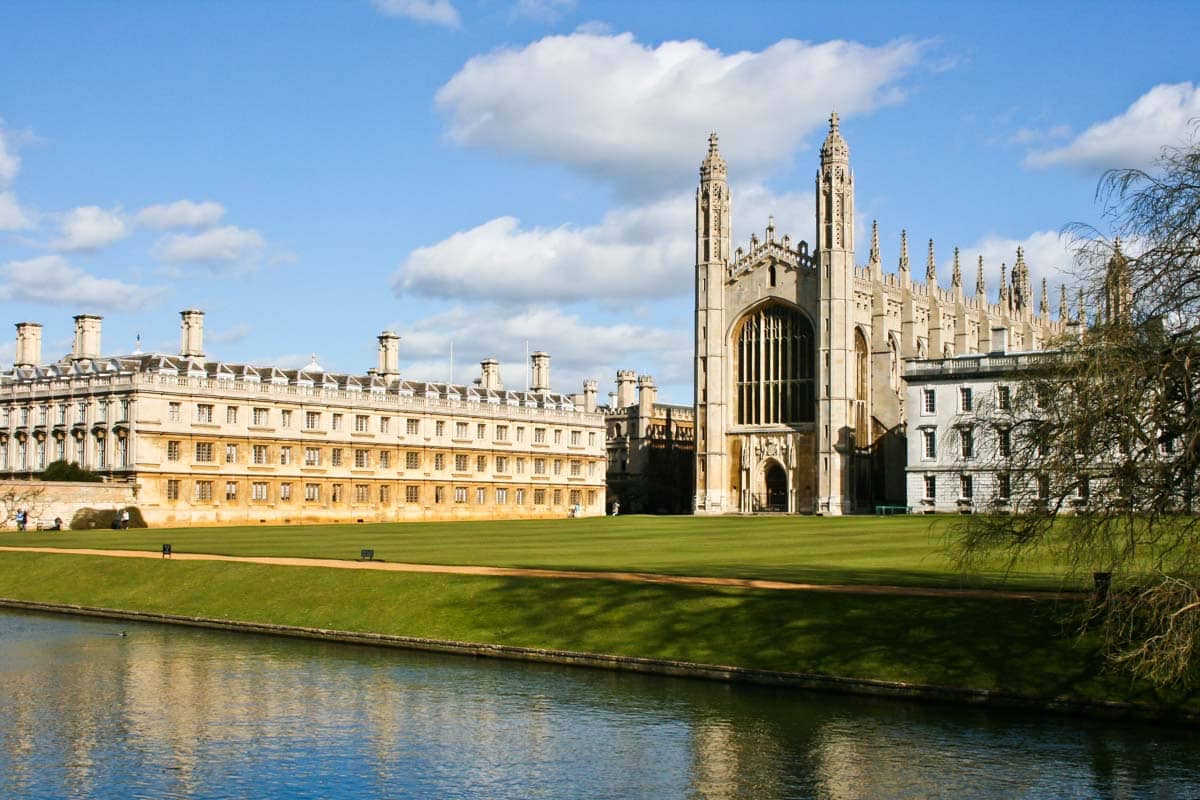
One of the most famous things to see in Cambridge is King’s College , where students have been educated since the 15th century. Founded by King Henry VI in 1441, King’s College is best known for its glorious Gothic chapel.
Over five centuries after its founding, King’s College is very much still a place of learning. Although it’s an integral part of the University of Cambridge, visitors can still tour through the grounds and chapel at certain times of the day. Make sure to book your ticket in advance.
4. See Newton’s Apple Tree at Trinity College
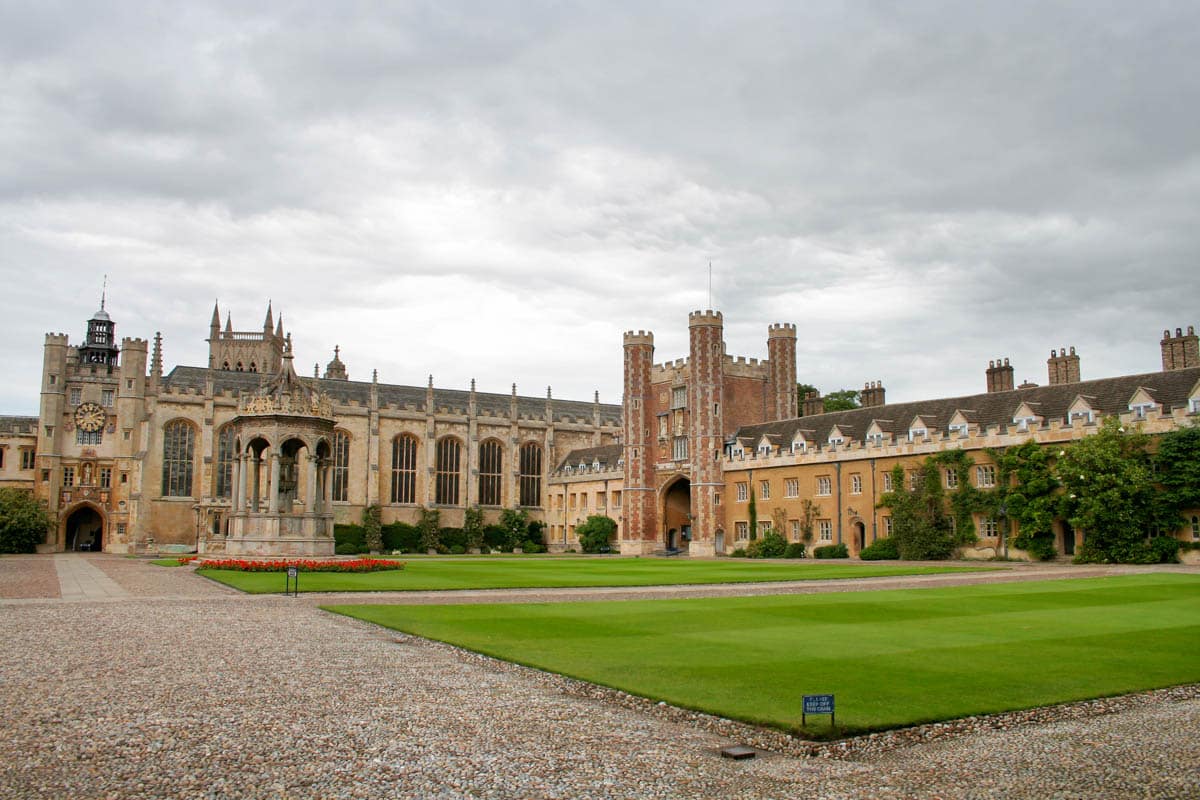
Established in 1546 by the infamous King Henry VIII, Trinity College is one of Cambridge’s most iconic collegiate institutions. Tourists can visit the Great Court and the college’s gorgeous chapel, although much of Trinity College is off-bounds unless you’re a student.
No matter, though, because the most famous sight in the college is the “Flower of Kent” apple tree, which grows outside the entrance. It’s better known as Newton’s Apple Tree. Legend has it the tree was grown from a cutting of the same tree that dropped an apple and inspired the theory of gravity.
5. Visit the Famous Clock at Corpus Christi College
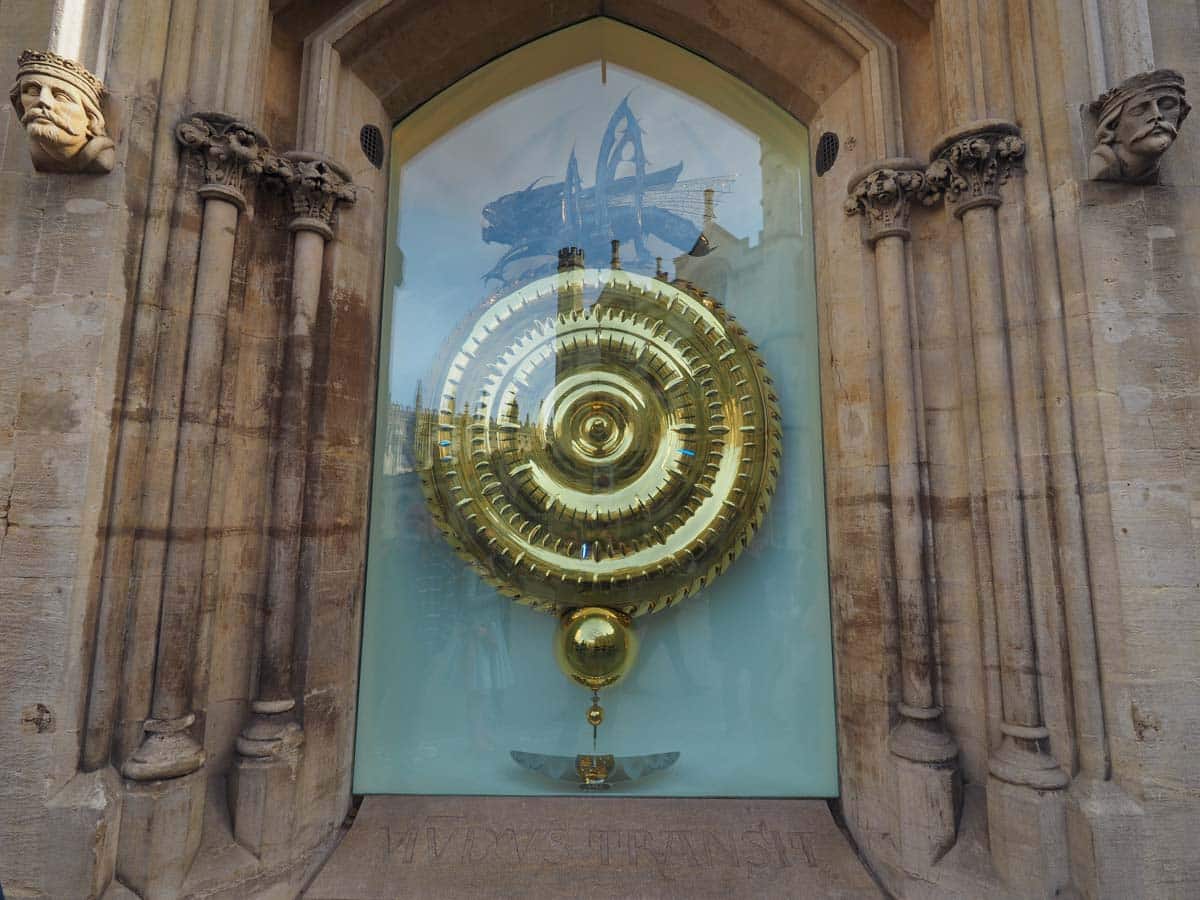
Dating back to 1352, one of the oldest university colleges in Cambridge is Corpus Christi College . The Old Court is home to some of the university’s oldest buildings, too, while the New Court is a masterwork of extravagant Victorian architecture.
One of the top Cambridge attractions, this college is famous for two notable things (excluding a long list of famous alumni, which includes the playwright Christopher Marlowe). Firstly, this remains the only University of Cambridge college to be founded by local townsfolk. Secondly, it’s home to the marvelous Corpus Clock, which is partly a timepiece and partly a work of public art.
6. Have a Drink in The Eagle
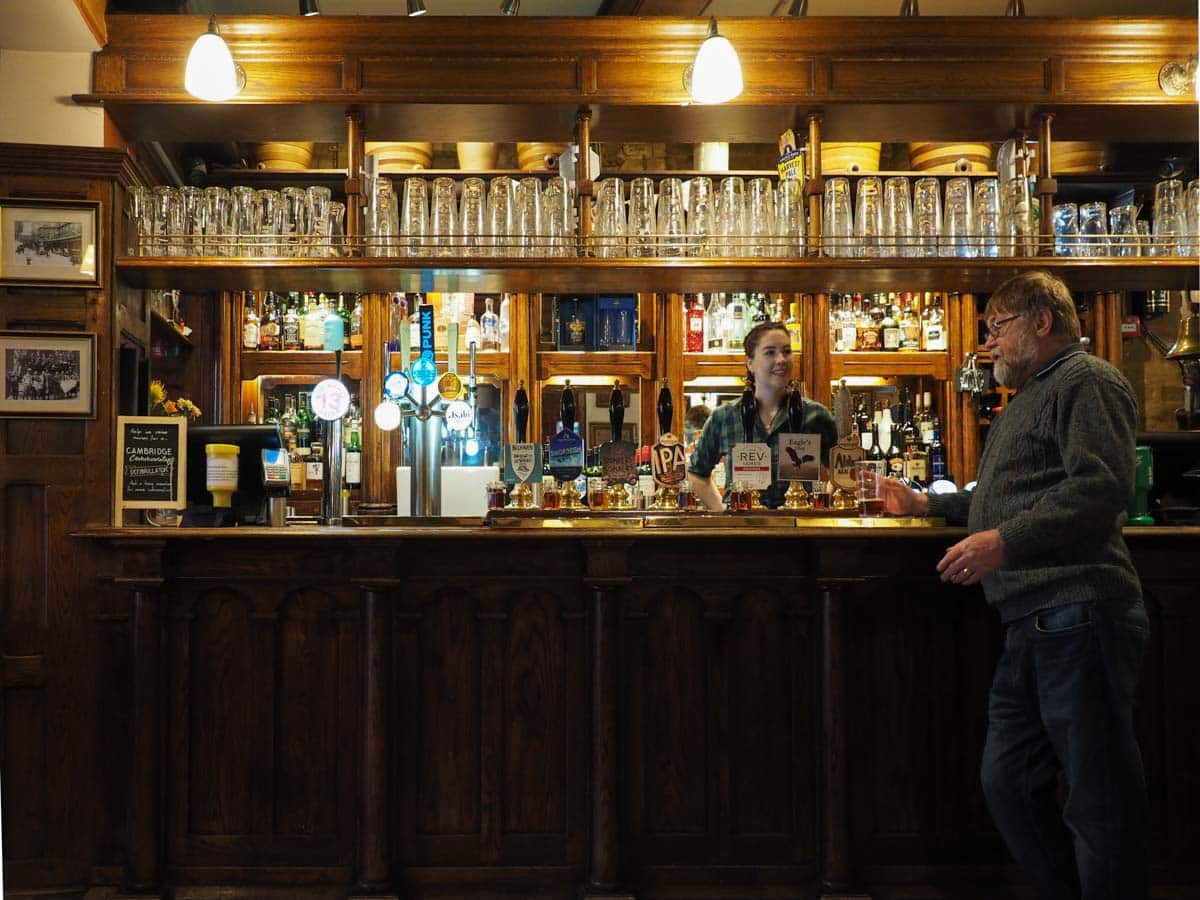
After all that Cambridge sightseeing, you’re going to want a drink, and there’s nowhere better for a pint of beer or a glass of wine (soft drinks are also available) than The Eagle .
Located steps away from Corpus Christi College, this historic pub has long been the favored drinking haunt of scientists and scholars. Indeed, with a history dating back to the 17th century, The Eagle is the second-oldest pub in Cambridge, and it’s here where Crick and Watson announced in 1953 that they had just discovered DNA!
7. Delve into History at the Fitzwilliam Museum
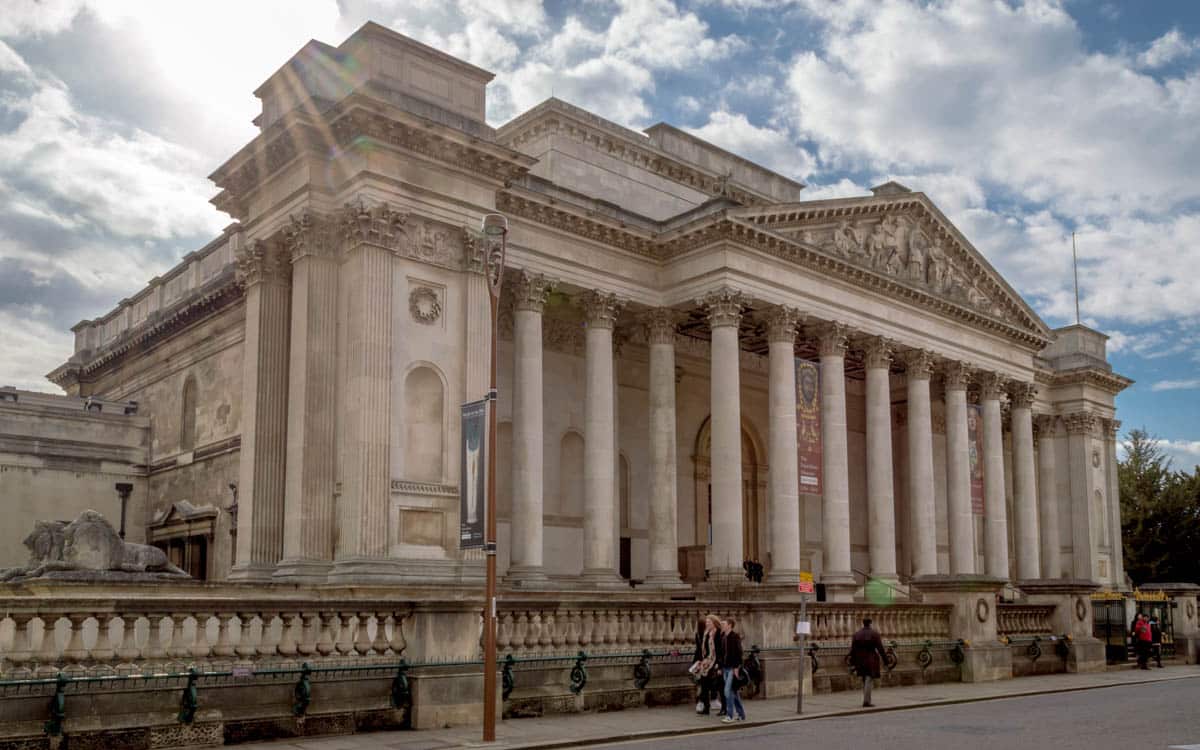
For history lovers, a visit to the Fitzwilliam Museum is one of the top things to do in Cambridge. This excellent museum is named for Richard Fitzwilliam, a British viscount who died in 1816. In his will, Fitzwilliam left behind £100,000 and a vast collection of antiquities that allowed the museum to be founded.
Over the next two centuries, the collection has grown to hold some 500,000 objects from around the world, and it’s now one of the most popular sights in Cambridge. Step through the grand Palladian Entrance Hall, and you’ll be immersed in the ancient world, as you’re surrounded by Egyptian, Greek, and Roman artifacts.
There are five major galleries to explore, with exhibits largely divided between Antiquities, Arts, Coins, and Literature.
8. Get Nerdy at The Centre for Computing History
If you love computers, gaming, and technology, then a visit to The Centre for Computing History is one of the most fun things to do in Cambridge. Rather appropriately located in one of the most scientifically minded cities in the world, this unique museum has amassed some 38,000 historic computing objects since it opened in 2013.
The goal of the museum is to tell the story of the Information Age, starting with the earliest computing devices and continuing into the present. On display, you’ll find everything from old Macbooks and Nokia phones to ancient Gameboys and game consoles.
Given how quickly technology is advancing, the museum’s exhibits and exhibitions change regularly, making this a nostalgic place to return to.
9. Wander the Cambridge University Botanic Garden
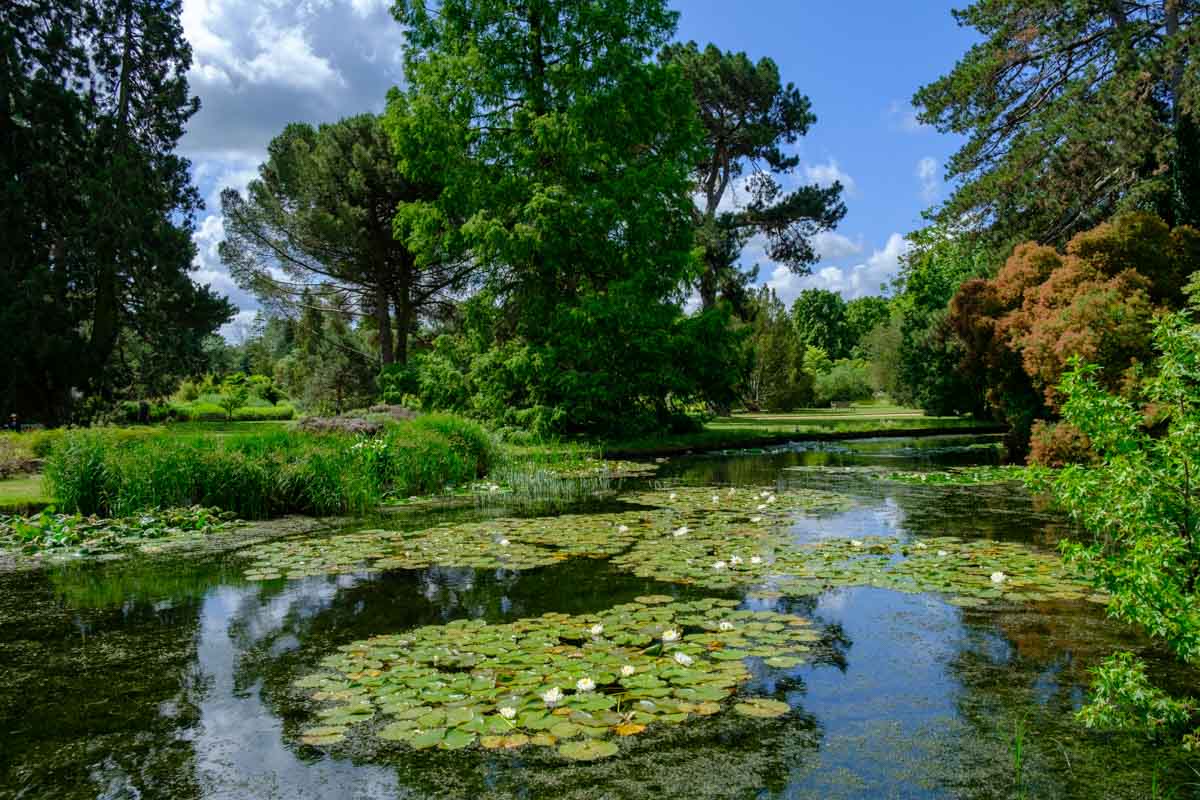
Home to around 8,000 different species of flora collected from all over the world, the Cambridge University Botanic Garden has offered a serene escape from city life since its founding in 1762.
The original botanic gardens were established to provide plants for botany students at the university, but the site has greatly expanded to include greenhouses, glasshouses, and 16 hectares of plants and flowers.
10. Explore Natural History at the University Museum of Zoology
For the budding naturalists out there, a visit to the University Museum of Zoology is one of the coolest things to do in Cambridge. With free entry, there’s no excuse not to visit this awesome Cambridge attraction, and with over a million objects in the collection, the displays are always being changed and updated.
You’ll see the now-extinct dodo, the enormous skeleton of a finback whale, and countless other species of flora and fauna, many of which were collected and sent here by famous Victorian naturalists like Charles Darwin and Alfred Russel Wallace.
11. Live the Life of an English Gent at Anglesey Abbey
Just outside Cambridge, you’ll find Anglesey Abbey , a beautiful countryside manor that’s a great day out from the city.
Anglesey Abbey dates back to at least the 12th century AD, although there may have been even older priories here long before this. When Henry VIII dissolved the monasteries in the 16th century, the monks were kicked out and a wealthy family moved in, converting the buildings into a grand Jacobean-style house.
The Grade-I listed building is now managed by the National Trust, which has converted the stately rooms into a wonderful time capsule. The extensive grounds are gorgeous, and you’ll love living the life of a country gent as you explore this historic Cambridge attraction.
12. Explore the Cam Towpath Between Cambridge and Ely
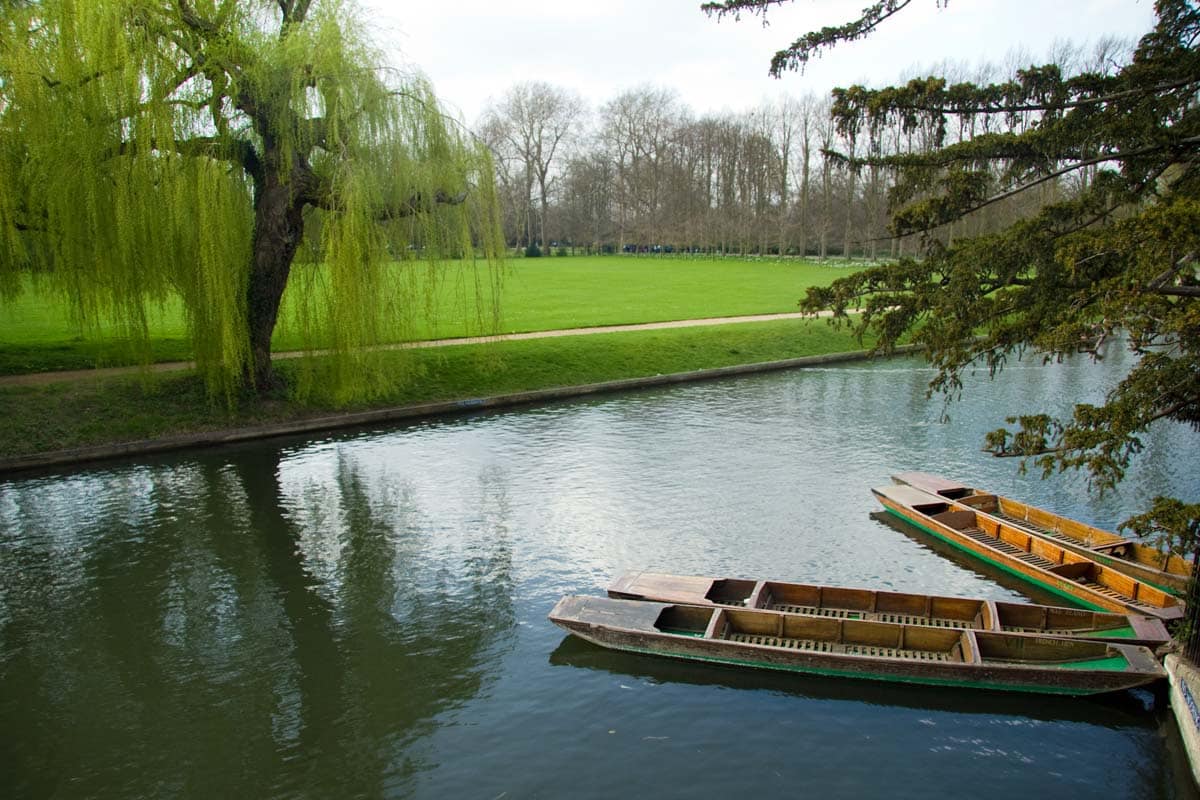
The River Cam flows between Cambridge and Ely, and along its course, there’s an easy-to-navigate towpath that connects these two small Cambridge cities. The entire route is flat and offers wonderful views of the River Cam and the surrounding countryside, but at 18 miles, it’s quite a long walk.
If you’re fit and adventurous, it’s possible to walk the whole route in a day and catch public transport back to Cambridge. Alternatively, you can just walk a few miles along the towpath from Cambridge, stop in a riverside pub for lunch, and enjoy a leisurely walk back.
There you have it! The 12 best things to do in Cambridge, England. What’s your favorite thing to do in Cambridge?
Share this on pinterest.
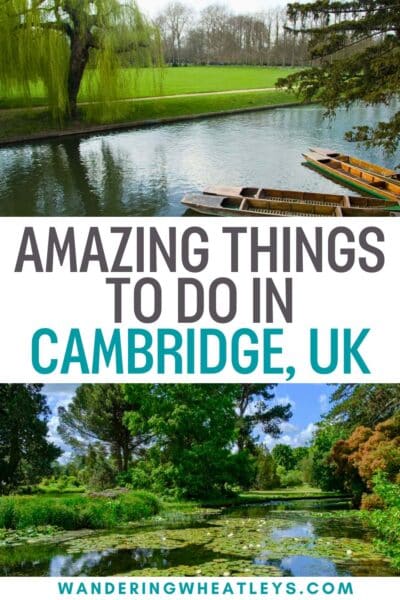
About the Author:

Richard is an award-winning travel writer based in Southwest England who’s addicted to traveling off the beaten track. He’s traveled to 75 countries and counting in search of intriguing stories, unusual destinations, and cultural curiosities. Richard loves traveling the long way round over land and sea, and you’ll find him visiting quirky micronations and breakaway territories as often as he’s found lounging on a beach (which is a lot). When he’s not writing for BBC Travel, National Geographic, or Lonely Planet, you can find Richard writing for the Wandering Wheatleys or updating his off-beat travel blog, Travel Tramp.
View all posts
Related Posts
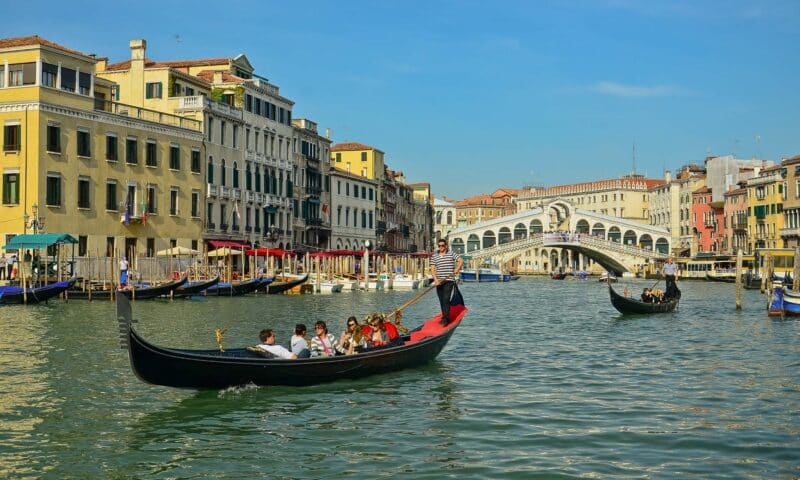
The 10 Best Things to Do in Venice in April

The Top 10 Places to Visit in Cyprus
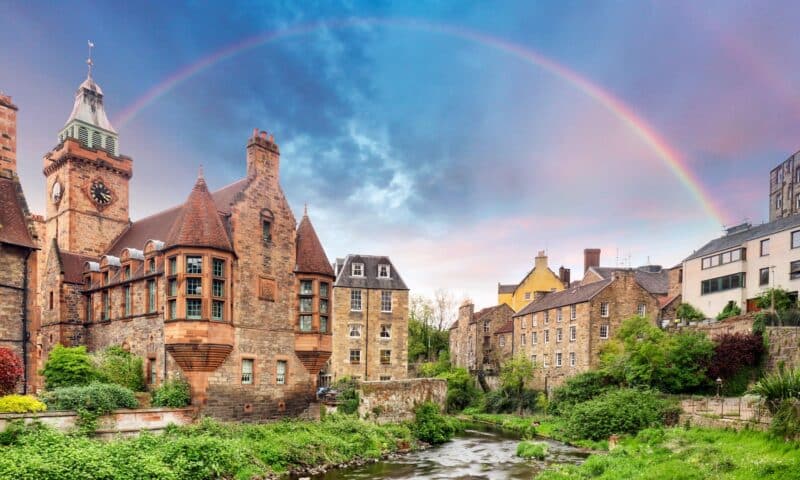
The Best Time to Visit Edinburgh – An Insider’s Guide
Leave a comment cancel reply.
Your email address will not be published. Required fields are marked *

The Best 1 Day Cambridge Itinerary: Things To Do (2024)
Planning a 1 day Cambridge itinerary in 2024? Cambridge is an incredibly historic city with interesting museums, picturesque streets, charming boat rides and plenty of great restaurants! Spending one day in Cambridge is the perfect day trip from London and an easy getaway to a cosy walkable city. Let’s plan your Cambridge 1 day itinerary!
Cambridge is located just north of London in the United Kingdom and is well-known for it’s reputable University of Cambridge . Browsing around the buildings that date back to 1209 is one of the best things to do in Cambridge on a day trip or more.
The streets of the city are incredibly beautiful with both mainstream and local shops spread out throughout the wandering lanes. The iconic Kings College and River Cam are the most popular spots in the city and definitely worth a visit during any Cambridge itinerary .
Although the city is small, there’s honestly too much to see with 1 day in Cambridge but it’s the perfect day trip from London or nearby cities. One day is also enough time to experience the main highlights!
In this guide, we’ll show you how to plan your 1 day Cambridge itinerary with the best things to do, how to get around and a few food recommendations . There’s also some activities that cost money and you can also book in advance.
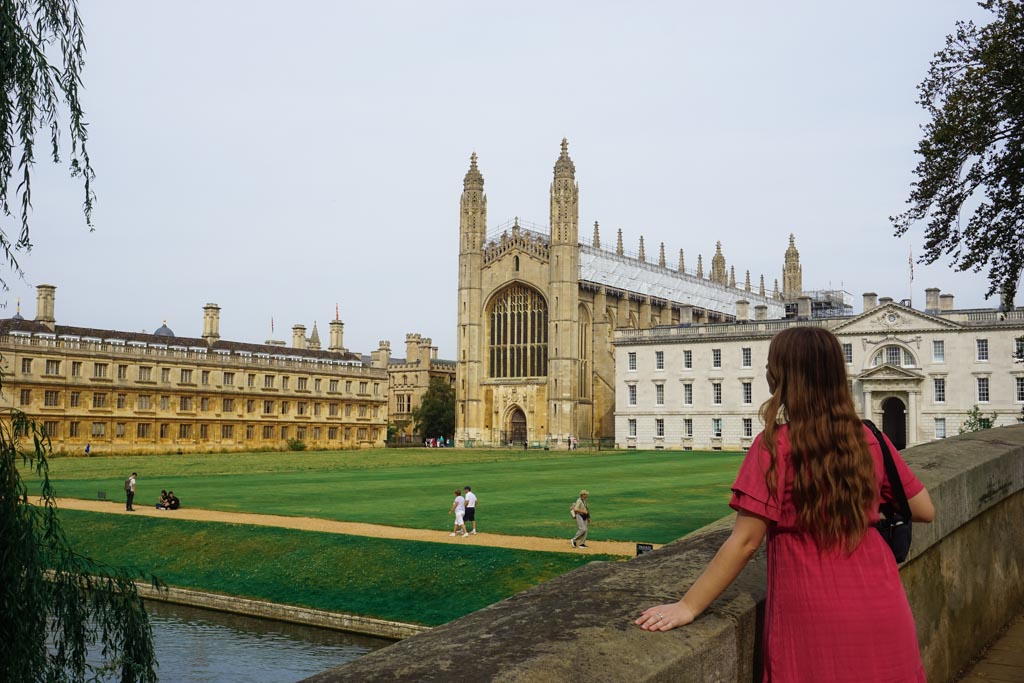
This post may contain affiliate links. We will receive a small commission if you make a purchase using these links, at no additional cost to you .
Table of Contents (Skip to a section!)
Quick Tips for a 1 Day Cambridge Itinerary
- Currency – Pound Sterling GBP (compare your own currency here )
- Cuisine – British with a variety of cuisines (Chips, pies, Indian, Chinese & pizza)
- Apps – GoogleMaps, Uber, Booking.com & Hostelworld
- Where to stay – YHA Cambridge – Book your stay here !
- Power Voltage – Plug G, 240V
Activities to book in advance: Cambridge Punting Tour & Cambridge University Tour !
Best time to visit Cambridge
Cambridge is a year-round destination that experiences all four seasons. However, we recommend visiting Cambridge between April and October when the days are longer and there’s more chance of warmer weather.
July and August are the busiest months to visit Cambridge due to the summer holidays, although it’s usually the best weather. Christmas is also a great time to visit for festive decorations around the city! We visited in September and the UK had a mini 30°C heatwave!
Also check for bank holiday weekends , as these days can get very busy with most of the country off of work.
Visiting more of the UK ? We have itineraries to London , York , Bristol , Edinburgh , Brighton , the Scottish Highlands and hiking in Snowdonia !
How to get to Cambridge
Cambridge is located in Eastern England very close to the capital city, London! There are excellent transport links into the city and we highly recommend getting the train from London. Find more tips for travelling in London in our travel guide.
- By train: Trains to Cambridge take you to Cambridge train station which is only a 20-minute walk to the city centre.
- By bus: Check out Megabus, National Express and FlixBus for journeys around the UK. Although they’re not as fast as trains, they’re usually a lot cheaper!
- By vehicle: Cambridge has free parking overnight, but you’ll likely have to pay for parking unless you park somewhere residential. Park at Queen Anne Terrace Car Park or use the Park & Ride .
- By flight: London Stansted is the best international airport to arrive at for a trip to Cambridge.
The best way to get to Cambridge from London is by train ! Head to London King’s Cross station to get a direct train to Cambridge in less than 1 hour. There are also other trains from around the city, but it’s best to catch the underground or bus to King’s Cross. We have a travel guide on how to spend 4 incredible days in London !
How to get better prices for trains in the UK? Book your train tickets in advance ! Advance singles save so much money compared to a normal off-peak return. Also if you’re from the UK, check if a Railcard is worth it and you’ll save 1/3 of your fare!
1 Day Cambridge Itinerary: Best Things To Do
Now we’re going to share the best things to do in Cambridge during a one day itinerary. Feel free to mix these activities around depending on the weather.
We’re writing this Cambridge itinerary starting from the train station which is only 20-25 minutes from the city centre.
See the Corpus Clock
As you walk into the city from the train station, you’ll pass by a variety of cafes, restaurants and shops before seeing the most unique clock in Cambridge.
The Corpus Clock is a large golden clock with a grasshopper sitting on top . There are no hands or digital numbers, but the time is shown with swirling LED lights. The grasshopper opens its mouth every 30 seconds and it’s also known as the time eater.
The Cambridge physicist Stephen Hawking revealed the fascinating clock to the public in 2008 and now it’s a popular place to take a photo in Cambridge!
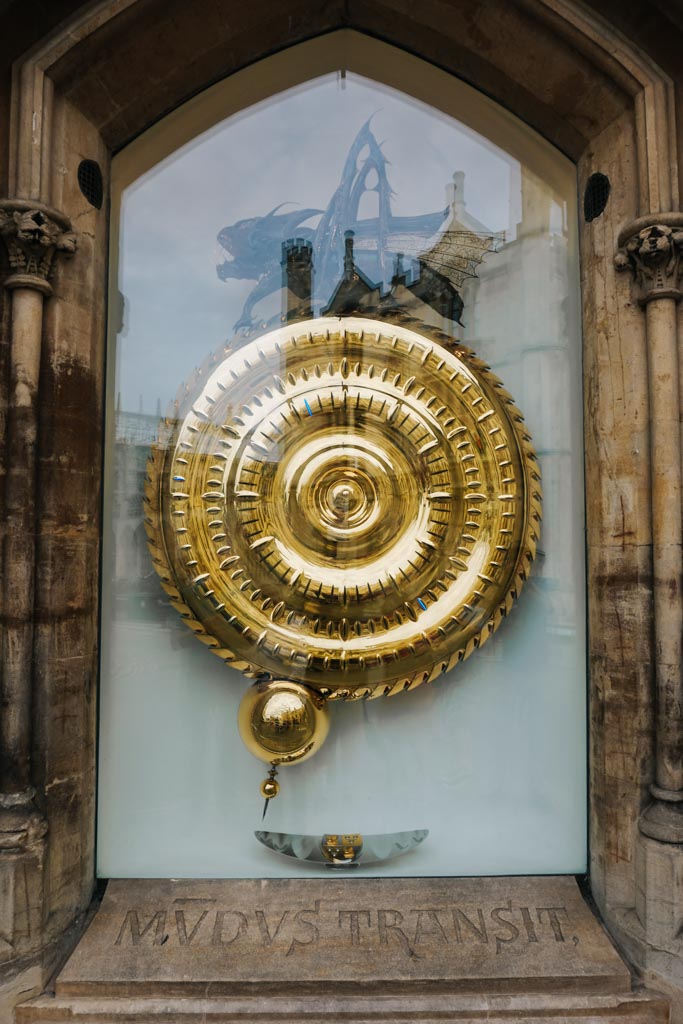
Visit the Eagle
Right around the corner from the Corpus Clock is the famous Eagle Pub. We noticed a few Guided Historic Walking Tours around this area of Cambridge, as there’s a lot of history to learn!
As well as being one of the oldest pubs in Cambridge , The Eagle Pub was the place where Francis Crick and James Watson announced their discovery of DNA (double helix structure DNA).
They were both researchers and scientists at Cambridge University . It’s one of the best scientific discoveries of the 20th century and they won a Nobel Prize in 1962.
Honestly, if you didn’t research what to do on your 1 day Cambridge itinerary, you would easily walk passed this Greene King pub . Although there is a sign to celebrate and remember the day the scientists discovered the ‘ Secret of Life’ .
Go on a Punting Tour
As you’re getting started with learning about Cambridge, it’s time to explore the beautiful River Cam and take a boat trip!
Once you head to the waterfront, you’ll notice lots of companies offering punting tours . You can book online in advance to guarantee a spot or find a boat when you arrive.
A punting tour is one of the best ways to see the famous colleges of Cambridge and your guide will tell you interesting facts as you float past. We recommend joining a shared Punting Tour instead of hiring your own, as it looks so hard! Our guide told us a lot of people fall in.
The boats used for punting are long and wooden with flat bottoms! The punter uses a pole to push the boat along in the river and it’s a work of art! Cambridge is the most popular place in the UK to go punting !
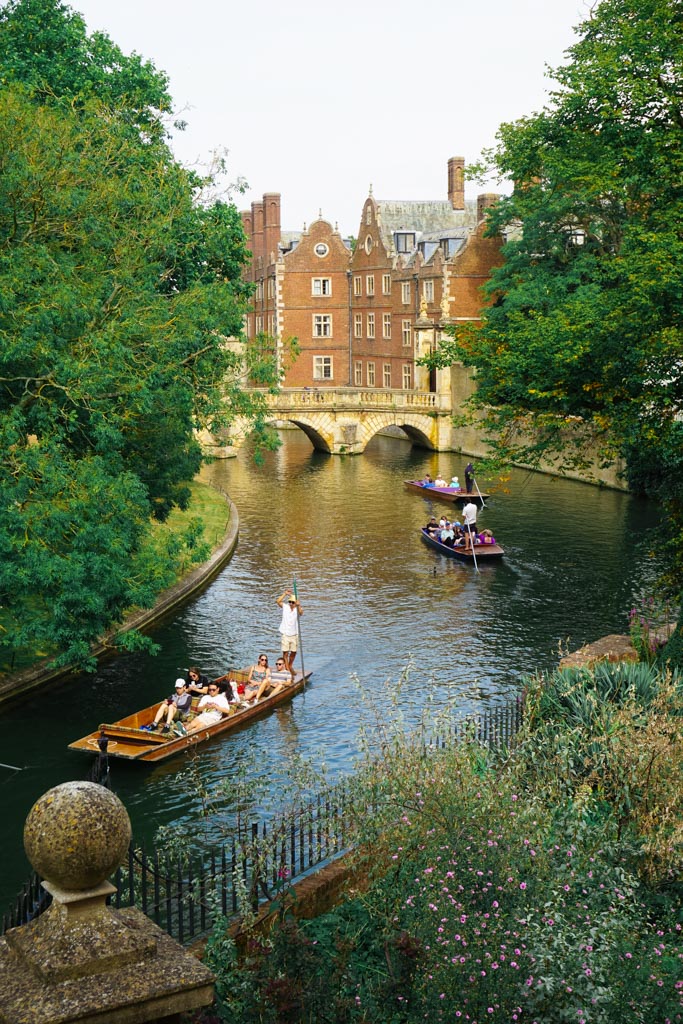
Visit Wren Library
Next on your Cambridge 1 day itinerary, visit the Wren Library (part of Trinity College). The Wren Library is notable for its extremely invaluable books such as Isaac Newton’s text and the first manuscript of Winnie the Pooh . It’s also home to the oldest manuscript of Shakespeare’s plays.
The library has very short opening hours usually around lunch from 12 pm to 2 pm. It has been closed for 3 years from 2020 until late 2023, but it’s finally open to visitors as of September 2023.
As a big fan of Winnie the Pooh, it was incredible to see A.A. Milnes’s early work from 1926 and it’s actually the only piece that you’re not allowed to photograph. Milne was also a student at Trinity College (Cambridge University).
The library is also free to enter ! A lot of monuments and buildings cost money to enter in Cambridge.

Grab lunch in Cambridge
There are many great places to eat in Cambridge! We recommend grabbing a bite from the local market in the centre of the city or taking a short walk to Urban Butterfly or The Tipsy Vegan .
At Cambridge Market Square , you can find Africfood , noodles, falafel and juices! This 1 day Cambridge itinerary is pretty packed, so you’ll want to take some time to rest before starting your afternoon!
Climb to Great St Mary’s Tower
Right next to the market is an Anglican church named Great St Mary’s . Visiting the church is a beautiful experience, but the main reason to visit is to see scenic views of Cambridge from the University Church Tower .
There are 123 steps leading to the top with a viewing platform. The church is free to enter and it’s £6 to climb the tower. Check the website for updates.
Explore Cambridge University
Cambridge University is one of the best and oldest universities in the world , ranking amongst well-known schools such as Oxford, Harvard and Stanford. It was established back in 1209 after Oxford University.
There isn’t just one building at Cambridge University , in fact, they’re spread out all over the city. The historic beauty of the buildings and colleges is one of the main reasons visitors come to Cambridge on a day trip from London.

What are the colleges at Cambridge University?
Cambridge is a ‘ collegiate university ‘ made up of 31 colleges with different subjects, facilities and funding. When applying to the university, a student chooses a college to be accepted and that’s the college they will study with, live and also eat!
Some colleges also have different admittance rules such as Wolfson, Hughes Hall and St.Edmund’s only accept students over the age of 21. Newnham and Murray Edwards only accept female students, and Kings College used to only admit boys from Eton College until 1865.
The best way to learn more about the colleges and history of the university is on a Cambridge University Walking Tour ! The most popular colleges to visit are Kings College, Trinity College, Queens College and Pembroke College .
Visit Kings College if you only have 1 day in Cambridge
After your morning punting tour , you will have seen King’s College Chapel and the grounds surrounding it. The chapel is one of the oldest surviving buildings at the university and it has an incredibly unique ceiling.
The fan vault ceiling in the chapel took 3 years to create and it’s the reason why the chapel is so popular along with its well-known choir. Tickets are around £13 to enter.
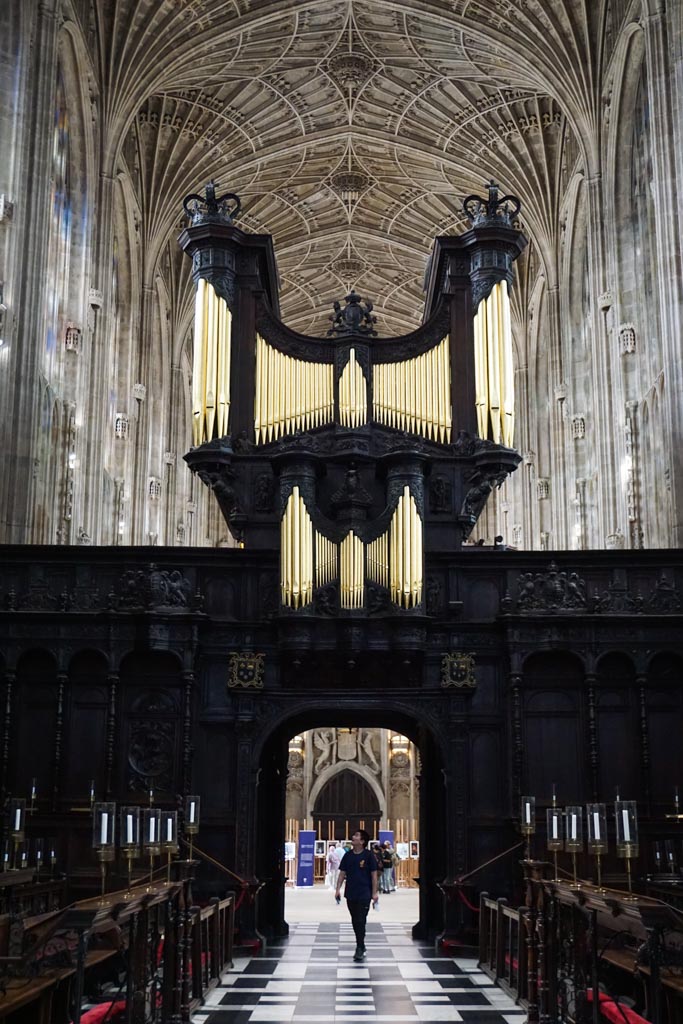
King’s College Bridge is also one of the most photogenic spots on your Cambridge 1 day itinerary.
Eat a famous Chelsea bun
Head over to Fitzbilies Cafe during your Cambridge day trip to try one of their famous Chelsea Buns. This lovely artisan bakery creates the most syrupy and soft Chelsea buns we’ve ever tried! Fitzbillies have been going since 1920 and you can find two of them in Cambridge city.

We also recommend Jack’s Gelato for their amazing ice creams! They had three vegan flavours when we visited, including dark chocolate!
Wander the beautiful streets of Cambridge
Amongst all of the history during your Cambridge 1 day itinerary, Cambridge is still a city with mainstream shops and beautiful cobbled streets. Our favourite streets in Cambridge are:
- Rose Crescent
- Trinity Lane
- Green Street
- Portugal Place
- Orchard Street
Cambridge is full of photogenic streets as the city dates back so far. There’s also cute bunting along some of the streets in the summer months.

If you like the sound of Cambridge, spend 3 days exploring Edinburgh, Scotland !
Visit the Round Church
Close to Portugal Street is the Round Church built in 1130. There are only four Round Churches in the UK and Cambridge is home to one of them. The architecture inside is remarkable and a great place to visit if you’re a fan of medieval times. There’s a small fee to enter.

See the views at Castle Mound
Located on the west side of River Cam , Castle Mound is another great place in Cambridge to see panoramic views of the city . The best part is, it’s free!
It only takes 1 minute to reach the top of the mound and you can see faint remains of Cambridge Castle that was built around 1068.
The best time to visit is at sunset , but on a 1 day Cambridge itinerary, there may not be a sunset while you are visiting.
Visit the Fitzwilliam Museum
There are numerous museums in Cambridge, too many to visit with 1 day in Cambridge! However, if you’d like to visit one, we recommend the Fitzwilliam Museum .
It’s a free museum to enter and it’s filled with Egyptian, Greek and Roman history along with huge oil paintings from all over the world. The building itself is pretty impressive and you can easily get lost in the maze of artefact s!

Find the Old Bicycle Shop
The Old Bicycle Shop is another place to visit on your one day in Cambridge and it’s also on the way back to the train station.
It’s actually now a restaurant serving delicious food, but its name comes from its past. The Old Bicycle Shop used to be named Howes Cycles and it’s been said that Charles Darwin bought a bicycle from here back in the 19th century .
You can really see the transition from the retro bike shop it used to be!
Explore the Botanical Garden
As you get closer to Cambridge train station you’ll notice a huge park called Cambridge University Botanic Garden . If you have time left on your 1 day Cambridge itinerary, visit the gardens for a lovely stroll.
The garden is filled with beautifully unique plant species and you can visit all year round, although summer is when the flowers are most colourful!
We ran out of time during our Cambridge itinerary because there’s so much to cover, but it was on our list! Now it’s on our list for our next Cambridge day trip from London!

Stem & Glory is a great option if you’re looking for dinner in Cambridge.
Alternative ideas for a Cambridge 1 day itinerary
Although we’ve created a jam-packed Cambridge one day itinerary, there’s always going to be more things to do in the city! Here’s a few more ideas if you have more than one day in Cambridge or some extra time!
- Polar Museum
- Walk over the Mathematical Bridge
- University of Zoology
- Relax on the Jesus Green – a beautiful park near the river!
- Visit more colleges at Cambridge University
- Kettle’s Yard – an art Gallery!
Where to stay in Cambridge
The best area to stay in Cambridge is in the Cambridge City Centre ! Cambridge is small, so anywhere within a 20-30 minute walk is a good place to stay.
YHA Cambridge £-££ – One of the most budget-friendly places to stay in Cambridge, near the train station – Find YHA on Booking.com here !
Gonville Hotel ££-£££ – This high-quality hotel is in the centre of Cambridge – Book Gonville Hotel here on Booking.com !
University Arms, Autograph Collection ££-£££ – Another luxury hotel in the heart of Cambridge – Book here on Booking.com !
Best Restaurants in Cambridge
There are some incredible places to eat around Cambridge, here’s a few of our recommendations:
- Stem & Glory ££ – are a well-presented plant-based restaurant near the train station in Cambridge!
- Tipsy Vegan ££ – The perfect place for lunch after Punting or for evening drinks.
- Fitzbillies £ – Famous Chelsea buns! yes, there’s a vegan option!
- Urban Butterfly £-££ – A delicious vegan cafe in Cambride!
- Africfood £ – At the local market in Cambridge!

How to get around Cambridge
Cambridge is a walkable city , so it’s easy to get around! There are multiple bus routes and even two train stations if you are staying overnight in the city. A Punting Tour is another great way to spend 1 day in Cambridge browsing some of the best sights from the water!
What to do in Cambridge at night
- Go on a Ghost Punting Tour
- Visit Cambridge Observatory (October to March)
- Relax, drink and dine at The Tipsy Vegan restaurant
- Have a cocktail at the Hidden Rooms
- Head to a pub!
How many days in Cambridge
Cambridge is a small city and it’s definitely possible to spend 1 day in Cambridge seeing the main highlights and learning about the history of the city. We recommend spending at least one day in the city, as an afternoon or half a day would be too rushed.
It’s also a great idea to spend a weekend in Cambridge as there’s enough activities to keep you busy! Most of the colleges cost money to enter, so bear that in mind when creating your Cambridge day trip.
If you’re staying more than 1 day in Cambridge, consider taking day trips to other cities in the UK such as a visit to Norfolk , Peterborough and Northampton.
What to pack for a 1 day in Cambridge
Here’s a few travel essentials that we bring on our trips, especially in the UK!
- A reusable water bottle – a must when travelling anywhere!
- Wireless earbuds – the best for long journeys in the UK.
- Comfortable day backpack – this one has so many compartments for organising!
- Portable power bank – charge your phone on the go.
- A compact umbrella – another must-have when visiting the UK.
- A raincoat – for the unpredictable UK weather.
- Packing cubes – if you’re staying more than one day in Cambridge, these are so helpful.
- A padlock – for any lockers.

Planning a 1 Day Cambridge Itinerary
Here are some helpful links to plan your Cambridge one day itinerary:
- Check for any public holidays on your date of visit ( Find out when the public holidays are )!
- Book your train tickets in advance on Trainline !
- If you’re taking the train, double-check for train strikes!
- Get Travel Insurance – Find out more here !
- Book your accommodation on Hostelworld here or on Booking.com here !
- Where to stay in Cambridge: YHA Cambridge – Book your stay here !
More guides in the United Kingdom :
- The Best 1 Day York Itinerary: Things To Do
- Edinburgh Itinerary: The Best 3 days in Edinburgh
- 1 day Highlands Road Trip from Edinburgh
- How to Climb Snowdon in Wales
- Top 20 Vegan Restaurants in Edinburgh, Scotland
- Brighton Itinerary: Weekend Itinerary
- Browse more English or Scottish posts!
Don’t forget about Travel Insurance! – SafetyWing Nomad Insurance
SafetyWing is a flexible monthly-rolling travel insurance to help you stay safe on your trip anywhere in the world.
That’s the end of our The Best 1 Day Cambridge Itinerary: Things To Do (2024) ! Enjoy your one day in Cambridge and if you need any more help planning – send us a message on Instagram (@thesunrisedreamers) or leave a comment below!
LIKE THIS POST? PIN IT FOR LATER & SHARE IT WITH OTHERS!

Amy & Dan are the founders of The Sunrise Dreamers. They are travellers from the UK who have been on the road since 2017 whilst living in places like England, Canada, Thailand and the Canary Islands. They share their knowledge of travelling the world with detailed travel guides and tips. They're experts in vegan travel and show their audience how to travel on a budget.
Similar Posts

How to Climb Yr Wyddfa from Pen-y-Pass: Snowdon (2024)
In this travel guide, we’ll share how to climb Yr Wyddfa from Pen-y-Pass which is also known as Snowdon! Whether…

Where to stay in Tenerife: 10 Best Areas To Stay
Wondering where to stay in Tenerife? Here’s our detailed travel guide on the best neighbourhoods and areas to stay in…

Kotor Itinerary: Best Things To Do In Kotor (2024)
In this 2 day Kotor itinerary, we’re going to show you the charming town of Kotor and all the best…
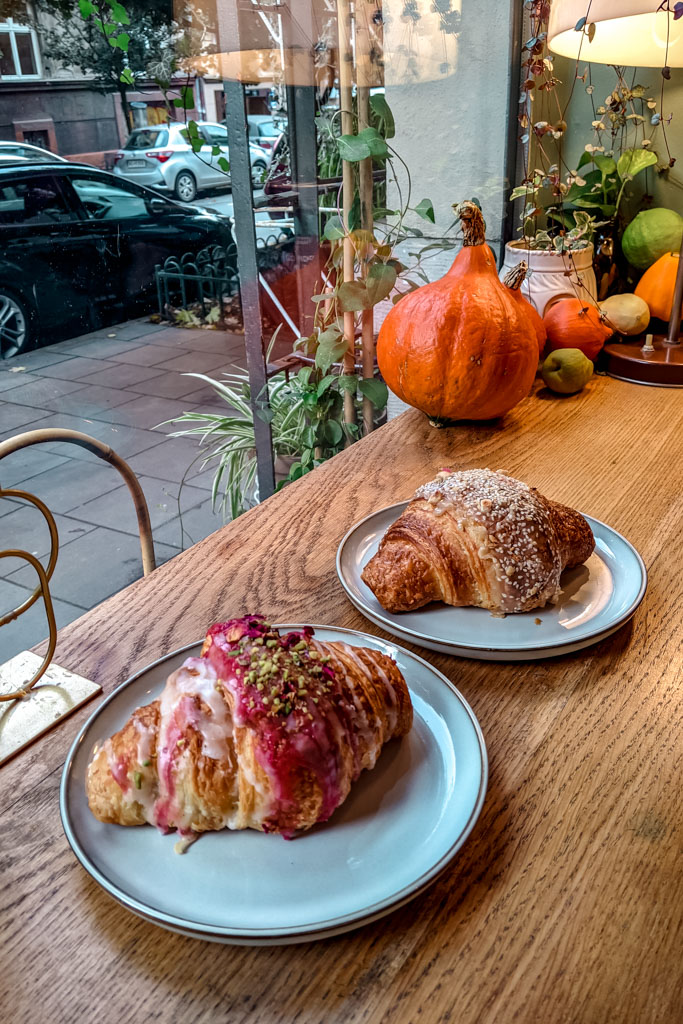
15+ Best Vegan Friendly Cities in Europe (2024)
Looking for vegan friendly places to visit in Europe? You’re in luck! Here’s our list of vegan friendly cities in…

7 Day Tenerife Itinerary: The Best Road Trip
Tenerife is the largest island in the Canary Islands and the perfect escape for anyone living in Europe during the…

The Best 3 Day Edinburgh Itinerary: Things To Do (2024)
Planning a 3 day Edinburgh itinerary? Here’s our guide on how to have the best getaway in the Scottish Capital….
Leave a Reply Cancel reply
Your email address will not be published. Required fields are marked *
Save my name, email, and website in this browser for the next time I comment.

Study at Cambridge
About the university, research at cambridge.
- For Cambridge students
- For our researchers
- Business and enterprise
- Colleges and Departments
- Email and phone search
- Give to Cambridge
- Museums and collections
- Events and open days
- Fees and finance
- Postgraduate courses
- How to apply
- Fees and funding
- Postgraduate events
- International students
- Continuing education
- Executive and professional education
- Courses in education
- How the University and Colleges work
- Visiting the University
- Annual reports
- Equality and diversity
- A global university
- Public engagement
- Cambridge at a glance
- How the University and Colleges work overview
- People overview
- Chancellor overview
- Former Chancellors
- Vice-Chancellor overview
- Former Vice-Chancellors
- Speeches overview
- List of speeches
- Pro-Vice-Chancellors
- Processes overview
- Honorary degrees overview
- The nomination and approval process
- Selected Honorands
- The ceremony
- Glossary of Cambridge terminology
- The University's mission and core values
- The University as a charity
- Cambridge University Endowment Fund overview
- The Investment Advisory Board
- Central bodies and main associated committees
- History overview
- Legacies of enslavement overview
- Vice-Chancellor’s response to the Legacies of Enslavement Advisory Group's report
- Annual reports overview
- 2022-23 highlights
- Financial statements 2022-23
- Previous reports
- Cambridge University Endowment Fund
- Legacies of enslavement
Welcome to Cambridge!
Welcome to Cambridge, home to more than 20,000 students from all walks of life and all corners of the world. Cambridge is rich in cultural diversity. You will find beautiful University and College buildings, museums and art galleries, extensive gardens and punts on the River Cam. A unique city centre small enough to explore on foot, and just a short walk from the train station.
Things to see and do at the University of Cambridge
The University of Cambridge encourages visitors to wear face coverings whilst enjoying our indoor spaces. Some buildings and facilities continue to operate free ticketing and reduced visitor numbers to ensure safe social distancing. Cambridge University Libraries are providing a blend of online, zero-contact and in-person services. Before you travel, check ahead to see if you need to book in advance.
You can find more information, including opening times and fees, at the following websites:
- Finding Departments and Faculties
- Visiting the Colleges
- Visiting Libraries
- Visiting Museums
- Access the Sports Centre
- What's on at the University
Information for prospective students
If you are thinking about applying to study at Cambridge, our open days and events offer opportunities to get a feel for the city and the University. You can find out more about admissions procedures, courses, facilities, student life within the collegiate University and ask any questions you might have.
Discover undergraduate open days and events
Find out more about Postgraduate visits and Open Day
Public events
See events open to the public, including the virtual ones, on our What's On website .
Discover our collections online
- See treasures of Cambridge University Library in high resolution
- Discover highlights from the Fitzwilliam Museum
- Visit Kettle’s Yard on a virtual tour or discover some of the collection’s objects in 360-degree views
- Watch videos about objects in the Museum of Classical Archaeology
- Explore the Polar Museum’s catalogue and the Museum of Archaeology and Anthropology's collection
- Find out about the history of science and its instruments from astrolabes to microscopes on the Whipple Museum website
- Get up close and personal with some spectacular specimens from the Museum of Zoology
- Get to know plants from the Botanic Garden chosen by the Head of Horticulture or see weekly wanders on YouTube
Disabled access
The University works in collaboration with AccesAble to enhance the existing provision of information on accessibility and the University estate for visitors.
These guides provide an excellent and accurate provision of information related to access and should prove a helpful resource for anyone wishing to study at or work at the University of Cambridge, or for those visiting the University and the city.
Find an accessibility guide
Connect with us

© 2024 University of Cambridge
- Contact the University
- Accessibility statement
- Freedom of information
- Privacy policy and cookies
- Statement on Modern Slavery
- Terms and conditions
- University A-Z
- Undergraduate
- Postgraduate
- Cambridge University Press & Assessment
- Research news
- About research at Cambridge
- Spotlight on...

The Bradfield Centre on Cambridge Science Park: Seven years of helping tech entrepreneurs to thrive
I n the seven years since it opened, The Bradfield Centre at the heart of Cambridge Science Park has carved out a reputation as a thriving tech hub – and a great place to visit.
Owned by Trinity College and operated by Mantle Space, the striking building is renowned not only for the successes of those companies that call it home, but for a lively programme of events that bring people from all over the Cambridge region through its doors.
“The mission is to provide scale-up space for tech start-ups,” says managing director James Parton. “The reason we do it is to see companies grow and become successful. When you look around and the place is packed and buzzing and you have a diversity of people, you know you’ve created a melting pot. Those are the two things that make us proud.”
The Bradfield Centre features 40,000 square feet of space, but only about three-quarters of that is let to tenants. The café, auditorium and collaboration spaces are critical parts of the building’s appeal.
“The building was purposefully designed to encourage collaboration between people,” says James. “We maintained a lot of open space. It was the right decision to forego the potential revenue generation from a space like the auditorium to support the community.
“It was always a big part of the original vision not only to provide services for members but an asset for the wider community to utilise.”
If you’re connected to the tech community in Cambridge, there is every chance you have visited the site even if your company is not based there.
“We’ve hosted well over 1,000 events and we estimate more than 35,000 have been to them,” continues James.
“Ninety per cent of the events we host in the auditorium are free of charge because we are committed to supporting the grass-roots tech community in Cambridge.
“Not-for-profit meet-up groups are the lifeblood of the tech community in Cambridge and we don’t charge them for the hire of the space. We want them to have a home in a tech environment with a built-in audience to help them grow too.
“It wasn’t unusual to have three events per day before Covid. That went down to zero overnight and it’s taken a good 18 months to come back. Since the turn of the year, we’ve got four or five regular meet-ups back, which is great.”
Among these is the Software Crafters Cambridge meet-up, the Amazon Web Services Cambridge user group and The Marketing Meetup organised by Joe Glover.
These meet-ups can be attended by members and non-members alike, adding to the mix of those coming into The Bradfield Centre.
It is home to 123 companies, with nearly 800 employees, and only a fraction are university spin-outs.
“We represent quite a diverse membership and a lot of people are coming from outside Cambridge into The Bradfield. If you’re a university spin-out, you would probably start at ideaSpace. As you raise more money and grow, you might come to The Bradfield two or three years later. The average age of companies here is about seven years. They are on the path to scaling. That’s what we see as our role – taking companies from six or seven people to 50, 60.
“A lot of the growth is organic, with members growing their existing office space within the building. We’re always moving things around. We plan for around 90 per cent occupancy as we need a bit of headroom. There is always an interesting capacity challenge!”
External data suggests current Bradfield Centre members have raised around $300million, although with not all funding announced publicly, that figure is probably an underestimate.
Morse Micro, an Australian-headquartered fabless semiconductor company working on wifi technology for the Internet of Things, raised $140m in 2022. And Gearset, which provides a Salesforce DevOps platform, raised $55m in the same year.
Gearset is by far The Bradfield Centre’s largest employer, with nearly 200 employees. A finalist in next month’s Cambridge Independent Science and Technology Awards , Gearset describes itself as Cambridge’s fastest-growing scale-up.
University spin-out Nyobolt , which provides high-power batteries with ultra-fast charging times, is another Bradfield Centre success story, having raised $10m while based there in 2021. It went on to raise a further $59m in 2022, and is now based at Evolution Business Park in Impington.
Another form of success was enjoyed by Spectral Edge , which was acquired by Apple in December 2019, having developed software for mobile phones that fuses multiple versions of a photograph together to improve image quality.
“Our membership mix is representative of what you would expect in Cambridge, given that we don’t have lab space,” says James.
Software as a service is the leading tech sector among The Bradfield Centre’s members. Medtech and biotech – typically on the machine learning / AI side – is also represented, along with web development, Internet of Things, gaming and more.
“It makes for an interesting community,” says James. “There are lots of interactions and collaborations.”
Days before we talk, Bradfield Centre member Cambridge Future Tech – a technology venture builder that is another finalist in our awards next month – began productive discussions with another company on site after hearing them talking.
“There was a serendipitous collision, which happens all the time,” says James. “There definitely is an advantage of being clustered together, but there’s not a science to it. It’s spontaneous.”
It is one of the reasons why there is still a filter on the membership at The Bradfield Centre.
“We turn away a lot of companies who don’t meet the tech criteria,” James reveals.
But in common with all the workplaces operated by Mantle Space in and around Cambridge, The Bradfield Centre has a varied offer for tenants.
“When Mantle Space took up operation of The Bradfield Centre , we introduced a virtual membership, which stood us in good stead during Covid,” notes James. “Some companies, certainly at the earlier stages, are still working fully remotely but having a Science Park address is valuable.
“The Home-Flexi product is essentially a co-working product for people coming in a couple of days a week. Then we offer permanent desks and private offices, which start at three people.”
Mantle Space – sponsor of Software Company of the Year at the Science and Technology Awards – also operates The Officers’ Mess at Duxford and at Nine Hills Road and 95 Regent Street in Cambridge, among other sites.
James says there is something unique about The Bradfield Centre.
“When I look back over the last five or six years, it is this hybrid model, where we have one foot inside the university ecosystem and one foot out, that is the root of our success,” he suggests.
“Because Trinity owns the building, that gives The Bradfield a seat at the table in university conversations. We’re seen as part of the fabric of the university even though technically we’re not a university building.
“We don’t carry the university badge. But through the relationship with Trinity, we’re part of the inner circle, with offers like The Trinity Bradfield Prize that have helped to reinforce our commitment and support for entrepreneurship within the university.
“At the same time, we have one foot out. As a commercial operator, we can operate with agility and we understand the market, both in the city and region. It gives us commercial acumen along with the advantages of being part of the university network as well. It’s the best of both worlds.”
For members, The Bradfield is able to call on a broad network of expertise and support.
“80 per cent of companies need some sort of help,” says James. “In priority order, that is talent, business development and funding. We have put together a roster of partners we can bring in. None of these is a commercial relationship – we don’t get paid for introductions. Transparency and neutrality are very important.
“Since we’ve opened, a significant development has been our partnership with Barclays Eagle Labs. We are part of the network and this is now classed as an Eagle Lab. Partnering with them gives us access to their entire network.
“We work with Growth Works and the Growth Hub, another avenue for business support. We work closely with Innovate UK, especially on the grant funding side. We have relationships with all the tech providers, in terms of support, credits and funding. We work with all the service providers – law firms, venture capital firms, accountants. We also work with Cambridge Angels and we are an angel hub for the UK Business Angels Association.
“There are so many offers for entrepreneurship support – I counted 40 programmes running at the University of Cambridge. So we don’t need to add more into the mix. My focus is on how we promote and support those programmes, rather than duplicating them.
“We have built a really good relationship with The Entrepreneurship Centre at Cambridge Judge Business School. They opened an office here during the pandemic and they’ve continued to run Enterprise Tech from The Bradfield Centre.”
The Bradfield also supports student entrepreneurship through its flagship programme, The Trinity Bradfield Prize.
“It’s been going five years now. We’ve had nearly 400 teams apply. We’ve awarded £90,000 in cash prizes with no strings attached,” says James.
Winners get a mix of mentorship, workshops and training and it has helped previous companies like food waste recycling pioneer Vuala make real progress. Vuala – another Science and Technology Awards finalist – has already trialled its innovative system at The Bradfield.
But James stresses that members at The Bradfield Centre benefit from more than just business support.
“The pandemic reinforced how there is a big social element to what we are doing within the building,” he says. “It’s so easy for tech companies to work remotely, but we’re seeing that founders are always thinking about reasons why people should come into the office.
“Things like the activities we offer, the café and the social experience are a big reason to come into the office.
“Some people don’t have a home environment conducive to working. Eating, sleeping and working in the same room all day isn’t good for anyone. For those who can work from home, we are coming up with reasons to come in, which is good for the individual, the team and company culture.”
One of the attractions for those coming into work is the atmosphere.
“We are open to the general public, anyone can walk in,” notes James. “We have always tried to have that open, inclusive, welcoming culture and atmosphere, whereas the majority of places are membership only.”
The café’s food and drink offer is a major draw for people around the wider Science Park and beyond.
“There is diversity here – you could have someone like a VC sitting in here. Then we have dog walkers, or people bringing kids in, especially in half-term. I love it. It makes for such a stimulating environment. It’s creative, rather than stuffy. Everyone talks about the buzz that the building has and I think it’s those elements that make it feel different. It’s an eclectic mix,” says James.
You might spot the Cambridge Independent’s very own business correspondent, Mike Scialom, and his dog, Tilly, working from The Bradfield Centre on some days.
“Having dogs in the building makes it feel friendly and welcoming,” says James.
It adds up to a real deep tech success story, which will no doubt be reflected when the final report is written on its role as part of the government’s University Enterprise Zones (UEZ) pilot.
“We’ve managed to run it profitably for Trinity, so it’s been a good business but it’s also good for membership. The competition is relentless and there are competitors coming in all the time. Nothing stands still, we can’t ever get complacent,” says James.
“But it’s always down to the people. The building is spectacular – it’s a beautiful place to work – but without the people to encourage creativity, build the atmosphere, do the social side, it would be nothing. It’s very hard to create a culture and atmosphere and that’s where we put the focus and the effort.”
Playing a role in the wider community
The Bradfield Centre has increasingly been working on its broader role in the community, working with a range of partners.
“In the last 12 to 18 months, we’ve started to focus on our role in Cambridge,” says James.
Among those it is working with are coding academy Tech Educators, from Norwich.
“What makes them different is they have relationships with the Combined Authority, meaning they have 30 fully-funded places. Their recruitment and marketing is targeted at people who haven’t gone through a traditional education path and haven’t been to university. They might be trying to break into tech, or be reskilling mid-career. We are their Cambridge campus and their graduations are in the auditorium.”
Meanwhile, Curious Clubhouse from Inspire 2 Ignite is providing alternative provision for kids struggling with mainstream schools.
“They have created a programme themed around entrepreneurship – taking responsibility for your own destiny. We love that and it fits so well with the ethos of The Bradfield,” explains James.
“Once a week they come here to be immersed in an entrepreneurial environment. We are all aware of the wealth gap in the city. The kids they work with benefit from that aspiration. There’s nothing stopping you starting your own business.”
The Bradfield Centre also supports Cambridge Pride and backed the Cambridge Half Marathon , and family charity The Red Hen Project also works on site.
It is taking environmental responsibility seriously too, with 100 per cent renewable energy, eliminating all plastic in the café and achieving BREEAM certification for sustainability. Even the coffee beans on site, from Kickstart Coffee , raise money to support schools in Uganda.
“We are taking the sustainability side really seriously,” says James.
Supporting the Cambridge Independent Science and Technology Awards 2024
Mantle Space , operator of The Bradfield Centre, is sponsoring Software Company of the Year at the 2024 Cambridge Independent Science and Technology Awards, taking place on 16 May at Hinxton Hall Conference Centre. Finalists get two free tickets each.
A limited number of additional tickets are on sale for the awards, which feature a networking reception with leading lights from science and tech.
Visit Eventbrite to buy tickets and see the full list of finalists hoping to win on the night.
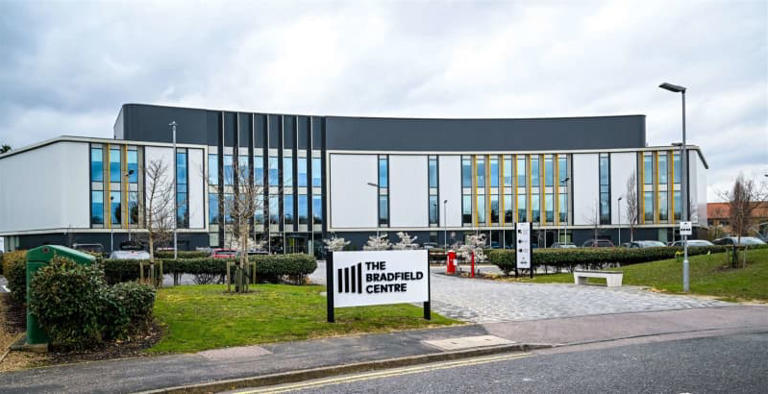

Study at Cambridge
About the university, research at cambridge.
- Undergraduate courses
- Events and open days
- Fees and finance
- Postgraduate courses
- How to apply
- Postgraduate events
- Fees and funding
International students
- Continuing education
- Executive and professional education
- Courses in education
- How the University and Colleges work
- Term dates and calendars
- Visiting the University
- Annual reports
- Equality and diversity
- A global university
- Public engagement
- Give to Cambridge
- For Cambridge students
- For our researchers
- Business and enterprise
- Colleges & departments
- Email & phone search
- Museums & collections
- Undergraduate Study
- Student life overview
- Why Cambridge
- Accommodation
- Sport and societies
- Courses overview
- Choosing a course
- How you will learn
- Careers and graduate prospects
- Subject A-Z
- Colleges overview
- What is a College?
- Choosing a College
- College contacts
- Area links scheme
- Finance overview
- Tuition fees
- Living costs
- Financial support
- Music awards
- Applying overview
- Application timeline
- Before you apply
- After you apply
- International overview
- Chat with our students
- Why Cambridge?
- What can I study?
- Entry requirements
- Tuition fees and costs
- International visits and events
- Visas and immigration
- Year abroad
- Get in touch!
- Open Days and Events overview
- Upcoming events
- Cambridge Open Days
- Virtual Tour
- Think Cambridge
- Applicant Webinar Series
- Subject Masterclasses
- Teachers and advisers' events
- HE fairs and exhibitions
- Find out more overview
- Sign up to our Newsletter
- Widening participation
Parents and supporters
Teachers and advisers
- Getting here
- Why Cambridge overview
- Study facilities and libraries
- Cambridge explained
- Support overview
- College welfare
Disabled students
Mature students
- Counselling
- Care leavers overview
- Realise student snapshot
- Travel Fund
- Young carers
- Student parents and childcare
- Estranged students
- Area links scheme overview
- East Midlands overview
- Leicester City
- Leicestershire
- Lincolnshire
- Northamptonshire
- Nottinghamshire
- East of England overview
- Bedfordshire
- Cambridgeshire
- Hertfordshire
- Peterborough
- Southend-on-Sea
- Greater London overview
- Barking and Dagenham
- City of London
- City of Westminster
- Hammersmith and Fulham
- Kensington and Chelsea
- Tower Hamlets
- Waltham Forest
- North East overview
- Middlesbrough
- North Tyneside
- Northumberland
- Redcar and Cleveland
- South Tyneside
- Stockton-on-Tees
- North West overview
- Blackburn with Darwen
- Telford and Wrekin
- Northern Ireland
- South East overview
- Bracknell Forest
- Milton Keynes
- Oxfordshire
- Southampton
- Isle of Wight
- Buckinghamshire
- West Berkshire
- South West overview
- Bath and North East Somerset
- Bournemouth
- Gloucestershire
- North Somerset
- South Gloucestershire
- Wales overview
- North Wales
- Mid and South Wales
- West Midlands overview
- Herefordshire
- Staffordshire
- Warwickshire
- Wolverhampton
- Worcestershire
- Yorkshire and Humber overview
- East Yorkshire
- Huddersfield and Kirklees
- Kingston-upon-Hull
- North East Lincolnshire
- North Lincolnshire
- North Yorkshire
- Isle of Man
- Living costs overview
- Study costs
- Financial support overview
- Cambridge financial support
- Government financial support
- Family contribution
- Outreach Scholarships overview
- Stormzy Scholarship
- Formula 1 Scholarship
- Geography Scholarship
- Student Funding and Sharia Law
- Music awards overview
- Choral awards overview
- Instrumental awards overview
- Organ scholarships overview
- College vacancies and course restrictions
- When are the auditions and interviews?
- What do the Organ Trials involve?
- How do I apply?
- Further information
- Choosing high school subjects
- Improve your application
- Entry requirements overview
- Qualifications we accept
- Sixth Term Exam (STEP)
- International entry requirements
- Application statistics
- Mature student applications
- Second undergraduate degrees
- UCAS application
- Admission tests overview
- Clinical aptitude test (UCAT)
- Law test (LNAT)
- Engineering and Science test (ESAT)
- Mathematics test (TMUA)
- College admission assessments
- My Cambridge Application
- Disruption to your studies
- Written work and portfolios
- Cambridge interviews overview
- Prepare for an interview
- Application decisions overview
- Admissions Policy
- Unspent criminal convictions
- Contextual data
- Outcome of your application overview
- Terms of Admission
- Admissions complaints
- After you get your exam results overview
- Information for new students
- Applying for reconsideration overview
- Reconsideration eligibility criteria
- Tuition fees and costs overview
- International financial support
- Tuition fee status
- International visits and events overview
- International webinar series
- Teachers and advisers' events overview
- Teachers and Advisers' Webinars
- Teachers and Advisers' Conference
- Widening participation overview
- Access and Participation Plans
- Insight Discover
- Insight Explore
- Sutton Trust Summer Schools
- Apply: Cambridge
- Safeguarding
- Parents and supporters overview
- Parents' Newsletter
- Teachers and advisers overview
- How similar are Oxford and Cambridge?
- Helping students prepare
- School/college reference
- Teachers' Newsletter
- Events for Teachers and Advisers
- Inspiring Educator Awards
History, BA (Hons)
- Student life
- International
- Open Days and Events
- Find out more
History at Cambridge
History at Cambridge gives you the opportunity to explore the past from the ancient world to the present day.
Choose from a range of different topics that interest you, from politics in the Roman Republic to material culture in the Ottoman Empire and neoliberalism in modern Britain and America.
History at Cambridge
This course is very broad. You can study a range of different subjects and experiment with different historical approaches.
You will explore the past from many different angles, as well as the interaction between history and other disciplines, including:
- anthropology
- archaeology
You’ll also get to study specialist papers and work with varied source materials, such as:
- Hollywood movies
- Middle Eastern newspapers
- medieval plague records
We’ll also encourage you to study a foreign language through our Language Centre .
Teaching and facilities
Our department is one of the largest and most renowned history departments in the world.
You will be taught by academics who are active researchers. They publish books and scholarly articles, and write and speak regularly for the wider public and media.
Our excellent facilities include:
- Seeley Collection, with 95,000 books, periodicals, theses and an audio-visual collection
- museums around the university, providing access to an even wider range of sources, unlocking the study of art, material culture, and the history of science
You'll also have access to our impressive Cambridge University Library, one of the world’s oldest university libraries.
Course costs
When you go to university, you’ll need to consider two main costs – your tuition fees and your living costs (sometimes referred to as maintenance costs).
Your living costs will include costs related to your studies that are not covered by your tuition fees. There are some general study costs that will apply for all students – you can find details of these costs here .
Other additional course costs for History are detailed below. If you have any queries about these costs, please contact the Department.
Optional dissertation costs
- Some dissertation projects require travel to archives outside Cambridge which may incur travel costs. The Faculty provides limited support based on academic and financial need. Colleges often also have funds available to support research projects. The dissertation is an optional component of the course and it's possible (and quite common) to devise projects for which the research can be conducted entirely online and/or within Cambridge.
Your future career
As a Cambridge history graduate you’ll have a range of skills that are attractive to employers.
You’ll have the ability to work independently, to evaluate evidence, and to present arguments clearly and persuasively.
In the past, our graduates have secured rewarding jobs across different sectors, including:
- journalism
- broadcasting
- consultancy
- public administration
Teaching is provided through a mixture of lectures, seminars and small-group supervisions.
You will usually have 5 to 6 hours of lectures and classes each week.
You will also have regular supervisions, for which you’ll usually write an essay. This will give you the opportunity to debate and develop your ideas with an expert in the field.
You’ll be assessed through examination and coursework, including essays and book reviews. There is also an optional dissertation in the third year.
You won't usually be able to resit any of your exams.
Year 1 (Part IA)
You take 5 papers:
- 2 outline papers, which usually cover a long period and broad geographical area. You choose 2 papers from a list of 11, ranging over Britain and Europe, the Americas, Africa and Asia
- 1 sources paper, where you examine a body of primary material on a particular historical theme, issue, or event. You choose one paper from a range of options which vary each year. Typical examples of options may include Travel and Trade in the Medieval World, Globalisation in Nineteenth-Century China, and Arab Intellectual History
- Introduction to Historical Thinking, which introduces methods and debates by examining a single work of history that has influenced the discipline
- Historical Skills, where you focus on research skills essential in History, such as the use of archives, digital sources, and oral history, as well as quantitative approaches
Year 2 (Part IB)
You take 4 papers:
- 2 topic papers that explore focused areas of historical knowledge in depth. The topics available each year may vary. Topic options may include Culture and Power in the Ancient Mediterranean, Nature and Knowledge c.1500-1800, and Caribbean History
- 1 research project where you undertake your own historical research. Each project covers analytical and conceptual features of a particular area of history, and offers guidance on the methodologies and skills needed to research it
- Historical Thinking II, where you broaden your knowledge of different historiographical approaches and methods
Year 3 (Part II)
You take 5 papers.
These include:
- a special subject, which counts as two papers. This is an in-depth study of a historical period, process or problem, using primary sources. Topics on offer vary year to year, but currently include heresy in medieval southern France, memory in early modern England, and religion and nationalism in post-1948 Zimbabwe
- Historical Thinking III, where you have the chance to reflect critically on major historical concepts encountered throughout your degree
For your 2 remaining papers, you take either:
- 2 advanced topic papers, where you explore a complex theme at the forefront of historical scholarship. Topics change from year to year, but currently include the history of political thought, the Indian sub-continent from the late 18th century, and consumer culture in the United States
- 1 advanced topic paper and a dissertation of 10,000 words on a topic of your choice. Recent examples of dissertation topics include 10th-century Byzantine political culture, 19th-century Mauritian elites, and community life on Sheffield's Park Hill estate
For further information about this course and the papers you can take see the Faculty of History website .
Changing course
It’s really important to think carefully about which course you want to study before you apply.
In rare cases, it may be possible to change course once you’ve joined the University. You will usually have to get agreement from your College and the relevant departments. It’s not guaranteed that your course change will be approved.
You might also have to:
- take part in an interview
- complete an admissions test
- produce some written work
- achieve a particular grade in your current studies
- do some catch-up work
- start your new course from the beginning
For more information visit the Faculty website .
You can also apply to change to:
- Management Studies at the Judge Business School
You can't apply to this course until you're at Cambridge. You would usually apply when you have completed 1 year or more of your original Cambridge course.
You should contact your College’s Admissions Office if you’re thinking of changing your course. They will be able to give you advice and explain how changing courses works.
Minimum offer level
A level: A*AA IB: 41-42 points, with 776 at Higher Level Other qualifications : Check which other qualifications we accept .
Subject requirements
To apply to any of our Colleges for History, you will need A level/IB Higher Level (or the equivalent) in:
If you’re not taking History, but are able to demonstrate that you have developed other, equivalent skills by taking other relevant subjects, or through independent subject exploration, you should contact the admissions office of the College to which you are considering applying for advice.
If you apply to the following Colleges they will usually require an A*/7 in History:
- Lucy Cavendish
This may also be a condition of your offer at other Colleges.
These subject requirements are provisional for 2025 entry. Please check back in April 2024 for confirmed details.
See Entrance requirements and Choosing your post-16 subjects for general guidance and conditions of entry.
What History students have studied
Most History students (who had studied A levels and started at Cambridge in 2017-19) achieved at least A*A*A (68% of entrants).
Nearly all of these students had taken History (99%). Other common subjects
- English (Language, Language & Literature, or Literature)
- Mathematics
The majority of students who studied IB achieved at least 43 points overall.
Check our advice on choosing your high school subjects . You should also check if there are any required subjects for your course when you apply.
Typical History entrants (2017-2019)
Offers achieved:
- the majority of IB entrants achieved at least 43 points overall and/or grades 777 at Higher Level.
A Level subjects studied:
- History 99%
- English (Language, Language & Literature, or Literature) 58%
- a language 29%
- Mathematics 28%
Admission assessment
If you’re shortlisted for interview, you may need to take a written assessment. Please check back in April 2024 for details. If an assessment is required, you will not need to register in advance and the Colleges will provide details directly to you.
If you applied for 2024 entry in the March application round , please check the College Admission Assessments page for more information and example papers.
Submitted work
Applicants to all Colleges are required to submit 2 pieces of written work prior to interview.
Offers above the minimum requirement
The minimum offer level and subject requirements outline the minimum you'll usually need to achieve to get an offer from Cambridge.
In some cases, you'll get a higher or more challenging offer. Colleges set higher offer requirements for a range of reasons. If you'd like to find out more about why we do this, check the information about offers above the minimum requirement on the entry requirements page.
Some Colleges usually make offers above the minimum offer level. Find out more on our qualifications page .
All undergraduate admissions decisions are the responsibility of the Cambridge Colleges. Please contact the relevant College admissions office if you have any queries.
Discover your department or faculty
- Visit the Faculty of History website - The Faculty of History website has more information about this course, facilities, people and research.
Explore our Colleges
- Find out how Colleges work - A College is where you’ll live, eat and socialise. It’s also where you’ll have teaching in a small group, known as supervisions.
- How to choose a Cambridge College that's right for you - If you think you know which course you’d like to study, it’s time to choose a College.
Visit us on open day
- Book an open day - Get a feel for the city and the University.
- Find an event - We offer a range of events where you can find out more about Cambridge, Colleges, and your course. Many of our events have hybrid options so you can join us virtually.
Find out how to apply
- Find out how to apply and how our admissions processes work - Our admissions process is slightly different to other universities. We’ve put together a handy guide to tell you everything you need to know about applying to study at Cambridge.
- Improve your application - Supercurricular activities are a great way to engage with your chosen subject outside of school or college.
Discover Uni data
Contextual information.
Discover Uni allows you to compare information about individual courses at different higher education institutions. This can be a useful method of considering your options and what course may suit you best.
However, please note that superficially similar courses often have very different structures and objectives, and that the teaching, support and learning environment that best suits you can only be determined by identifying your own interests, needs, expectations and goals, and comparing them with detailed institution- and course-specific information.
We recommend that you look thoroughly at the course and University information contained on these webpages and consider coming to visit us on an Open Day , rather than relying solely on statistical comparison.
You may find the following notes helpful when considering information presented by Discover Uni.
- Discover Uni relies on superficially similar courses being coded in the same way. Whilst this works on one level, it may lead to some anomalies. For example, Music courses and Music Technology courses can have exactly the same code despite being very different programmes with quite distinct educational and career outcomes. Any course which combines several disciplines (as many courses at Cambridge do) tends to be compared nationally with courses in just one of those disciplines, and in such cases the Discover Uni comparison may not be an accurate or fair reflection of the reality of either. For example, you may find that when considering a degree which embraces a range of disciplines such as biology, physics, chemistry and geology (for instance, Natural Sciences at Cambridge), the comparison provided is with courses at other institutions that primarily focus on just one (or a smaller combination) of those subjects.You may therefore find that not all elements of the Cambridge degree are represented in the Discover Uni data.
- Some contextual data linked from other surveys, such as the National Student Survey (NSS) or the Destination of Leavers in Higher Education (DLHE), may not be available or may be aggregated across several courses or several years due to small sample sizes. When using the data to inform your course choice, it is important to ensure you understand how it has been processed prior to its presentation. Discover Uni offers some explanatory information about how the contextual data is collated, and how it may be used, which you can view here: https://discoveruni.gov.uk/about-our-data/ .
- Discover Uni draws on national data to provide average salaries and employment/continuation data. Whilst starting salaries can be a useful measure, they do not give any sense of career trajectory or take account of the voluntary/low paid work that many graduates undertake initially in order to gain valuable experience necessary/advantageous for later career progression. Discover Uni is currently piloting use of the Longitudinal Education Outcomes (LEO) data to demonstrate possible career progression; it is important to note that this is experimental and its use may be modified as it embeds.
The above list is not exhaustive and there may be other important factors that are relevant to the choices that you are making, but we hope that this will be a useful starting point to help you delve deeper than the face value of the Discover Uni data.
Key information
All Colleges
Cambridge Admissions Office
- Cambridge Admissions Office Student Services Centre New Museums Site Cambridge CB2 3PT
- 01223 333308
- [email protected]
- www.cao.cam.ac.uk
About this site
Our website
Privacy policy
Participant data and booking policies
Information for
Care leavers and estranged students
© 2024 University of Cambridge
- Contact the University
- Accessibility
- Freedom of information
- Privacy policy and cookies
- Statement on Modern Slavery
- Terms and conditions
- University A-Z
- Undergraduate
- Postgraduate
- Research news
- About research at Cambridge
- Spotlight on...
Spectator theatre critic boasts of using prostitute after arousal at lecturing professor's "blonde hair"
Lloyd Evans, a theatre critic for The Spectator, said he was "desperate" to speak to "beautiful historian" Professor Lea Ypi after she gave a lecture at Darwin College, but was unable to and visited a prostitute for an "already arranged social rendezvous".
By Kieren Williams, news reporter
Friday 19 April 2024 15:49, UK

The Spectator's theatre critic has boasted of visiting a prostitute in an article after he became aroused by a "beautiful historian" giving a lecture.
Lloyd Evans was widely condemned for the column - with some asking why it was ever published.
In it, he describes heading to Cambridge University for a lecture by Lea Ypi, a professor in political theory, who Mr Evans describes as a "beautiful historian".
While she lectured about Kant and revolutions, Mr Evans said he was "absorbed far more" by her "blonde hair spilling over her shoulders ... than her political reflections."
He added: "I was desperate to speak to her afterwards, but I had no way to orchestrate a meeting."
Mr Evans then goes on to write that he headed for the "rougher end of Cambridge" for an "already arranged social rendezvous".
There he met a "petite, black-haired and buxom" woman.
More on University Of Cambridge

Pro-Palestine protesters target Lord Balfour painting at Trinity College in Cambridge
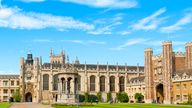
Drug dealer who called himself a pharmacist jailed after death of Cambridge University student Keshava Iyengar

Charles Darwin's notebooks to go on display after going missing for 20 years
Related Topics:
- University of Cambridge
In the piece published by The Spectator entitled 'My (surprisingly) decent proposal' he wrote: "I lay naked on the couch and she rubbed hot wax into my shoulders.
"A moment later she ordered me to flip on to my back as she dimmed the lights and raised one eyebrow at me suggestively. This was the cue for the negotiations."
The article has been met by condemnation, as well as mistakenly claiming the lecture was at Downing College - when it was at Darwin College.
Darwin College criticised the article, calling it "crude and offensive".
They said: "Absolutely appalled to see this Lea. Your fascinating, beautifully crafted lecture was a hugely appreciated highlight of the College's cultural year, and we hope your memory of the event won't be tainted by an audience member using it to write something so crude and offensive."
Professor Ypi herself shared screenshots of the article on X, formerly known as Twitter, and said: "Advice for scholars: next time you lecture on Kant and revolutions at "Downing" (@DarwinCollege) Cambridge, make sure your hair is neatly tied and that you're not blonde. Or else your research impact will be on the @spectator libido section."
Be the first to get Breaking News
Install the Sky News app for free

Keep up with all the latest news from the UK and around the world by following Sky News
Read more from Sky News: Boris Johnson breached rules being 'evasive' over hedge fun links All the Tory MPs suspended since Sunak became PM Masked gunman 'fired wildly' at car on busy London street
Fellow academics were quick to condemn the article and express support.
Some demanded an apology from the magazine, as one called it "unbelievably weird and gross".
However, when approached by The Telegraph, Mr Evans seemed to express no regret over the incident.
He said: "I just find clever and articulate women very attractive and she [Ypi] was physically attractive and that made me feel a bit lonely and then I ended up in a sauna bath.
"I was trying to encompass both poles of life, between the intellectual high-flying political philosophy and a sexual encounter.
"Of the two I found the sexual encounter much more satisfying and enjoyable."
The Spectator has been approached for comment.
Related Topics

IMAGES
VIDEO
COMMENTS
Find hundreds of things to do, places to eat, events to enjoy and must see attractions in Cambridge and the surrounding area. Learn more about the city's history, culture, discoveries, shopping, golf, walking and more.
Cambridge is 30 miles (48 kilometres) from Stansted Airport which serves more than 140 global destinations and 38 miles (61 kilometres) from London Luton Airport.. The direct train from Stansted Airport to Cambridge takes around 30 minuets with Greater Anglia.Coach travel is also available from Stansted to Cambridge, taking around 40 minuets with National Express.
It's less a clock (although it is accurate every once in a while) and more of an art piece. The marvellously creepy insect straddling it appears to 'eat' time - a reminder that we don't ...
Cambridge is a vibrant, modern city with a colourful history that attracts visitors from around the world. There are shopping centres and markets, museums, parks and open spaces, and much more. And you'll be spoilt for choice of places to eat and drink, and places to stay. Visit Cambridge. Visit Cambridge is the city's official destination ...
Cambridge tours. We've partnered with award-winning providers to offer tours and activites that showcase the best of Cambridge. When you visit Cambridge, you'll be greeted by guides that love the area and can't wait to share its history with you. They can tailor your experience to your needs and interests, and no two tours are the same.
Beyond Cambridge. Breathe in a land of lazy waterways, rolling countryside, majestic cathedrals, magnificent stately homes, bustling market towns and quaint villages. Discover a whole new shopping experience in quirky stores and exquisite boutiques tucked away along cobbled streets. Climb grand sweeping staircases in the homes of the aristocracy.
This is one of 26 overseas American national shrines managed by American Battle Monuments Commission (ABMC), which is America's preeminent sentinel of memory. Come visit this pristine memorial near Cambridge, and learn of America's experience in the UK from 1942-1945. The visitor experience will reveal the true depths of our "Special Relationship."
Cambridge is exceptionally beautiful, and arguably more accessible than Oxford. ... so check the latest advice before you visit. ... These 16 cities, parks and other incredible sights encompass the breadth, beauty and vitality of England. Activities. 7 of the best Valentine's Day destinations for every kind of couple. Jan 20, 2023 • 4 min read.
This is one of 26 overseas American national shrines managed by American Battle Monuments Commission (ABMC), which is America's preeminent sentinel of memory. Come visit this pristine memorial near Cambridge, and learn of America's experience in the UK from 1942-1945. The visitor experience will reveal the true depths of our "Special Relationship."
An original play by Sean Lang, performed by Combined Actors of Cambridge. Enjoy an intriguing tale of mysteries and ghosts that spans the centuries from the French Revolution, through Edwardian England and 1960's Oxford. A haunting story of ghosts, intrigue, time travel - and murder. 16/04/2024 - 20/04/2024.
Grand Arcade, in centre (953 spaces) Monday to Sunday, 24 hours. Ranges from £2.50 - £30.40, peak time charges apply. Evenings and overnight: £1.20 per hour. First 3 hours free for Blue Badge holders. Find more information on parking and charges at the Cambridge City Council website.
Visit the Cambridge University Colleges. Founded in 1209, Cambridge University is the second oldest university in the English speaking world (Oxford university is the oldest, see our guide to visiting Oxford here).The University itself consists of 31 colleges, each of which provides accommodation and manages the entry and tuition of their students.
Cambridge travel guide - Visiting Cambridge FAQ's When is the best time of year to visit Cambridge? Cambridge is one of England's most beautiful cities and a wonderful destination whatever time of year you plan to visit. During the summer months, Cambridge is the perfect destination if you would like to try punting.
5. Cambridge University Botanic Garden. Covering an area of some 40 acres, a visit to Cambridge University Botanic Garden is a must-do for gardening enthusiasts. Established in 1831, the garden showcases an impressive collection of more than 8,000 species of plants from across the globe.
It's better known as Newton's Apple Tree. Legend has it the tree was grown from a cutting of the same tree that dropped an apple and inspired the theory of gravity. 5. Visit the Famous Clock at Corpus Christi College. Dating back to 1352, one of the oldest university colleges in Cambridge is Corpus Christi College.
5 - PUNT ALONG THE BACKS. Punting along the backs is something of a tourist rite of passage at Cambridge and one of our favourite outdoor activities in the UK.. You can hire a punt, grab a quant pole and do it yourself, or you sit back, relax and take a guided punting tour.. On the guided route, prepare to float effortlessly past the backs of the colleges, under the Bridge of Sighs and past ...
Visit the Eagle. Right around the corner from the Corpus Clock is the famous Eagle Pub. We noticed a few Guided Historic Walking Tours around this area of Cambridge, as there's a lot of history to learn!. As well as being one of the oldest pubs in Cambridge, The Eagle Pub was the place where Francis Crick and James Watson announced their discovery of DNA (double helix structure DNA).
Day 1. 10:00 Cambridge University Botanic Garden. Enjoy this 40 acre botanic garden with over 8,000 plants species from around the world, a lake, trails and grass maze. . 11 mins. Solipsist~commonswiki. 11:40 Fitzwilliam Museum. A museum is housed in a magnificent neo-classical building and holds collections of iconic art work and artifacts. .
Watch on. Welcome to Cambridge, home to more than 20,000 students from all walks of life and all corners of the world. Cambridge is rich in cultural diversity. You will find beautiful University and College buildings, museums and art galleries, extensive gardens and punts on the River Cam. A unique city centre small enough to explore on foot ...
Story by [email protected] (Paul Brackley) • 34m • 10 min read. In the seven years since it opened, The Bradfield Centre at the heart of Cambridge Science Park has carved out a ...
What History students have studied. Most History students (who had studied A levels and started at Cambridge in 2017-19) achieved at least A*A*A (68% of entrants). Nearly all of these students had taken History (99%). Other common subjects. English (Language, Language & Literature, or Literature) languages.
Friday 19 April 2024 15:49, UK. Image: Lloyd Evans, theatre critic at The Spectator ... In it, he describes heading to Cambridge University for a lecture by Lea Ypi, ...